Quick filters:
G griseus Stock Photos and Images
 Aloatran Gentle Lemur or Bandro (Hapalemur griseus aloatrensis). Restricted to Lake Alaotra area, northeast Madagascar. Stock Photohttps://www.alamy.com/image-license-details/?v=1https://www.alamy.com/aloatran-gentle-lemur-or-bandro-hapalemur-griseus-aloatrensis-restricted-image62273642.html
Aloatran Gentle Lemur or Bandro (Hapalemur griseus aloatrensis). Restricted to Lake Alaotra area, northeast Madagascar. Stock Photohttps://www.alamy.com/image-license-details/?v=1https://www.alamy.com/aloatran-gentle-lemur-or-bandro-hapalemur-griseus-aloatrensis-restricted-image62273642.htmlRMDH8PJJ–Aloatran Gentle Lemur or Bandro (Hapalemur griseus aloatrensis). Restricted to Lake Alaotra area, northeast Madagascar.
 The South American Gray Fox, Lycalopex griseus, is also known as the chilla, the gray zorro or the Patagonia Fox. They are commonly found throughout P Stock Photohttps://www.alamy.com/image-license-details/?v=1https://www.alamy.com/the-south-american-gray-fox-lycalopex-griseus-is-also-known-as-the-chilla-the-gray-zorro-or-the-patagonia-fox-they-are-commonly-found-throughout-p-image371287504.html
The South American Gray Fox, Lycalopex griseus, is also known as the chilla, the gray zorro or the Patagonia Fox. They are commonly found throughout P Stock Photohttps://www.alamy.com/image-license-details/?v=1https://www.alamy.com/the-south-american-gray-fox-lycalopex-griseus-is-also-known-as-the-chilla-the-gray-zorro-or-the-patagonia-fox-they-are-commonly-found-throughout-p-image371287504.htmlRM2CG1H00–The South American Gray Fox, Lycalopex griseus, is also known as the chilla, the gray zorro or the Patagonia Fox. They are commonly found throughout P
 One of the primary plants in the dry, xeric climate of Curacao is cactus. Shown is a columnar Mexican Organ Pipe Cactus, Stenocereus griseus, with it Stock Photohttps://www.alamy.com/image-license-details/?v=1https://www.alamy.com/one-of-the-primary-plants-in-the-dry-xeric-climate-of-curacao-is-cactus-shown-is-a-columnar-mexican-organ-pipe-cactus-stenocereus-griseus-with-it-image369645444.html
One of the primary plants in the dry, xeric climate of Curacao is cactus. Shown is a columnar Mexican Organ Pipe Cactus, Stenocereus griseus, with it Stock Photohttps://www.alamy.com/image-license-details/?v=1https://www.alamy.com/one-of-the-primary-plants-in-the-dry-xeric-climate-of-curacao-is-cactus-shown-is-a-columnar-mexican-organ-pipe-cactus-stenocereus-griseus-with-it-image369645444.htmlRM2CDAPF0–One of the primary plants in the dry, xeric climate of Curacao is cactus. Shown is a columnar Mexican Organ Pipe Cactus, Stenocereus griseus, with it
 desert monitor, agra monitor (Varanus griseus), threatening desert monitor, Uzbekistan, Kyzylkum Stock Photohttps://www.alamy.com/image-license-details/?v=1https://www.alamy.com/stock-photo-desert-monitor-agra-monitor-varanus-griseus-threatening-desert-monitor-15608777.html
desert monitor, agra monitor (Varanus griseus), threatening desert monitor, Uzbekistan, Kyzylkum Stock Photohttps://www.alamy.com/image-license-details/?v=1https://www.alamy.com/stock-photo-desert-monitor-agra-monitor-varanus-griseus-threatening-desert-monitor-15608777.htmlRMANWNAJ–desert monitor, agra monitor (Varanus griseus), threatening desert monitor, Uzbekistan, Kyzylkum
 Risso's dolphin (Grampus griseus) Stock Photohttps://www.alamy.com/image-license-details/?v=1https://www.alamy.com/stock-photo-rissos-dolphin-grampus-griseus-24076158.html
Risso's dolphin (Grampus griseus) Stock Photohttps://www.alamy.com/image-license-details/?v=1https://www.alamy.com/stock-photo-rissos-dolphin-grampus-griseus-24076158.htmlRMBB4NAP–Risso's dolphin (Grampus griseus)
 . Bonner zoologische Monographien. Zoology. 861 House Sparrow (1293) Passer domesticus arboreus R BR 1-12 common towns with solid buildings Remarks: Records south of 13 °N and east of 35 °E are only recent due to range exten- sion. Other introduced subspecies have been recorded from time to time (niloticus, indicus, bactrianus) (Cave & Macdonald 1955). 862 Chestnut Sparrow (1306) Passer e mini bey R? LM? BR 8-10 uncommon dry acacia woodland 863 Grey-headed Sparrow (1300, 1301, 1303) Passer griseus O P. g. griseus R LM? BR 9-11 very common any kind of bush and woodland ? P. (g.) gongonensis Stock Photohttps://www.alamy.com/image-license-details/?v=1https://www.alamy.com/bonner-zoologische-monographien-zoology-861-house-sparrow-1293-passer-domesticus-arboreus-r-br-1-12-common-towns-with-solid-buildings-remarks-records-south-of-13-n-and-east-of-35-e-are-only-recent-due-to-range-exten-sion-other-introduced-subspecies-have-been-recorded-from-time-to-time-niloticus-indicus-bactrianus-cave-amp-macdonald-1955-862-chestnut-sparrow-1306-passer-e-mini-bey-r-lm-br-8-10-uncommon-dry-acacia-woodland-863-grey-headed-sparrow-1300-1301-1303-passer-griseus-o-p-g-griseus-r-lm-br-9-11-very-common-any-kind-of-bush-and-woodland-p-g-gongonensis-image234487212.html
. Bonner zoologische Monographien. Zoology. 861 House Sparrow (1293) Passer domesticus arboreus R BR 1-12 common towns with solid buildings Remarks: Records south of 13 °N and east of 35 °E are only recent due to range exten- sion. Other introduced subspecies have been recorded from time to time (niloticus, indicus, bactrianus) (Cave & Macdonald 1955). 862 Chestnut Sparrow (1306) Passer e mini bey R? LM? BR 8-10 uncommon dry acacia woodland 863 Grey-headed Sparrow (1300, 1301, 1303) Passer griseus O P. g. griseus R LM? BR 9-11 very common any kind of bush and woodland ? P. (g.) gongonensis Stock Photohttps://www.alamy.com/image-license-details/?v=1https://www.alamy.com/bonner-zoologische-monographien-zoology-861-house-sparrow-1293-passer-domesticus-arboreus-r-br-1-12-common-towns-with-solid-buildings-remarks-records-south-of-13-n-and-east-of-35-e-are-only-recent-due-to-range-exten-sion-other-introduced-subspecies-have-been-recorded-from-time-to-time-niloticus-indicus-bactrianus-cave-amp-macdonald-1955-862-chestnut-sparrow-1306-passer-e-mini-bey-r-lm-br-8-10-uncommon-dry-acacia-woodland-863-grey-headed-sparrow-1300-1301-1303-passer-griseus-o-p-g-griseus-r-lm-br-9-11-very-common-any-kind-of-bush-and-woodland-p-g-gongonensis-image234487212.htmlRMRHDPR8–. Bonner zoologische Monographien. Zoology. 861 House Sparrow (1293) Passer domesticus arboreus R BR 1-12 common towns with solid buildings Remarks: Records south of 13 °N and east of 35 °E are only recent due to range exten- sion. Other introduced subspecies have been recorded from time to time (niloticus, indicus, bactrianus) (Cave & Macdonald 1955). 862 Chestnut Sparrow (1306) Passer e mini bey R? LM? BR 8-10 uncommon dry acacia woodland 863 Grey-headed Sparrow (1300, 1301, 1303) Passer griseus O P. g. griseus R LM? BR 9-11 very common any kind of bush and woodland ? P. (g.) gongonensis
 . Mammals of the Mexican boundary of the United States : a descriptive catalogue of the species of mammals occurring in that region; with a general summary of the natural history, and a list of trees . Mammals; Mammals; Trees; Trees; Natural history; Natural history. 266 BULLETTN 56, UNlTEt) STATES NATIONAL MxfSEUM. S. g. anthonyi. Topotypes of the latter from San Mateo County, California, are much darker than true S. griseus; the top of the head and upper surface of the tail are blackish, and the back is strongly suffused with yellowish brown. The subspecies anthonyi,^ from the mountains of t Stock Photohttps://www.alamy.com/image-license-details/?v=1https://www.alamy.com/mammals-of-the-mexican-boundary-of-the-united-states-a-descriptive-catalogue-of-the-species-of-mammals-occurring-in-that-region-with-a-general-summary-of-the-natural-history-and-a-list-of-trees-mammals-mammals-trees-trees-natural-history-natural-history-266-bullettn-56-unltet-states-national-mxfseum-s-g-anthonyi-topotypes-of-the-latter-from-san-mateo-county-california-are-much-darker-than-true-s-griseus-the-top-of-the-head-and-upper-surface-of-the-tail-are-blackish-and-the-back-is-strongly-suffused-with-yellowish-brown-the-subspecies-anthonyi-from-the-mountains-of-t-image216365459.html
. Mammals of the Mexican boundary of the United States : a descriptive catalogue of the species of mammals occurring in that region; with a general summary of the natural history, and a list of trees . Mammals; Mammals; Trees; Trees; Natural history; Natural history. 266 BULLETTN 56, UNlTEt) STATES NATIONAL MxfSEUM. S. g. anthonyi. Topotypes of the latter from San Mateo County, California, are much darker than true S. griseus; the top of the head and upper surface of the tail are blackish, and the back is strongly suffused with yellowish brown. The subspecies anthonyi,^ from the mountains of t Stock Photohttps://www.alamy.com/image-license-details/?v=1https://www.alamy.com/mammals-of-the-mexican-boundary-of-the-united-states-a-descriptive-catalogue-of-the-species-of-mammals-occurring-in-that-region-with-a-general-summary-of-the-natural-history-and-a-list-of-trees-mammals-mammals-trees-trees-natural-history-natural-history-266-bullettn-56-unltet-states-national-mxfseum-s-g-anthonyi-topotypes-of-the-latter-from-san-mateo-county-california-are-much-darker-than-true-s-griseus-the-top-of-the-head-and-upper-surface-of-the-tail-are-blackish-and-the-back-is-strongly-suffused-with-yellowish-brown-the-subspecies-anthonyi-from-the-mountains-of-t-image216365459.htmlRMPG089R–. Mammals of the Mexican boundary of the United States : a descriptive catalogue of the species of mammals occurring in that region; with a general summary of the natural history, and a list of trees . Mammals; Mammals; Trees; Trees; Natural history; Natural history. 266 BULLETTN 56, UNlTEt) STATES NATIONAL MxfSEUM. S. g. anthonyi. Topotypes of the latter from San Mateo County, California, are much darker than true S. griseus; the top of the head and upper surface of the tail are blackish, and the back is strongly suffused with yellowish brown. The subspecies anthonyi,^ from the mountains of t
 . The Ecology of arboreal folivores : a symposium held at the Conservation and Research Center, National Zoological Park, Smithsonian Institution, May 29-31, 1975 . ENVIRONWIENTAL TEMPERATURE (°C) Figure 1. Body temperature and rate of oxygen consumption in 10 three-toed sloths, Bradypus griseus, as a function of ambient temperature. tance. The best estimate probably is that the lower limit equals 18°C and that thermal conductance is 0.012 cc02/g hr°C, which is 75 percent of the value expected for a temperate mammal of 3.79 kg. The low conductance is due to a dense wool undercoat and a long, c Stock Photohttps://www.alamy.com/image-license-details/?v=1https://www.alamy.com/the-ecology-of-arboreal-folivores-a-symposium-held-at-the-conservation-and-research-center-national-zoological-park-smithsonian-institution-may-29-31-1975-environwiental-temperature-c-figure-1-body-temperature-and-rate-of-oxygen-consumption-in-10-three-toed-sloths-bradypus-griseus-as-a-function-of-ambient-temperature-tance-the-best-estimate-probably-is-that-the-lower-limit-equals-18c-and-that-thermal-conductance-is-0012-cc02g-hrc-which-is-75-percent-of-the-value-expected-for-a-temperate-mammal-of-379-kg-the-low-conductance-is-due-to-a-dense-wool-undercoat-and-a-long-c-image178481033.html
. The Ecology of arboreal folivores : a symposium held at the Conservation and Research Center, National Zoological Park, Smithsonian Institution, May 29-31, 1975 . ENVIRONWIENTAL TEMPERATURE (°C) Figure 1. Body temperature and rate of oxygen consumption in 10 three-toed sloths, Bradypus griseus, as a function of ambient temperature. tance. The best estimate probably is that the lower limit equals 18°C and that thermal conductance is 0.012 cc02/g hr°C, which is 75 percent of the value expected for a temperate mammal of 3.79 kg. The low conductance is due to a dense wool undercoat and a long, c Stock Photohttps://www.alamy.com/image-license-details/?v=1https://www.alamy.com/the-ecology-of-arboreal-folivores-a-symposium-held-at-the-conservation-and-research-center-national-zoological-park-smithsonian-institution-may-29-31-1975-environwiental-temperature-c-figure-1-body-temperature-and-rate-of-oxygen-consumption-in-10-three-toed-sloths-bradypus-griseus-as-a-function-of-ambient-temperature-tance-the-best-estimate-probably-is-that-the-lower-limit-equals-18c-and-that-thermal-conductance-is-0012-cc02g-hrc-which-is-75-percent-of-the-value-expected-for-a-temperate-mammal-of-379-kg-the-low-conductance-is-due-to-a-dense-wool-undercoat-and-a-long-c-image178481033.htmlRMMAAEAH–. The Ecology of arboreal folivores : a symposium held at the Conservation and Research Center, National Zoological Park, Smithsonian Institution, May 29-31, 1975 . ENVIRONWIENTAL TEMPERATURE (°C) Figure 1. Body temperature and rate of oxygen consumption in 10 three-toed sloths, Bradypus griseus, as a function of ambient temperature. tance. The best estimate probably is that the lower limit equals 18°C and that thermal conductance is 0.012 cc02/g hr°C, which is 75 percent of the value expected for a temperate mammal of 3.79 kg. The low conductance is due to a dense wool undercoat and a long, c
 El Hornero (1919) El Hornero elhornero2192022asoc Year: 1919 1921 G. Fiebrig: Aves del Paraguay 207 comprobamos estas diferencias de costum.bres en los estrigimorfos Caprimúlgidos, los que no obstante ser de vasta distribución, figuran entre los representantes típicos de estas regiones subtropicales y cuyo canto nocturno es de lo más im- presionante que se oye en las selvas paraguayas. Por esto no es nada extraño que el «Urutáu» por su voz melancólica haya fascinado el alma de los indígenas relacionándolo con una poesía muy trágica. Es característica del «Urutáu» (Nyctihius griseus), como de Stock Photohttps://www.alamy.com/image-license-details/?v=1https://www.alamy.com/el-hornero-1919-el-hornero-elhornero2192022asoc-year-1919-1921-g-fiebrig-aves-del-paraguay-207-comprobamos-estas-diferencias-de-costumbres-en-los-estrigimorfos-caprimlgidos-los-que-no-obstante-ser-de-vasta-distribucin-figuran-entre-los-representantes-tpicos-de-estas-regiones-subtropicales-y-cuyo-canto-nocturno-es-de-lo-ms-im-presionante-que-se-oye-en-las-selvas-paraguayas-por-esto-no-es-nada-extrao-que-el-urutu-por-su-voz-melanclica-haya-fascinado-el-alma-de-los-indgenas-relacionndolo-con-una-poesa-muy-trgica-es-caracterstica-del-urutu-nyctihius-griseus-como-de-image239621523.html
El Hornero (1919) El Hornero elhornero2192022asoc Year: 1919 1921 G. Fiebrig: Aves del Paraguay 207 comprobamos estas diferencias de costum.bres en los estrigimorfos Caprimúlgidos, los que no obstante ser de vasta distribución, figuran entre los representantes típicos de estas regiones subtropicales y cuyo canto nocturno es de lo más im- presionante que se oye en las selvas paraguayas. Por esto no es nada extraño que el «Urutáu» por su voz melancólica haya fascinado el alma de los indígenas relacionándolo con una poesía muy trágica. Es característica del «Urutáu» (Nyctihius griseus), como de Stock Photohttps://www.alamy.com/image-license-details/?v=1https://www.alamy.com/el-hornero-1919-el-hornero-elhornero2192022asoc-year-1919-1921-g-fiebrig-aves-del-paraguay-207-comprobamos-estas-diferencias-de-costumbres-en-los-estrigimorfos-caprimlgidos-los-que-no-obstante-ser-de-vasta-distribucin-figuran-entre-los-representantes-tpicos-de-estas-regiones-subtropicales-y-cuyo-canto-nocturno-es-de-lo-ms-im-presionante-que-se-oye-en-las-selvas-paraguayas-por-esto-no-es-nada-extrao-que-el-urutu-por-su-voz-melanclica-haya-fascinado-el-alma-de-los-indgenas-relacionndolo-con-una-poesa-muy-trgica-es-caracterstica-del-urutu-nyctihius-griseus-como-de-image239621523.htmlRMRWRKKF–El Hornero (1919) El Hornero elhornero2192022asoc Year: 1919 1921 G. Fiebrig: Aves del Paraguay 207 comprobamos estas diferencias de costum.bres en los estrigimorfos Caprimúlgidos, los que no obstante ser de vasta distribución, figuran entre los representantes típicos de estas regiones subtropicales y cuyo canto nocturno es de lo más im- presionante que se oye en las selvas paraguayas. Por esto no es nada extraño que el «Urutáu» por su voz melancólica haya fascinado el alma de los indígenas relacionándolo con una poesía muy trágica. Es característica del «Urutáu» (Nyctihius griseus), como de
 The South American Gray Fox, Lycalopex griseus, is also known as the chilla, the gray zorro or the Patagonia Fox. They are commonly found throughout P Stock Photohttps://www.alamy.com/image-license-details/?v=1https://www.alamy.com/the-south-american-gray-fox-lycalopex-griseus-is-also-known-as-the-chilla-the-gray-zorro-or-the-patagonia-fox-they-are-commonly-found-throughout-p-image371287508.html
The South American Gray Fox, Lycalopex griseus, is also known as the chilla, the gray zorro or the Patagonia Fox. They are commonly found throughout P Stock Photohttps://www.alamy.com/image-license-details/?v=1https://www.alamy.com/the-south-american-gray-fox-lycalopex-griseus-is-also-known-as-the-chilla-the-gray-zorro-or-the-patagonia-fox-they-are-commonly-found-throughout-p-image371287508.htmlRM2CG1H04–The South American Gray Fox, Lycalopex griseus, is also known as the chilla, the gray zorro or the Patagonia Fox. They are commonly found throughout P
 One of the primary plants in the dry, xeric climate of Curacao is cactus. Shown is a columnar Mexican Organ Pipe Cactus, Stenocereus griseus, with it Stock Photohttps://www.alamy.com/image-license-details/?v=1https://www.alamy.com/one-of-the-primary-plants-in-the-dry-xeric-climate-of-curacao-is-cactus-shown-is-a-columnar-mexican-organ-pipe-cactus-stenocereus-griseus-with-it-image369645441.html
One of the primary plants in the dry, xeric climate of Curacao is cactus. Shown is a columnar Mexican Organ Pipe Cactus, Stenocereus griseus, with it Stock Photohttps://www.alamy.com/image-license-details/?v=1https://www.alamy.com/one-of-the-primary-plants-in-the-dry-xeric-climate-of-curacao-is-cactus-shown-is-a-columnar-mexican-organ-pipe-cactus-stenocereus-griseus-with-it-image369645441.htmlRM2CDAPEW–One of the primary plants in the dry, xeric climate of Curacao is cactus. Shown is a columnar Mexican Organ Pipe Cactus, Stenocereus griseus, with it
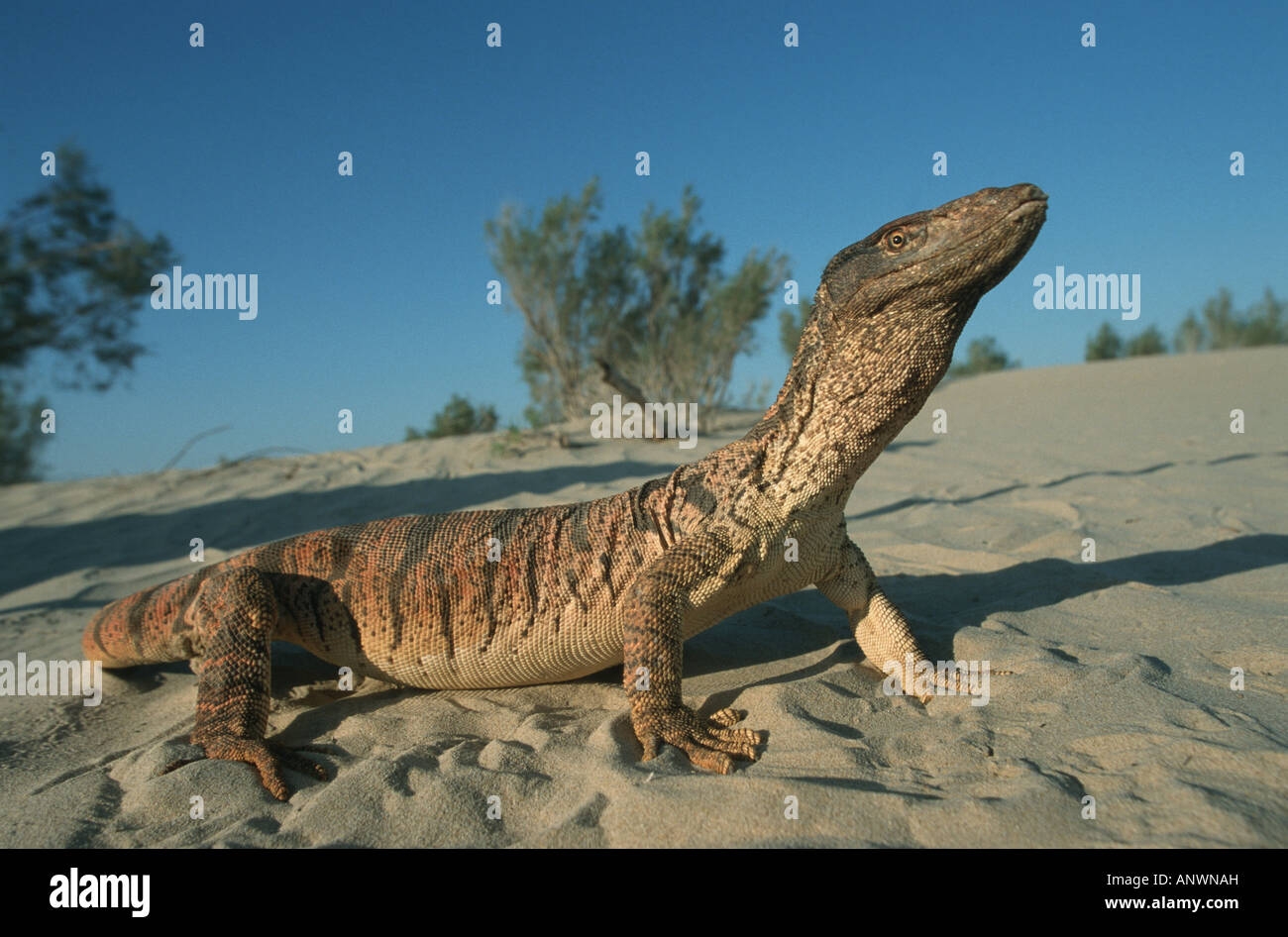 desert monitor, agra monitor (Varanus griseus), desert monitor in its habitat, Uzbekistan, Kyzylkum Stock Photohttps://www.alamy.com/image-license-details/?v=1https://www.alamy.com/stock-photo-desert-monitor-agra-monitor-varanus-griseus-desert-monitor-in-its-15608776.html
desert monitor, agra monitor (Varanus griseus), desert monitor in its habitat, Uzbekistan, Kyzylkum Stock Photohttps://www.alamy.com/image-license-details/?v=1https://www.alamy.com/stock-photo-desert-monitor-agra-monitor-varanus-griseus-desert-monitor-in-its-15608776.htmlRMANWNAH–desert monitor, agra monitor (Varanus griseus), desert monitor in its habitat, Uzbekistan, Kyzylkum
 Clinical tuberculosis . g. 23.—niustrating schematically the course of the fibers in the sympathetic nenrotissystem. Gl, vertebral ganglion; Gi, prevertebral sympathetic ganglion; H, skin; E, inter-nal viscus; a, anterior root of the cord; f, posterior root of the cord; S, sensory nerve;Ka, ramus albus; Kg, ramus griseus; Sy, ganglionated cord of the sympathetic. (Lewand-owsky.) ganglia of the sympathetic nervous system. From them, fiberspass to form plexuses before going to the parts innervated.These ganglia are connected witli each other so intimately as tomake the stimulation of the sympath Stock Photohttps://www.alamy.com/image-license-details/?v=1https://www.alamy.com/clinical-tuberculosis-g-23niustrating-schematically-the-course-of-the-fibers-in-the-sympathetic-nenrotissystem-gl-vertebral-ganglion-gi-prevertebral-sympathetic-ganglion-h-skin-e-inter-nal-viscus-a-anterior-root-of-the-cord-f-posterior-root-of-the-cord-s-sensory-nerveka-ramus-albus-kg-ramus-griseus-sy-ganglionated-cord-of-the-sympathetic-lewand-owsky-ganglia-of-the-sympathetic-nervous-system-from-them-fiberspass-to-form-plexuses-before-going-to-the-parts-innervatedthese-ganglia-are-connected-witli-each-other-so-intimately-as-tomake-the-stimulation-of-the-sympath-image343000508.html
Clinical tuberculosis . g. 23.—niustrating schematically the course of the fibers in the sympathetic nenrotissystem. Gl, vertebral ganglion; Gi, prevertebral sympathetic ganglion; H, skin; E, inter-nal viscus; a, anterior root of the cord; f, posterior root of the cord; S, sensory nerve;Ka, ramus albus; Kg, ramus griseus; Sy, ganglionated cord of the sympathetic. (Lewand-owsky.) ganglia of the sympathetic nervous system. From them, fiberspass to form plexuses before going to the parts innervated.These ganglia are connected witli each other so intimately as tomake the stimulation of the sympath Stock Photohttps://www.alamy.com/image-license-details/?v=1https://www.alamy.com/clinical-tuberculosis-g-23niustrating-schematically-the-course-of-the-fibers-in-the-sympathetic-nenrotissystem-gl-vertebral-ganglion-gi-prevertebral-sympathetic-ganglion-h-skin-e-inter-nal-viscus-a-anterior-root-of-the-cord-f-posterior-root-of-the-cord-s-sensory-nerveka-ramus-albus-kg-ramus-griseus-sy-ganglionated-cord-of-the-sympathetic-lewand-owsky-ganglia-of-the-sympathetic-nervous-system-from-them-fiberspass-to-form-plexuses-before-going-to-the-parts-innervatedthese-ganglia-are-connected-witli-each-other-so-intimately-as-tomake-the-stimulation-of-the-sympath-image343000508.htmlRM2AX10J4–Clinical tuberculosis . g. 23.—niustrating schematically the course of the fibers in the sympathetic nenrotissystem. Gl, vertebral ganglion; Gi, prevertebral sympathetic ganglion; H, skin; E, inter-nal viscus; a, anterior root of the cord; f, posterior root of the cord; S, sensory nerve;Ka, ramus albus; Kg, ramus griseus; Sy, ganglionated cord of the sympathetic. (Lewand-owsky.) ganglia of the sympathetic nervous system. From them, fiberspass to form plexuses before going to the parts innervated.These ganglia are connected witli each other so intimately as tomake the stimulation of the sympath
RMPFTRY1–. Iconographie et histoire naturelle des cole?opte?res d'Europe;. Beetles; Entomology. i. Eimectes Griseus ri". 1±. H. Lcander cf. 2. HvdaticTLS Sia^nalis o. 5. IL Ilvbiieri cf. 3. II. Grauimieiis o'. G. H. Transversalis cf.. Please note that these images are extracted from scanned page images that may have been digitally enhanced for readability - coloration and appearance of these illustrations may not perfectly resemble the original work.. Dejean, Pierre Franc?ois Marie Auguste, comte, 1780-1845. Paris, Me?quignon-Marvis
 The South American Gray Fox, Lycalopex griseus, is also known as the chilla, the gray zorro or the Patagonia Fox. They are commonly found throughout P Stock Photohttps://www.alamy.com/image-license-details/?v=1https://www.alamy.com/the-south-american-gray-fox-lycalopex-griseus-is-also-known-as-the-chilla-the-gray-zorro-or-the-patagonia-fox-they-are-commonly-found-throughout-p-image371287576.html
The South American Gray Fox, Lycalopex griseus, is also known as the chilla, the gray zorro or the Patagonia Fox. They are commonly found throughout P Stock Photohttps://www.alamy.com/image-license-details/?v=1https://www.alamy.com/the-south-american-gray-fox-lycalopex-griseus-is-also-known-as-the-chilla-the-gray-zorro-or-the-patagonia-fox-they-are-commonly-found-throughout-p-image371287576.htmlRM2CG1H2G–The South American Gray Fox, Lycalopex griseus, is also known as the chilla, the gray zorro or the Patagonia Fox. They are commonly found throughout P
 Dry thorn-scrub forest in the Bandabou region of northwest Curacao with acacia shrubs and columnar Mexican Organ Pipe Cactus, Stenocereus griseus, kno Stock Photohttps://www.alamy.com/image-license-details/?v=1https://www.alamy.com/dry-thorn-scrub-forest-in-the-bandabou-region-of-northwest-curacao-with-acacia-shrubs-and-columnar-mexican-organ-pipe-cactus-stenocereus-griseus-kno-image369645432.html
Dry thorn-scrub forest in the Bandabou region of northwest Curacao with acacia shrubs and columnar Mexican Organ Pipe Cactus, Stenocereus griseus, kno Stock Photohttps://www.alamy.com/image-license-details/?v=1https://www.alamy.com/dry-thorn-scrub-forest-in-the-bandabou-region-of-northwest-curacao-with-acacia-shrubs-and-columnar-mexican-organ-pipe-cactus-stenocereus-griseus-kno-image369645432.htmlRM2CDAPEG–Dry thorn-scrub forest in the Bandabou region of northwest Curacao with acacia shrubs and columnar Mexican Organ Pipe Cactus, Stenocereus griseus, kno
 desert monitor, agra monitor (Varanus griseus), Desert monitor smells with its tongue, Uzbekistan, Turan , Kyzylkum Stock Photohttps://www.alamy.com/image-license-details/?v=1https://www.alamy.com/stock-photo-desert-monitor-agra-monitor-varanus-griseus-desert-monitor-smells-11307645.html
desert monitor, agra monitor (Varanus griseus), Desert monitor smells with its tongue, Uzbekistan, Turan , Kyzylkum Stock Photohttps://www.alamy.com/image-license-details/?v=1https://www.alamy.com/stock-photo-desert-monitor-agra-monitor-varanus-griseus-desert-monitor-smells-11307645.htmlRMA5GGAP–desert monitor, agra monitor (Varanus griseus), Desert monitor smells with its tongue, Uzbekistan, Turan , Kyzylkum
![Bulletin of the Bureau of Fisheries . s ou web. (T.) 86. Rypticus saponaceus i Bloch & Schneider).t ibtained by Dr. A. G. Mayer. Familj PR] U WTHIIi.J-. 87. Priacanthus cruentatus (Lacepede), Not rare. New to the fauna of the United States. Family LUTlAXIIf.-E. 88. Lutianus griseus (Linnaeus). Common. 89. Lutianus jocu (Bloch & Schneider).Found south of the Tortugas. 90. Lutianus apodus ( Bloch & Schneider).Common. 91. Lutianus aya (Bloch).Reported by fishermen; not seen. 92. Lutianus analis (Cm ier iV; Valenciennes).Caught in Binl Key channel in 8 fathoms. 93. Lutianus synagris i Linnaeus). I Stock Photo Bulletin of the Bureau of Fisheries . s ou web. (T.) 86. Rypticus saponaceus i Bloch & Schneider).t ibtained by Dr. A. G. Mayer. Familj PR] U WTHIIi.J-. 87. Priacanthus cruentatus (Lacepede), Not rare. New to the fauna of the United States. Family LUTlAXIIf.-E. 88. Lutianus griseus (Linnaeus). Common. 89. Lutianus jocu (Bloch & Schneider).Found south of the Tortugas. 90. Lutianus apodus ( Bloch & Schneider).Common. 91. Lutianus aya (Bloch).Reported by fishermen; not seen. 92. Lutianus analis (Cm ier iV; Valenciennes).Caught in Binl Key channel in 8 fathoms. 93. Lutianus synagris i Linnaeus). I Stock Photo](https://c8.alamy.com/comp/2ANF55D/bulletin-of-the-bureau-of-fisheries-s-ou-web-t-86-rypticus-saponaceus-i-bloch-schneidert-ibtained-by-dr-a-g-mayer-familj-pr-u-wthiiij-87-priacanthus-cruentatus-lacepede-not-rare-new-to-the-fauna-of-the-united-states-family-lutlaxiif-e-88-lutianus-griseus-linnaeus-common-89-lutianus-jocu-bloch-schneiderfound-south-of-the-tortugas-90-lutianus-apodus-bloch-schneidercommon-91-lutianus-aya-blochreported-by-fishermen-not-seen-92-lutianus-analis-cm-ier-iv-valenciennescaught-in-binl-key-channel-in-8-fathoms-93-lutianus-synagris-i-linnaeus-i-2ANF55D.jpg) Bulletin of the Bureau of Fisheries . s ou web. (T.) 86. Rypticus saponaceus i Bloch & Schneider).t ibtained by Dr. A. G. Mayer. Familj PR] U WTHIIi.J-. 87. Priacanthus cruentatus (Lacepede), Not rare. New to the fauna of the United States. Family LUTlAXIIf.-E. 88. Lutianus griseus (Linnaeus). Common. 89. Lutianus jocu (Bloch & Schneider).Found south of the Tortugas. 90. Lutianus apodus ( Bloch & Schneider).Common. 91. Lutianus aya (Bloch).Reported by fishermen; not seen. 92. Lutianus analis (Cm ier iV; Valenciennes).Caught in Binl Key channel in 8 fathoms. 93. Lutianus synagris i Linnaeus). I Stock Photohttps://www.alamy.com/image-license-details/?v=1https://www.alamy.com/bulletin-of-the-bureau-of-fisheries-s-ou-web-t-86-rypticus-saponaceus-i-bloch-schneidert-ibtained-by-dr-a-g-mayer-familj-pr-u-wthiiij-87-priacanthus-cruentatus-lacepede-not-rare-new-to-the-fauna-of-the-united-states-family-lutlaxiif-e-88-lutianus-griseus-linnaeus-common-89-lutianus-jocu-bloch-schneiderfound-south-of-the-tortugas-90-lutianus-apodus-bloch-schneidercommon-91-lutianus-aya-blochreported-by-fishermen-not-seen-92-lutianus-analis-cm-ier-iv-valenciennescaught-in-binl-key-channel-in-8-fathoms-93-lutianus-synagris-i-linnaeus-i-image340238121.html
Bulletin of the Bureau of Fisheries . s ou web. (T.) 86. Rypticus saponaceus i Bloch & Schneider).t ibtained by Dr. A. G. Mayer. Familj PR] U WTHIIi.J-. 87. Priacanthus cruentatus (Lacepede), Not rare. New to the fauna of the United States. Family LUTlAXIIf.-E. 88. Lutianus griseus (Linnaeus). Common. 89. Lutianus jocu (Bloch & Schneider).Found south of the Tortugas. 90. Lutianus apodus ( Bloch & Schneider).Common. 91. Lutianus aya (Bloch).Reported by fishermen; not seen. 92. Lutianus analis (Cm ier iV; Valenciennes).Caught in Binl Key channel in 8 fathoms. 93. Lutianus synagris i Linnaeus). I Stock Photohttps://www.alamy.com/image-license-details/?v=1https://www.alamy.com/bulletin-of-the-bureau-of-fisheries-s-ou-web-t-86-rypticus-saponaceus-i-bloch-schneidert-ibtained-by-dr-a-g-mayer-familj-pr-u-wthiiij-87-priacanthus-cruentatus-lacepede-not-rare-new-to-the-fauna-of-the-united-states-family-lutlaxiif-e-88-lutianus-griseus-linnaeus-common-89-lutianus-jocu-bloch-schneiderfound-south-of-the-tortugas-90-lutianus-apodus-bloch-schneidercommon-91-lutianus-aya-blochreported-by-fishermen-not-seen-92-lutianus-analis-cm-ier-iv-valenciennescaught-in-binl-key-channel-in-8-fathoms-93-lutianus-synagris-i-linnaeus-i-image340238121.htmlRM2ANF55D–Bulletin of the Bureau of Fisheries . s ou web. (T.) 86. Rypticus saponaceus i Bloch & Schneider).t ibtained by Dr. A. G. Mayer. Familj PR] U WTHIIi.J-. 87. Priacanthus cruentatus (Lacepede), Not rare. New to the fauna of the United States. Family LUTlAXIIf.-E. 88. Lutianus griseus (Linnaeus). Common. 89. Lutianus jocu (Bloch & Schneider).Found south of the Tortugas. 90. Lutianus apodus ( Bloch & Schneider).Common. 91. Lutianus aya (Bloch).Reported by fishermen; not seen. 92. Lutianus analis (Cm ier iV; Valenciennes).Caught in Binl Key channel in 8 fathoms. 93. Lutianus synagris i Linnaeus). I
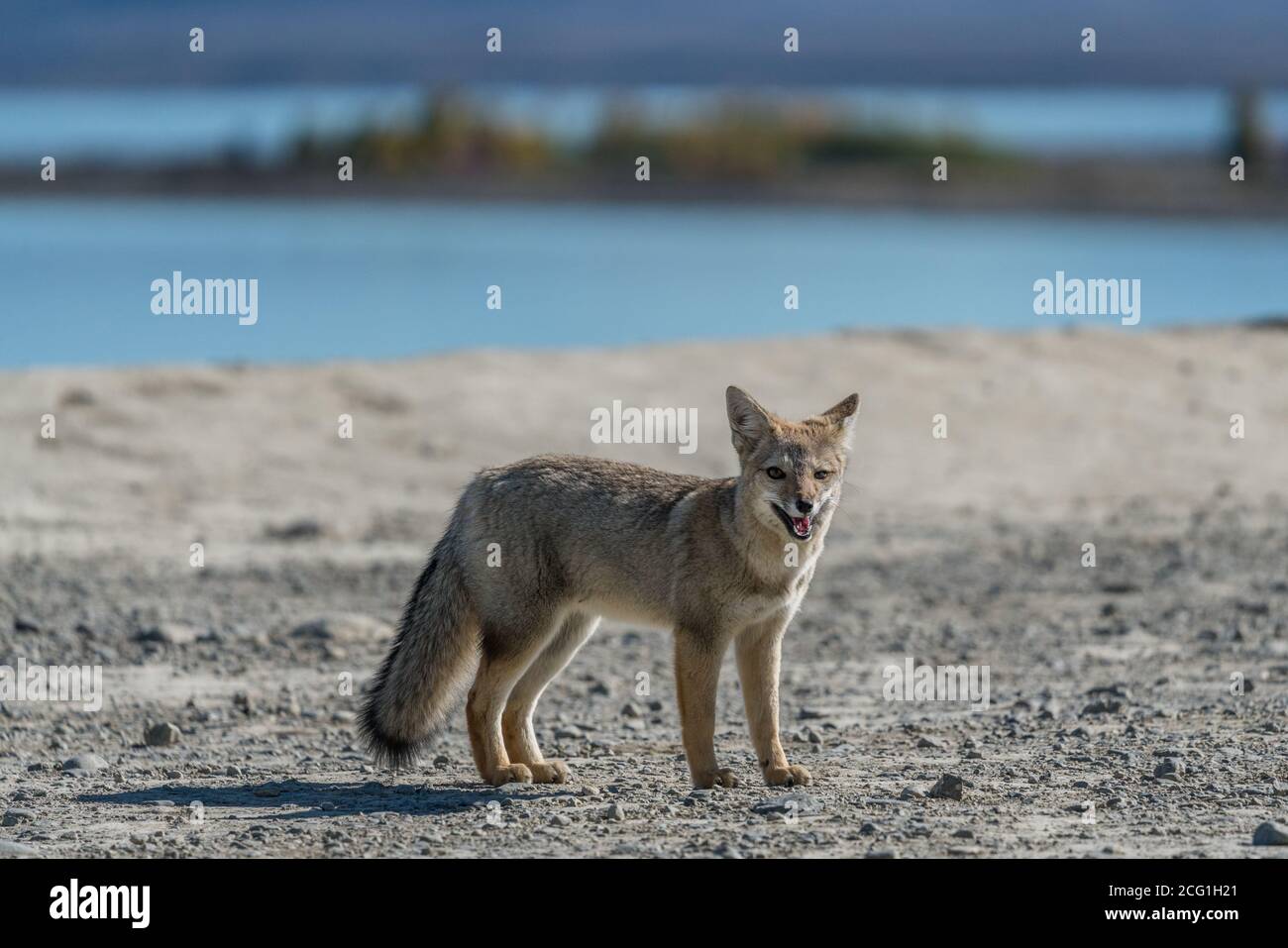 The South American Gray Fox, Lycalopex griseus, is also known as the chilla, the gray zorro or the Patagonia Fox. They are commonly found throughout P Stock Photohttps://www.alamy.com/image-license-details/?v=1https://www.alamy.com/the-south-american-gray-fox-lycalopex-griseus-is-also-known-as-the-chilla-the-gray-zorro-or-the-patagonia-fox-they-are-commonly-found-throughout-p-image371287561.html
The South American Gray Fox, Lycalopex griseus, is also known as the chilla, the gray zorro or the Patagonia Fox. They are commonly found throughout P Stock Photohttps://www.alamy.com/image-license-details/?v=1https://www.alamy.com/the-south-american-gray-fox-lycalopex-griseus-is-also-known-as-the-chilla-the-gray-zorro-or-the-patagonia-fox-they-are-commonly-found-throughout-p-image371287561.htmlRM2CG1H21–The South American Gray Fox, Lycalopex griseus, is also known as the chilla, the gray zorro or the Patagonia Fox. They are commonly found throughout P
 One of the primary plants in the dry, xeric climate of Curacao is cactus. Shown is a columnar Mexican Organ Pipe Cactus, Stenocereus griseus, with it Stock Photohttps://www.alamy.com/image-license-details/?v=1https://www.alamy.com/one-of-the-primary-plants-in-the-dry-xeric-climate-of-curacao-is-cactus-shown-is-a-columnar-mexican-organ-pipe-cactus-stenocereus-griseus-with-it-image369645436.html
One of the primary plants in the dry, xeric climate of Curacao is cactus. Shown is a columnar Mexican Organ Pipe Cactus, Stenocereus griseus, with it Stock Photohttps://www.alamy.com/image-license-details/?v=1https://www.alamy.com/one-of-the-primary-plants-in-the-dry-xeric-climate-of-curacao-is-cactus-shown-is-a-columnar-mexican-organ-pipe-cactus-stenocereus-griseus-with-it-image369645436.htmlRM2CDAPEM–One of the primary plants in the dry, xeric climate of Curacao is cactus. Shown is a columnar Mexican Organ Pipe Cactus, Stenocereus griseus, with it
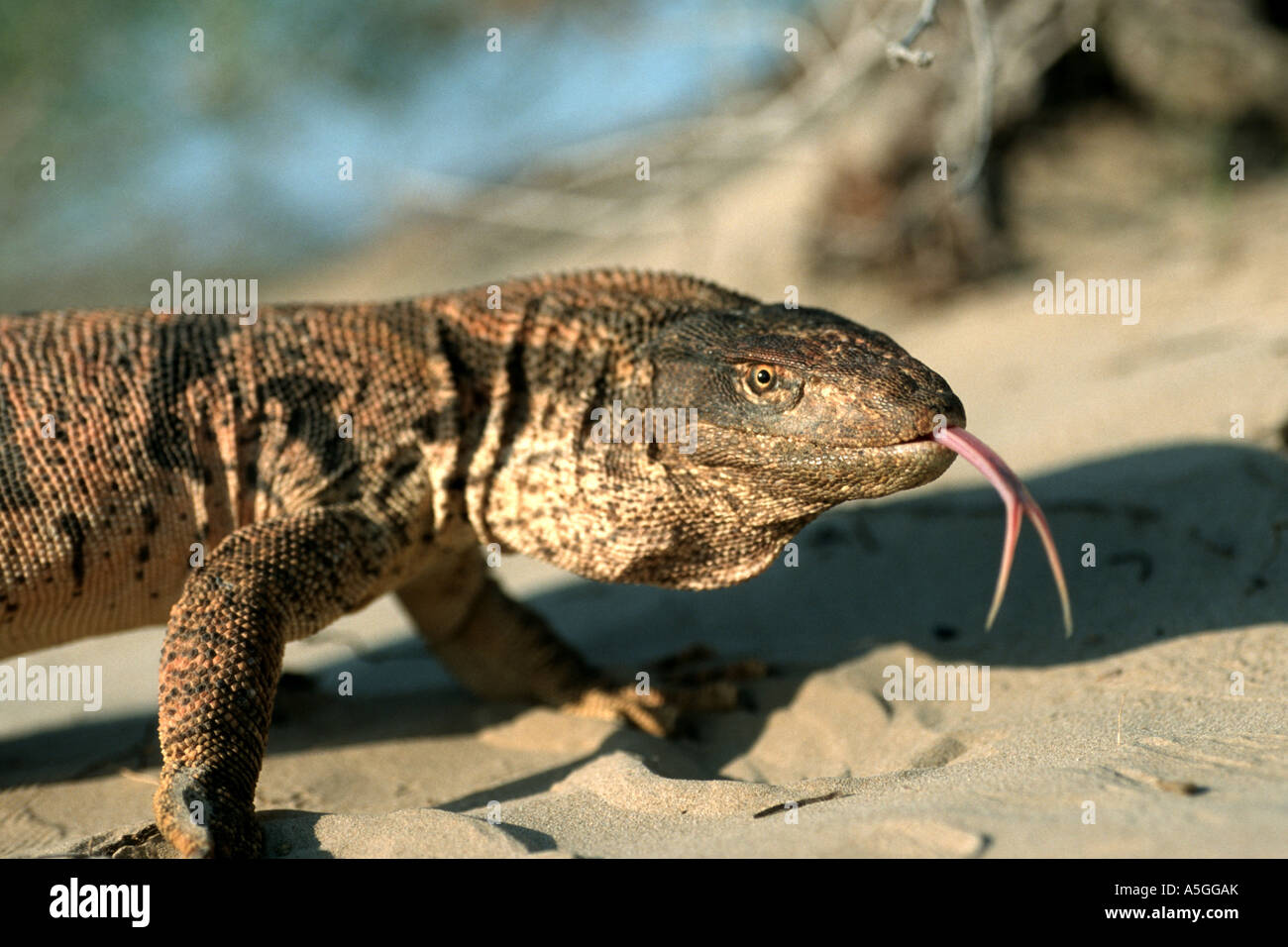 desert monitor, agra monitor (Varanus griseus), Desert monitor smells with its tongue, Uzbekistan, Turan , Kyzylkum Stock Photohttps://www.alamy.com/image-license-details/?v=1https://www.alamy.com/stock-photo-desert-monitor-agra-monitor-varanus-griseus-desert-monitor-smells-11307642.html
desert monitor, agra monitor (Varanus griseus), Desert monitor smells with its tongue, Uzbekistan, Turan , Kyzylkum Stock Photohttps://www.alamy.com/image-license-details/?v=1https://www.alamy.com/stock-photo-desert-monitor-agra-monitor-varanus-griseus-desert-monitor-smells-11307642.htmlRMA5GGAK–desert monitor, agra monitor (Varanus griseus), Desert monitor smells with its tongue, Uzbekistan, Turan , Kyzylkum
 . The water birds of North America . nd with very distinct shaft-streaks of darker gray ; while inP. Stricklandi these feathers are smoky gray, mottled with white (the latter, however, prevailingnear the bend of the wing), and without conspicuous dark shaft-streaks. In P. griseus the chinand upper part of throat are lighter gray than in P. Stricklandi. 1 On labels of specimens in Coll. U. S. Nat. Mus., from Museo Nacional of Chili. 2 According to Captain F. W. Hutton ( Ibis, January, 1872, p. 83), the fresh colors are as follows :The bill is bluish white, passing into black on the culmen and g Stock Photohttps://www.alamy.com/image-license-details/?v=1https://www.alamy.com/the-water-birds-of-north-america-nd-with-very-distinct-shaft-streaks-of-darker-gray-while-inp-stricklandi-these-feathers-are-smoky-gray-mottled-with-white-the-latter-however-prevailingnear-the-bend-of-the-wing-and-without-conspicuous-dark-shaft-streaks-in-p-griseus-the-chinand-upper-part-of-throat-are-lighter-gray-than-in-p-stricklandi-1-on-labels-of-specimens-in-coll-u-s-nat-mus-from-museo-nacional-of-chili-2-according-to-captain-f-w-hutton-ibis-january-1872-p-83-the-fresh-colors-are-as-follows-the-bill-is-bluish-white-passing-into-black-on-the-culmen-and-g-image375256741.html
. The water birds of North America . nd with very distinct shaft-streaks of darker gray ; while inP. Stricklandi these feathers are smoky gray, mottled with white (the latter, however, prevailingnear the bend of the wing), and without conspicuous dark shaft-streaks. In P. griseus the chinand upper part of throat are lighter gray than in P. Stricklandi. 1 On labels of specimens in Coll. U. S. Nat. Mus., from Museo Nacional of Chili. 2 According to Captain F. W. Hutton ( Ibis, January, 1872, p. 83), the fresh colors are as follows :The bill is bluish white, passing into black on the culmen and g Stock Photohttps://www.alamy.com/image-license-details/?v=1https://www.alamy.com/the-water-birds-of-north-america-nd-with-very-distinct-shaft-streaks-of-darker-gray-while-inp-stricklandi-these-feathers-are-smoky-gray-mottled-with-white-the-latter-however-prevailingnear-the-bend-of-the-wing-and-without-conspicuous-dark-shaft-streaks-in-p-griseus-the-chinand-upper-part-of-throat-are-lighter-gray-than-in-p-stricklandi-1-on-labels-of-specimens-in-coll-u-s-nat-mus-from-museo-nacional-of-chili-2-according-to-captain-f-w-hutton-ibis-january-1872-p-83-the-fresh-colors-are-as-follows-the-bill-is-bluish-white-passing-into-black-on-the-culmen-and-g-image375256741.htmlRM2CPEBPD–. The water birds of North America . nd with very distinct shaft-streaks of darker gray ; while inP. Stricklandi these feathers are smoky gray, mottled with white (the latter, however, prevailingnear the bend of the wing), and without conspicuous dark shaft-streaks. In P. griseus the chinand upper part of throat are lighter gray than in P. Stricklandi. 1 On labels of specimens in Coll. U. S. Nat. Mus., from Museo Nacional of Chili. 2 According to Captain F. W. Hutton ( Ibis, January, 1872, p. 83), the fresh colors are as follows :The bill is bluish white, passing into black on the culmen and g
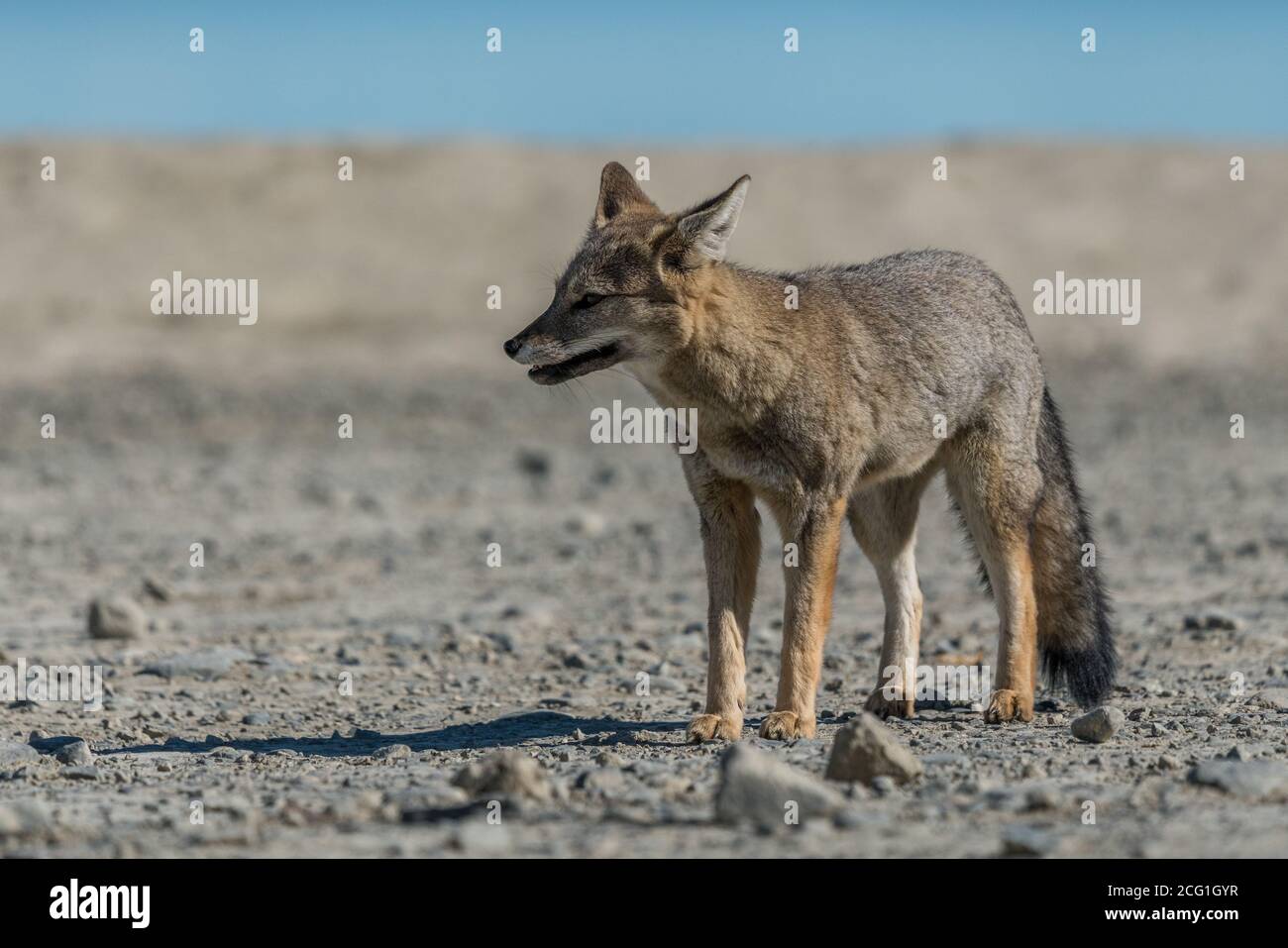 The South American Gray Fox, Lycalopex griseus, is also known as the chilla, the gray zorro or the Patagonia Fox. They are commonly found throughout P Stock Photohttps://www.alamy.com/image-license-details/?v=1https://www.alamy.com/the-south-american-gray-fox-lycalopex-griseus-is-also-known-as-the-chilla-the-gray-zorro-or-the-patagonia-fox-they-are-commonly-found-throughout-p-image371287499.html
The South American Gray Fox, Lycalopex griseus, is also known as the chilla, the gray zorro or the Patagonia Fox. They are commonly found throughout P Stock Photohttps://www.alamy.com/image-license-details/?v=1https://www.alamy.com/the-south-american-gray-fox-lycalopex-griseus-is-also-known-as-the-chilla-the-gray-zorro-or-the-patagonia-fox-they-are-commonly-found-throughout-p-image371287499.htmlRM2CG1GYR–The South American Gray Fox, Lycalopex griseus, is also known as the chilla, the gray zorro or the Patagonia Fox. They are commonly found throughout P
 Dry thorn-scrub forest in the Bandabou region of northwest Curacao with acacia shrubs and columnar Mexican Organ Pipe Cactus, Stenocereus griseus, kno Stock Photohttps://www.alamy.com/image-license-details/?v=1https://www.alamy.com/dry-thorn-scrub-forest-in-the-bandabou-region-of-northwest-curacao-with-acacia-shrubs-and-columnar-mexican-organ-pipe-cactus-stenocereus-griseus-kno-image369643869.html
Dry thorn-scrub forest in the Bandabou region of northwest Curacao with acacia shrubs and columnar Mexican Organ Pipe Cactus, Stenocereus griseus, kno Stock Photohttps://www.alamy.com/image-license-details/?v=1https://www.alamy.com/dry-thorn-scrub-forest-in-the-bandabou-region-of-northwest-curacao-with-acacia-shrubs-and-columnar-mexican-organ-pipe-cactus-stenocereus-griseus-kno-image369643869.htmlRM2CDAMEN–Dry thorn-scrub forest in the Bandabou region of northwest Curacao with acacia shrubs and columnar Mexican Organ Pipe Cactus, Stenocereus griseus, kno
![. Second report on the Hymeniales of Connecticut. o p►d CJ*cd Ft-* cd*o -p to rn pi§ n 2oer *T3 !» 2 f ^ p 3 X Qrq w < 3-* a S CD C?P O 3p CD ►° . g°S. toto - 3 S3* CD §.» 3i— -I?tcd S-3. t3* CD Oft CDCD *C d C CD CDCD 3 <-i tr ^ CD 0*3. NO. 15.] HYMENIALES OF CONNECTICUT. 17 14. Cap 3 to 6 inches broad, flesh-colored or clay- colored L. pallidas Cap 1 y2 to 2y2 inches broad, smoky brown L. fumosus 15. Cap downy 16 Cap smooth 19 16. Cap gray; gills white, tinged with yellow; milk slightly acrid L. griseus Cap not gray 17 17. Gills white, changing to salmon where wounded L. lignyotusGil Stock Photo . Second report on the Hymeniales of Connecticut. o p►d CJ*cd Ft-* cd*o -p to rn pi§ n 2oer *T3 !» 2 f ^ p 3 X Qrq w < 3-* a S CD C?P O 3p CD ►° . g°S. toto - 3 S3* CD §.» 3i— -I?tcd S-3. t3* CD Oft CDCD *C d C CD CDCD 3 <-i tr ^ CD 0*3. NO. 15.] HYMENIALES OF CONNECTICUT. 17 14. Cap 3 to 6 inches broad, flesh-colored or clay- colored L. pallidas Cap 1 y2 to 2y2 inches broad, smoky brown L. fumosus 15. Cap downy 16 Cap smooth 19 16. Cap gray; gills white, tinged with yellow; milk slightly acrid L. griseus Cap not gray 17 17. Gills white, changing to salmon where wounded L. lignyotusGil Stock Photo](https://c8.alamy.com/comp/2CEM5X8/second-report-on-the-hymeniales-of-connecticut-o-pd-cjcd-ft-cdo-p-to-rn-pi-n-2oer-t3-!-2-f-p-3-x-qrq-w-lt-3-a-s-cd-cp-o-3p-cd-gs-toto-3-s3-cd-3i-itcd-s-3-t3-cd-oft-cdcd-c-d-c-cd-cdcd-3-lt-i-tr-cd-03-no-15-hymeniales-of-connecticut-17-14-cap-3-to-6-inches-broad-flesh-colored-or-clay-colored-l-pallidas-cap-1-y2-to-2y2-inches-broad-smoky-brown-l-fumosus-15-cap-downy-16-cap-smooth-19-16-cap-gray-gills-white-tinged-with-yellow-milk-slightly-acrid-l-griseus-cap-not-gray-17-17-gills-white-changing-to-salmon-where-wounded-l-lignyotusgil-2CEM5X8.jpg) . Second report on the Hymeniales of Connecticut. o p►d CJ*cd Ft-* cd*o -p to rn pi§ n 2oer *T3 !» 2 f ^ p 3 X Qrq w < 3-* a S CD C?P O 3p CD ►° . g°S. toto - 3 S3* CD §.» 3i— -I?tcd S-3. t3* CD Oft CDCD *C d C CD CDCD 3 <-i tr ^ CD 0*3. NO. 15.] HYMENIALES OF CONNECTICUT. 17 14. Cap 3 to 6 inches broad, flesh-colored or clay- colored L. pallidas Cap 1 y2 to 2y2 inches broad, smoky brown L. fumosus 15. Cap downy 16 Cap smooth 19 16. Cap gray; gills white, tinged with yellow; milk slightly acrid L. griseus Cap not gray 17 17. Gills white, changing to salmon where wounded L. lignyotusGil Stock Photohttps://www.alamy.com/image-license-details/?v=1https://www.alamy.com/second-report-on-the-hymeniales-of-connecticut-o-pd-cjcd-ft-cdo-p-to-rn-pi-n-2oer-t3-!-2-f-p-3-x-qrq-w-lt-3-a-s-cd-cp-o-3p-cd-gs-toto-3-s3-cd-3i-itcd-s-3-t3-cd-oft-cdcd-c-d-c-cd-cdcd-3-lt-i-tr-cd-03-no-15-hymeniales-of-connecticut-17-14-cap-3-to-6-inches-broad-flesh-colored-or-clay-colored-l-pallidas-cap-1-y2-to-2y2-inches-broad-smoky-brown-l-fumosus-15-cap-downy-16-cap-smooth-19-16-cap-gray-gills-white-tinged-with-yellow-milk-slightly-acrid-l-griseus-cap-not-gray-17-17-gills-white-changing-to-salmon-where-wounded-l-lignyotusgil-image370466608.html
. Second report on the Hymeniales of Connecticut. o p►d CJ*cd Ft-* cd*o -p to rn pi§ n 2oer *T3 !» 2 f ^ p 3 X Qrq w < 3-* a S CD C?P O 3p CD ►° . g°S. toto - 3 S3* CD §.» 3i— -I?tcd S-3. t3* CD Oft CDCD *C d C CD CDCD 3 <-i tr ^ CD 0*3. NO. 15.] HYMENIALES OF CONNECTICUT. 17 14. Cap 3 to 6 inches broad, flesh-colored or clay- colored L. pallidas Cap 1 y2 to 2y2 inches broad, smoky brown L. fumosus 15. Cap downy 16 Cap smooth 19 16. Cap gray; gills white, tinged with yellow; milk slightly acrid L. griseus Cap not gray 17 17. Gills white, changing to salmon where wounded L. lignyotusGil Stock Photohttps://www.alamy.com/image-license-details/?v=1https://www.alamy.com/second-report-on-the-hymeniales-of-connecticut-o-pd-cjcd-ft-cdo-p-to-rn-pi-n-2oer-t3-!-2-f-p-3-x-qrq-w-lt-3-a-s-cd-cp-o-3p-cd-gs-toto-3-s3-cd-3i-itcd-s-3-t3-cd-oft-cdcd-c-d-c-cd-cdcd-3-lt-i-tr-cd-03-no-15-hymeniales-of-connecticut-17-14-cap-3-to-6-inches-broad-flesh-colored-or-clay-colored-l-pallidas-cap-1-y2-to-2y2-inches-broad-smoky-brown-l-fumosus-15-cap-downy-16-cap-smooth-19-16-cap-gray-gills-white-tinged-with-yellow-milk-slightly-acrid-l-griseus-cap-not-gray-17-17-gills-white-changing-to-salmon-where-wounded-l-lignyotusgil-image370466608.htmlRM2CEM5X8–. Second report on the Hymeniales of Connecticut. o p►d CJ*cd Ft-* cd*o -p to rn pi§ n 2oer *T3 !» 2 f ^ p 3 X Qrq w < 3-* a S CD C?P O 3p CD ►° . g°S. toto - 3 S3* CD §.» 3i— -I?tcd S-3. t3* CD Oft CDCD *C d C CD CDCD 3 <-i tr ^ CD 0*3. NO. 15.] HYMENIALES OF CONNECTICUT. 17 14. Cap 3 to 6 inches broad, flesh-colored or clay- colored L. pallidas Cap 1 y2 to 2y2 inches broad, smoky brown L. fumosus 15. Cap downy 16 Cap smooth 19 16. Cap gray; gills white, tinged with yellow; milk slightly acrid L. griseus Cap not gray 17 17. Gills white, changing to salmon where wounded L. lignyotusGil
 The South American Gray Fox, Lycalopex griseus, is also known as the chilla, the gray zorro or the Patagonia Fox. They are commonly found throughout P Stock Photohttps://www.alamy.com/image-license-details/?v=1https://www.alamy.com/the-south-american-gray-fox-lycalopex-griseus-is-also-known-as-the-chilla-the-gray-zorro-or-the-patagonia-fox-they-are-commonly-found-throughout-p-image371287559.html
The South American Gray Fox, Lycalopex griseus, is also known as the chilla, the gray zorro or the Patagonia Fox. They are commonly found throughout P Stock Photohttps://www.alamy.com/image-license-details/?v=1https://www.alamy.com/the-south-american-gray-fox-lycalopex-griseus-is-also-known-as-the-chilla-the-gray-zorro-or-the-patagonia-fox-they-are-commonly-found-throughout-p-image371287559.htmlRM2CG1H1Y–The South American Gray Fox, Lycalopex griseus, is also known as the chilla, the gray zorro or the Patagonia Fox. They are commonly found throughout P
 The South American Gray Fox, Lycalopex griseus, is also known as the chilla, the gray zorro or the Patagonia Fox. They are commonly found throughout P Stock Photohttps://www.alamy.com/image-license-details/?v=1https://www.alamy.com/the-south-american-gray-fox-lycalopex-griseus-is-also-known-as-the-chilla-the-gray-zorro-or-the-patagonia-fox-they-are-commonly-found-throughout-p-image371295115.html
The South American Gray Fox, Lycalopex griseus, is also known as the chilla, the gray zorro or the Patagonia Fox. They are commonly found throughout P Stock Photohttps://www.alamy.com/image-license-details/?v=1https://www.alamy.com/the-south-american-gray-fox-lycalopex-griseus-is-also-known-as-the-chilla-the-gray-zorro-or-the-patagonia-fox-they-are-commonly-found-throughout-p-image371295115.htmlRM2CG1XKR–The South American Gray Fox, Lycalopex griseus, is also known as the chilla, the gray zorro or the Patagonia Fox. They are commonly found throughout P
 The South American Gray Fox, Lycalopex griseus, is also known as the chilla, the gray zorro or the Patagonia Fox. They are commonly found throughout P Stock Photohttps://www.alamy.com/image-license-details/?v=1https://www.alamy.com/the-south-american-gray-fox-lycalopex-griseus-is-also-known-as-the-chilla-the-gray-zorro-or-the-patagonia-fox-they-are-commonly-found-throughout-p-image371287524.html
The South American Gray Fox, Lycalopex griseus, is also known as the chilla, the gray zorro or the Patagonia Fox. They are commonly found throughout P Stock Photohttps://www.alamy.com/image-license-details/?v=1https://www.alamy.com/the-south-american-gray-fox-lycalopex-griseus-is-also-known-as-the-chilla-the-gray-zorro-or-the-patagonia-fox-they-are-commonly-found-throughout-p-image371287524.htmlRM2CG1H0M–The South American Gray Fox, Lycalopex griseus, is also known as the chilla, the gray zorro or the Patagonia Fox. They are commonly found throughout P
 . Mammals of the Mexican boundary of the United States : a descriptive catalogue of the species of mammals occurring in that region; with a general summary of the natural history, and a list of trees . Mammals; Mammals; Trees; Trees; Natural history; Natural history. 266 BULLETTN 56, UNlTEt) STATES NATIONAL MxfSEUM. S. g. anthonyi. Topotypes of the latter from San Mateo County, California, are much darker than true S. griseus; the top of the head and upper surface of the tail are blackish, and the back is strongly suffused with yellowish brown. The subspecies anthonyi,^ from the mountains of t Stock Photohttps://www.alamy.com/image-license-details/?v=1https://www.alamy.com/mammals-of-the-mexican-boundary-of-the-united-states-a-descriptive-catalogue-of-the-species-of-mammals-occurring-in-that-region-with-a-general-summary-of-the-natural-history-and-a-list-of-trees-mammals-mammals-trees-trees-natural-history-natural-history-266-bullettn-56-unltet-states-national-mxfseum-s-g-anthonyi-topotypes-of-the-latter-from-san-mateo-county-california-are-much-darker-than-true-s-griseus-the-top-of-the-head-and-upper-surface-of-the-tail-are-blackish-and-the-back-is-strongly-suffused-with-yellowish-brown-the-subspecies-anthonyi-from-the-mountains-of-t-image232044692.html
. Mammals of the Mexican boundary of the United States : a descriptive catalogue of the species of mammals occurring in that region; with a general summary of the natural history, and a list of trees . Mammals; Mammals; Trees; Trees; Natural history; Natural history. 266 BULLETTN 56, UNlTEt) STATES NATIONAL MxfSEUM. S. g. anthonyi. Topotypes of the latter from San Mateo County, California, are much darker than true S. griseus; the top of the head and upper surface of the tail are blackish, and the back is strongly suffused with yellowish brown. The subspecies anthonyi,^ from the mountains of t Stock Photohttps://www.alamy.com/image-license-details/?v=1https://www.alamy.com/mammals-of-the-mexican-boundary-of-the-united-states-a-descriptive-catalogue-of-the-species-of-mammals-occurring-in-that-region-with-a-general-summary-of-the-natural-history-and-a-list-of-trees-mammals-mammals-trees-trees-natural-history-natural-history-266-bullettn-56-unltet-states-national-mxfseum-s-g-anthonyi-topotypes-of-the-latter-from-san-mateo-county-california-are-much-darker-than-true-s-griseus-the-top-of-the-head-and-upper-surface-of-the-tail-are-blackish-and-the-back-is-strongly-suffused-with-yellowish-brown-the-subspecies-anthonyi-from-the-mountains-of-t-image232044692.htmlRMRDEFAC–. Mammals of the Mexican boundary of the United States : a descriptive catalogue of the species of mammals occurring in that region; with a general summary of the natural history, and a list of trees . Mammals; Mammals; Trees; Trees; Natural history; Natural history. 266 BULLETTN 56, UNlTEt) STATES NATIONAL MxfSEUM. S. g. anthonyi. Topotypes of the latter from San Mateo County, California, are much darker than true S. griseus; the top of the head and upper surface of the tail are blackish, and the back is strongly suffused with yellowish brown. The subspecies anthonyi,^ from the mountains of t
 The South American Gray Fox, Lycalopex griseus, is also known as the chilla, the gray zorro or the Patagonia Fox. They are commonly found throughout P Stock Photohttps://www.alamy.com/image-license-details/?v=1https://www.alamy.com/the-south-american-gray-fox-lycalopex-griseus-is-also-known-as-the-chilla-the-gray-zorro-or-the-patagonia-fox-they-are-commonly-found-throughout-p-image371294693.html
The South American Gray Fox, Lycalopex griseus, is also known as the chilla, the gray zorro or the Patagonia Fox. They are commonly found throughout P Stock Photohttps://www.alamy.com/image-license-details/?v=1https://www.alamy.com/the-south-american-gray-fox-lycalopex-griseus-is-also-known-as-the-chilla-the-gray-zorro-or-the-patagonia-fox-they-are-commonly-found-throughout-p-image371294693.htmlRM2CG1X4N–The South American Gray Fox, Lycalopex griseus, is also known as the chilla, the gray zorro or the Patagonia Fox. They are commonly found throughout P
 The South American Gray Fox, Lycalopex griseus, is also known as the chilla, the gray zorro or the Patagonia Fox. They are commonly found throughout P Stock Photohttps://www.alamy.com/image-license-details/?v=1https://www.alamy.com/the-south-american-gray-fox-lycalopex-griseus-is-also-known-as-the-chilla-the-gray-zorro-or-the-patagonia-fox-they-are-commonly-found-throughout-p-image371287517.html
The South American Gray Fox, Lycalopex griseus, is also known as the chilla, the gray zorro or the Patagonia Fox. They are commonly found throughout P Stock Photohttps://www.alamy.com/image-license-details/?v=1https://www.alamy.com/the-south-american-gray-fox-lycalopex-griseus-is-also-known-as-the-chilla-the-gray-zorro-or-the-patagonia-fox-they-are-commonly-found-throughout-p-image371287517.htmlRM2CG1H0D–The South American Gray Fox, Lycalopex griseus, is also known as the chilla, the gray zorro or the Patagonia Fox. They are commonly found throughout P
 . Bulletin - United States National Museum. Science. 266 BULLETIN 56, UNITED STATES NATIONAL MUSEUM. S. g. anthonyi. Topotypes of the latter from San Mateo County, California, are much darker than true S. griseus; the top of the head and upper surface of the tail are blackish, and the hack is strongly suffused with yellowish brown. The subspecies anthoityi, from the mountains of the interior of southern and Lower California, is very much paler than .V. gris- i'iis (typical) and also smaller. The tawny- ochraceous color at base and posterior surface of ear is present in all three forms in winte Stock Photohttps://www.alamy.com/image-license-details/?v=1https://www.alamy.com/bulletin-united-states-national-museum-science-266-bulletin-56-united-states-national-museum-s-g-anthonyi-topotypes-of-the-latter-from-san-mateo-county-california-are-much-darker-than-true-s-griseus-the-top-of-the-head-and-upper-surface-of-the-tail-are-blackish-and-the-hack-is-strongly-suffused-with-yellowish-brown-the-subspecies-anthoityi-from-the-mountains-of-the-interior-of-southern-and-lower-california-is-very-much-paler-than-v-gris-iiis-typical-and-also-smaller-the-tawny-ochraceous-color-at-base-and-posterior-surface-of-ear-is-present-in-all-three-forms-in-winte-image233728711.html
. Bulletin - United States National Museum. Science. 266 BULLETIN 56, UNITED STATES NATIONAL MUSEUM. S. g. anthonyi. Topotypes of the latter from San Mateo County, California, are much darker than true S. griseus; the top of the head and upper surface of the tail are blackish, and the hack is strongly suffused with yellowish brown. The subspecies anthoityi, from the mountains of the interior of southern and Lower California, is very much paler than .V. gris- i'iis (typical) and also smaller. The tawny- ochraceous color at base and posterior surface of ear is present in all three forms in winte Stock Photohttps://www.alamy.com/image-license-details/?v=1https://www.alamy.com/bulletin-united-states-national-museum-science-266-bulletin-56-united-states-national-museum-s-g-anthonyi-topotypes-of-the-latter-from-san-mateo-county-california-are-much-darker-than-true-s-griseus-the-top-of-the-head-and-upper-surface-of-the-tail-are-blackish-and-the-hack-is-strongly-suffused-with-yellowish-brown-the-subspecies-anthoityi-from-the-mountains-of-the-interior-of-southern-and-lower-california-is-very-much-paler-than-v-gris-iiis-typical-and-also-smaller-the-tawny-ochraceous-color-at-base-and-posterior-surface-of-ear-is-present-in-all-three-forms-in-winte-image233728711.htmlRMRG779Y–. Bulletin - United States National Museum. Science. 266 BULLETIN 56, UNITED STATES NATIONAL MUSEUM. S. g. anthonyi. Topotypes of the latter from San Mateo County, California, are much darker than true S. griseus; the top of the head and upper surface of the tail are blackish, and the hack is strongly suffused with yellowish brown. The subspecies anthoityi, from the mountains of the interior of southern and Lower California, is very much paler than .V. gris- i'iis (typical) and also smaller. The tawny- ochraceous color at base and posterior surface of ear is present in all three forms in winte
 The South American Gray Fox, Lycalopex griseus, is also known as the chilla, the gray zorro or the Patagonia Fox. They are commonly found throughout P Stock Photohttps://www.alamy.com/image-license-details/?v=1https://www.alamy.com/the-south-american-gray-fox-lycalopex-griseus-is-also-known-as-the-chilla-the-gray-zorro-or-the-patagonia-fox-they-are-commonly-found-throughout-p-image371295145.html
The South American Gray Fox, Lycalopex griseus, is also known as the chilla, the gray zorro or the Patagonia Fox. They are commonly found throughout P Stock Photohttps://www.alamy.com/image-license-details/?v=1https://www.alamy.com/the-south-american-gray-fox-lycalopex-griseus-is-also-known-as-the-chilla-the-gray-zorro-or-the-patagonia-fox-they-are-commonly-found-throughout-p-image371295145.htmlRM2CG1XMW–The South American Gray Fox, Lycalopex griseus, is also known as the chilla, the gray zorro or the Patagonia Fox. They are commonly found throughout P
 The South American Gray Fox, Lycalopex griseus, is also known as the chilla, the gray zorro or the Patagonia Fox. They are commonly found throughout P Stock Photohttps://www.alamy.com/image-license-details/?v=1https://www.alamy.com/the-south-american-gray-fox-lycalopex-griseus-is-also-known-as-the-chilla-the-gray-zorro-or-the-patagonia-fox-they-are-commonly-found-throughout-p-image371287523.html
The South American Gray Fox, Lycalopex griseus, is also known as the chilla, the gray zorro or the Patagonia Fox. They are commonly found throughout P Stock Photohttps://www.alamy.com/image-license-details/?v=1https://www.alamy.com/the-south-american-gray-fox-lycalopex-griseus-is-also-known-as-the-chilla-the-gray-zorro-or-the-patagonia-fox-they-are-commonly-found-throughout-p-image371287523.htmlRM2CG1H0K–The South American Gray Fox, Lycalopex griseus, is also known as the chilla, the gray zorro or the Patagonia Fox. They are commonly found throughout P
 The South American Gray Fox, Lycalopex griseus, is also known as the chilla, the gray zorro or the Patagonia Fox. They are commonly found throughout P Stock Photohttps://www.alamy.com/image-license-details/?v=1https://www.alamy.com/the-south-american-gray-fox-lycalopex-griseus-is-also-known-as-the-chilla-the-gray-zorro-or-the-patagonia-fox-they-are-commonly-found-throughout-p-image371287522.html
The South American Gray Fox, Lycalopex griseus, is also known as the chilla, the gray zorro or the Patagonia Fox. They are commonly found throughout P Stock Photohttps://www.alamy.com/image-license-details/?v=1https://www.alamy.com/the-south-american-gray-fox-lycalopex-griseus-is-also-known-as-the-chilla-the-gray-zorro-or-the-patagonia-fox-they-are-commonly-found-throughout-p-image371287522.htmlRM2CG1H0J–The South American Gray Fox, Lycalopex griseus, is also known as the chilla, the gray zorro or the Patagonia Fox. They are commonly found throughout P
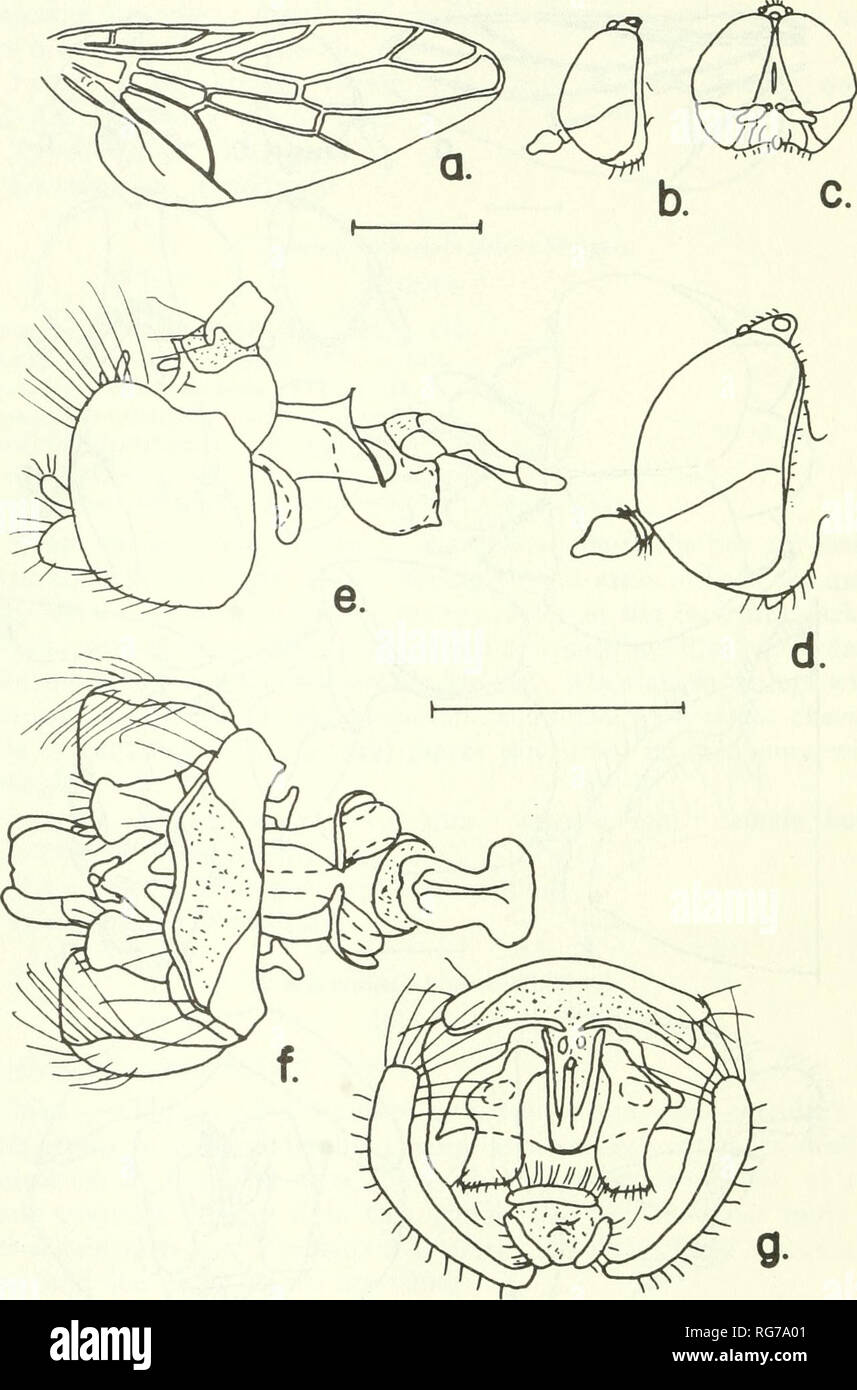 . Bulletin - United States National Museum. Science. 30 U.S. NATIONAL MUSEUM BULLETIN 277. Figure 10.—Scenopinus griseus (Krober), male: a, wing; b, c, lateral and frontal aspects of head; d, enlarged detail of head; e-g, lateral, ventral and posterior aspects of terminalia.. Please note that these images are extracted from scanned page images that may have been digitally enhanced for readability - coloration and appearance of these illustrations may not perfectly resemble the original work.. United States National Museum; Smithsonian Institution; United States. Dept. of the Interior. Washingt Stock Photohttps://www.alamy.com/image-license-details/?v=1https://www.alamy.com/bulletin-united-states-national-museum-science-30-us-national-museum-bulletin-277-figure-10scenopinus-griseus-krober-male-a-wing-b-c-lateral-and-frontal-aspects-of-head-d-enlarged-detail-of-head-e-g-lateral-ventral-and-posterior-aspects-of-terminalia-please-note-that-these-images-are-extracted-from-scanned-page-images-that-may-have-been-digitally-enhanced-for-readability-coloration-and-appearance-of-these-illustrations-may-not-perfectly-resemble-the-original-work-united-states-national-museum-smithsonian-institution-united-states-dept-of-the-interior-washingt-image233730785.html
. Bulletin - United States National Museum. Science. 30 U.S. NATIONAL MUSEUM BULLETIN 277. Figure 10.—Scenopinus griseus (Krober), male: a, wing; b, c, lateral and frontal aspects of head; d, enlarged detail of head; e-g, lateral, ventral and posterior aspects of terminalia.. Please note that these images are extracted from scanned page images that may have been digitally enhanced for readability - coloration and appearance of these illustrations may not perfectly resemble the original work.. United States National Museum; Smithsonian Institution; United States. Dept. of the Interior. Washingt Stock Photohttps://www.alamy.com/image-license-details/?v=1https://www.alamy.com/bulletin-united-states-national-museum-science-30-us-national-museum-bulletin-277-figure-10scenopinus-griseus-krober-male-a-wing-b-c-lateral-and-frontal-aspects-of-head-d-enlarged-detail-of-head-e-g-lateral-ventral-and-posterior-aspects-of-terminalia-please-note-that-these-images-are-extracted-from-scanned-page-images-that-may-have-been-digitally-enhanced-for-readability-coloration-and-appearance-of-these-illustrations-may-not-perfectly-resemble-the-original-work-united-states-national-museum-smithsonian-institution-united-states-dept-of-the-interior-washingt-image233730785.htmlRMRG7A01–. Bulletin - United States National Museum. Science. 30 U.S. NATIONAL MUSEUM BULLETIN 277. Figure 10.—Scenopinus griseus (Krober), male: a, wing; b, c, lateral and frontal aspects of head; d, enlarged detail of head; e-g, lateral, ventral and posterior aspects of terminalia.. Please note that these images are extracted from scanned page images that may have been digitally enhanced for readability - coloration and appearance of these illustrations may not perfectly resemble the original work.. United States National Museum; Smithsonian Institution; United States. Dept. of the Interior. Washingt
 The South American Gray Fox, Lycalopex griseus, is also known as the chilla, the gray zorro or the Patagonia Fox. They are commonly found throughout P Stock Photohttps://www.alamy.com/image-license-details/?v=1https://www.alamy.com/the-south-american-gray-fox-lycalopex-griseus-is-also-known-as-the-chilla-the-gray-zorro-or-the-patagonia-fox-they-are-commonly-found-throughout-p-image371295077.html
The South American Gray Fox, Lycalopex griseus, is also known as the chilla, the gray zorro or the Patagonia Fox. They are commonly found throughout P Stock Photohttps://www.alamy.com/image-license-details/?v=1https://www.alamy.com/the-south-american-gray-fox-lycalopex-griseus-is-also-known-as-the-chilla-the-gray-zorro-or-the-patagonia-fox-they-are-commonly-found-throughout-p-image371295077.htmlRM2CG1XJD–The South American Gray Fox, Lycalopex griseus, is also known as the chilla, the gray zorro or the Patagonia Fox. They are commonly found throughout P
 The South American Gray Fox, Lycalopex griseus, is also known as the chilla, the gray zorro or the Patagonia Fox. They are commonly found throughout P Stock Photohttps://www.alamy.com/image-license-details/?v=1https://www.alamy.com/the-south-american-gray-fox-lycalopex-griseus-is-also-known-as-the-chilla-the-gray-zorro-or-the-patagonia-fox-they-are-commonly-found-throughout-p-image371287513.html
The South American Gray Fox, Lycalopex griseus, is also known as the chilla, the gray zorro or the Patagonia Fox. They are commonly found throughout P Stock Photohttps://www.alamy.com/image-license-details/?v=1https://www.alamy.com/the-south-american-gray-fox-lycalopex-griseus-is-also-known-as-the-chilla-the-gray-zorro-or-the-patagonia-fox-they-are-commonly-found-throughout-p-image371287513.htmlRM2CG1H09–The South American Gray Fox, Lycalopex griseus, is also known as the chilla, the gray zorro or the Patagonia Fox. They are commonly found throughout P
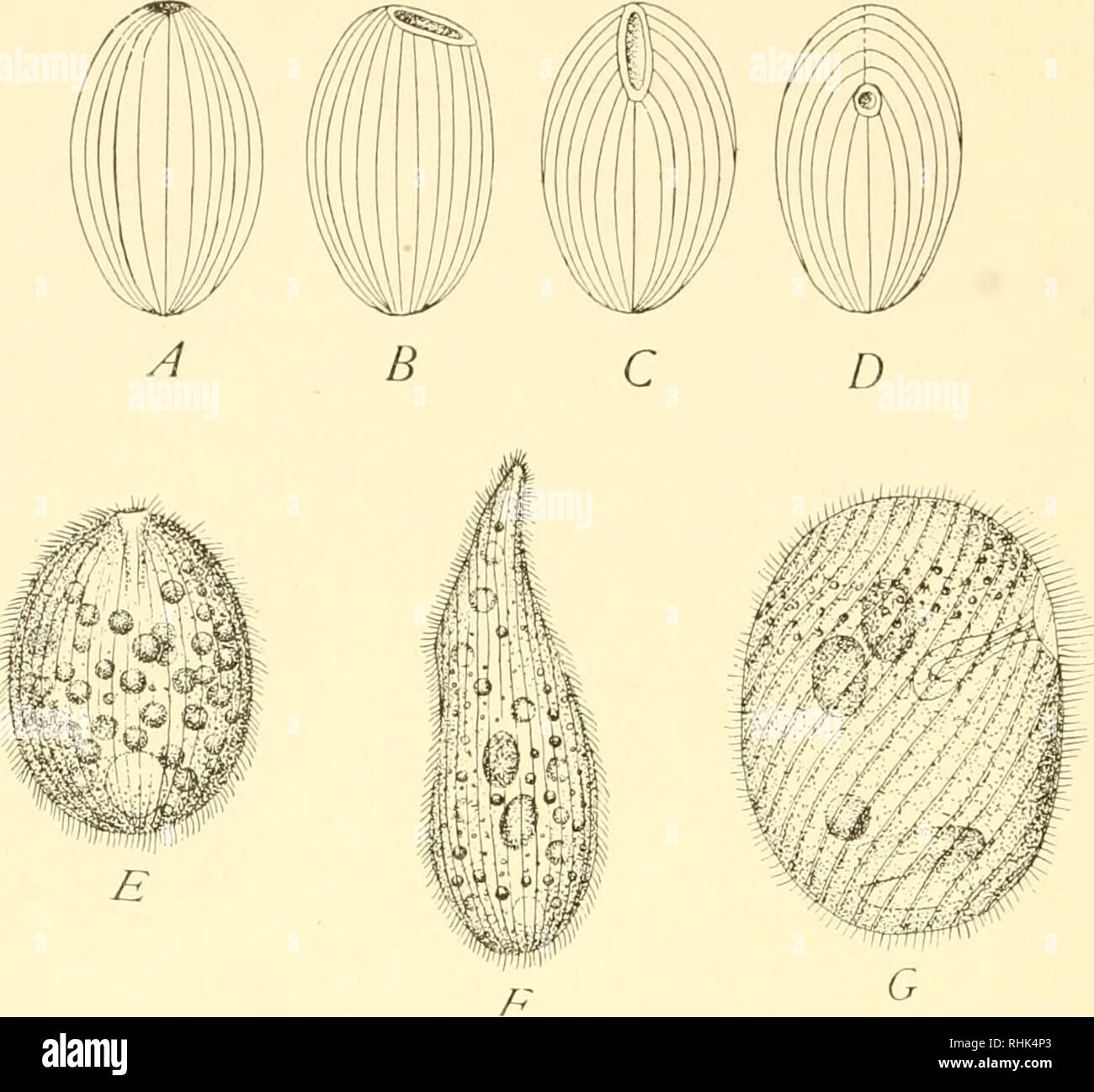 . The biology of the protozoa. Protozoa; Protozoa. Fig. 15.—Diagrams illustrating shifting of the mouth in ciliates from terminal to lateral or ventral surface (A, B, C, D). E, Prorodon griseus, corresponds with A; F, Am.phileptus claparedi, corresponds with B or C; and G, Nassula microstoma, corre- sponds with D. (E and F, after Butschli; G, after Calkins.) A. Please note that these images are extracted from scanned page images that may have been digitally enhanced for readability - coloration and appearance of these illustrations may not perfectly resemble the original work.. Calkins, Gary N Stock Photohttps://www.alamy.com/image-license-details/?v=1https://www.alamy.com/the-biology-of-the-protozoa-protozoa-protozoa-fig-15diagrams-illustrating-shifting-of-the-mouth-in-ciliates-from-terminal-to-lateral-or-ventral-surface-a-b-c-d-e-prorodon-griseus-corresponds-with-a-f-amphileptus-claparedi-corresponds-with-b-or-c-and-g-nassula-microstoma-corre-sponds-with-d-e-and-f-after-butschli-g-after-calkins-a-please-note-that-these-images-are-extracted-from-scanned-page-images-that-may-have-been-digitally-enhanced-for-readability-coloration-and-appearance-of-these-illustrations-may-not-perfectly-resemble-the-original-work-calkins-gary-n-image234604779.html
. The biology of the protozoa. Protozoa; Protozoa. Fig. 15.—Diagrams illustrating shifting of the mouth in ciliates from terminal to lateral or ventral surface (A, B, C, D). E, Prorodon griseus, corresponds with A; F, Am.phileptus claparedi, corresponds with B or C; and G, Nassula microstoma, corre- sponds with D. (E and F, after Butschli; G, after Calkins.) A. Please note that these images are extracted from scanned page images that may have been digitally enhanced for readability - coloration and appearance of these illustrations may not perfectly resemble the original work.. Calkins, Gary N Stock Photohttps://www.alamy.com/image-license-details/?v=1https://www.alamy.com/the-biology-of-the-protozoa-protozoa-protozoa-fig-15diagrams-illustrating-shifting-of-the-mouth-in-ciliates-from-terminal-to-lateral-or-ventral-surface-a-b-c-d-e-prorodon-griseus-corresponds-with-a-f-amphileptus-claparedi-corresponds-with-b-or-c-and-g-nassula-microstoma-corre-sponds-with-d-e-and-f-after-butschli-g-after-calkins-a-please-note-that-these-images-are-extracted-from-scanned-page-images-that-may-have-been-digitally-enhanced-for-readability-coloration-and-appearance-of-these-illustrations-may-not-perfectly-resemble-the-original-work-calkins-gary-n-image234604779.htmlRMRHK4P3–. The biology of the protozoa. Protozoa; Protozoa. Fig. 15.—Diagrams illustrating shifting of the mouth in ciliates from terminal to lateral or ventral surface (A, B, C, D). E, Prorodon griseus, corresponds with A; F, Am.phileptus claparedi, corresponds with B or C; and G, Nassula microstoma, corre- sponds with D. (E and F, after Butschli; G, after Calkins.) A. Please note that these images are extracted from scanned page images that may have been digitally enhanced for readability - coloration and appearance of these illustrations may not perfectly resemble the original work.. Calkins, Gary N
 The South American Gray Fox, Lycalopex griseus, is also known as the chilla, the gray zorro or the Patagonia Fox. They are commonly found throughout P Stock Photohttps://www.alamy.com/image-license-details/?v=1https://www.alamy.com/the-south-american-gray-fox-lycalopex-griseus-is-also-known-as-the-chilla-the-gray-zorro-or-the-patagonia-fox-they-are-commonly-found-throughout-p-image371295176.html
The South American Gray Fox, Lycalopex griseus, is also known as the chilla, the gray zorro or the Patagonia Fox. They are commonly found throughout P Stock Photohttps://www.alamy.com/image-license-details/?v=1https://www.alamy.com/the-south-american-gray-fox-lycalopex-griseus-is-also-known-as-the-chilla-the-gray-zorro-or-the-patagonia-fox-they-are-commonly-found-throughout-p-image371295176.htmlRM2CG1XP0–The South American Gray Fox, Lycalopex griseus, is also known as the chilla, the gray zorro or the Patagonia Fox. They are commonly found throughout P
 The South American Gray Fox, Lycalopex griseus, is also known as the chilla, the gray zorro or the Patagonia Fox. They are commonly found throughout P Stock Photohttps://www.alamy.com/image-license-details/?v=1https://www.alamy.com/the-south-american-gray-fox-lycalopex-griseus-is-also-known-as-the-chilla-the-gray-zorro-or-the-patagonia-fox-they-are-commonly-found-throughout-p-image371287578.html
The South American Gray Fox, Lycalopex griseus, is also known as the chilla, the gray zorro or the Patagonia Fox. They are commonly found throughout P Stock Photohttps://www.alamy.com/image-license-details/?v=1https://www.alamy.com/the-south-american-gray-fox-lycalopex-griseus-is-also-known-as-the-chilla-the-gray-zorro-or-the-patagonia-fox-they-are-commonly-found-throughout-p-image371287578.htmlRM2CG1H2J–The South American Gray Fox, Lycalopex griseus, is also known as the chilla, the gray zorro or the Patagonia Fox. They are commonly found throughout P
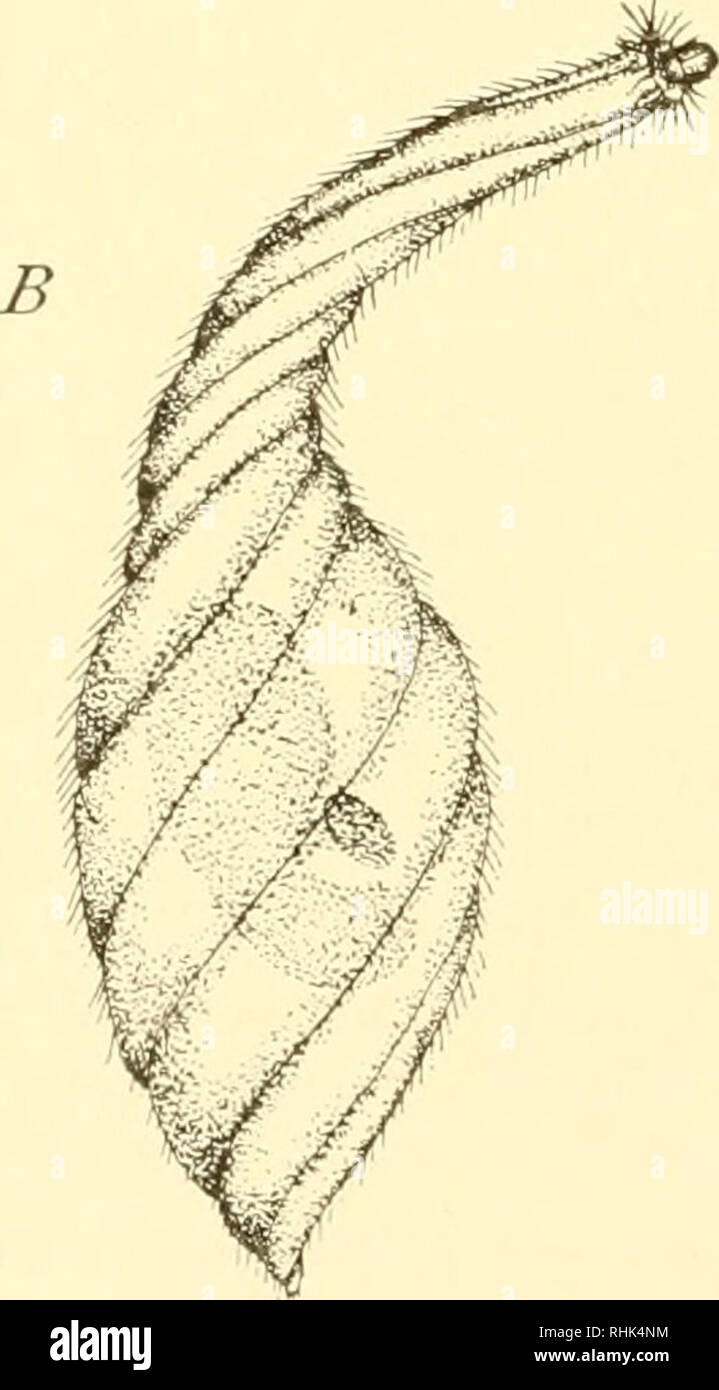 . The biology of the protozoa. Protozoa; Protozoa. Fig. 15.—Diagrams illustrating shifting of the mouth in ciliates from terminal to lateral or ventral surface (A, B, C, D). E, Prorodon griseus, corresponds with A; F, Am.phileptus claparedi, corresponds with B or C; and G, Nassula microstoma, corre- sponds with D. (E and F, after Butschli; G, after Calkins.) A. Please note that these images are extracted from scanned page images that may have been digitally enhanced for readability - coloration and appearance of these illustrations may not perfectly resemble the original work.. Calkins, Gary N Stock Photohttps://www.alamy.com/image-license-details/?v=1https://www.alamy.com/the-biology-of-the-protozoa-protozoa-protozoa-fig-15diagrams-illustrating-shifting-of-the-mouth-in-ciliates-from-terminal-to-lateral-or-ventral-surface-a-b-c-d-e-prorodon-griseus-corresponds-with-a-f-amphileptus-claparedi-corresponds-with-b-or-c-and-g-nassula-microstoma-corre-sponds-with-d-e-and-f-after-butschli-g-after-calkins-a-please-note-that-these-images-are-extracted-from-scanned-page-images-that-may-have-been-digitally-enhanced-for-readability-coloration-and-appearance-of-these-illustrations-may-not-perfectly-resemble-the-original-work-calkins-gary-n-image234604768.html
. The biology of the protozoa. Protozoa; Protozoa. Fig. 15.—Diagrams illustrating shifting of the mouth in ciliates from terminal to lateral or ventral surface (A, B, C, D). E, Prorodon griseus, corresponds with A; F, Am.phileptus claparedi, corresponds with B or C; and G, Nassula microstoma, corre- sponds with D. (E and F, after Butschli; G, after Calkins.) A. Please note that these images are extracted from scanned page images that may have been digitally enhanced for readability - coloration and appearance of these illustrations may not perfectly resemble the original work.. Calkins, Gary N Stock Photohttps://www.alamy.com/image-license-details/?v=1https://www.alamy.com/the-biology-of-the-protozoa-protozoa-protozoa-fig-15diagrams-illustrating-shifting-of-the-mouth-in-ciliates-from-terminal-to-lateral-or-ventral-surface-a-b-c-d-e-prorodon-griseus-corresponds-with-a-f-amphileptus-claparedi-corresponds-with-b-or-c-and-g-nassula-microstoma-corre-sponds-with-d-e-and-f-after-butschli-g-after-calkins-a-please-note-that-these-images-are-extracted-from-scanned-page-images-that-may-have-been-digitally-enhanced-for-readability-coloration-and-appearance-of-these-illustrations-may-not-perfectly-resemble-the-original-work-calkins-gary-n-image234604768.htmlRMRHK4NM–. The biology of the protozoa. Protozoa; Protozoa. Fig. 15.—Diagrams illustrating shifting of the mouth in ciliates from terminal to lateral or ventral surface (A, B, C, D). E, Prorodon griseus, corresponds with A; F, Am.phileptus claparedi, corresponds with B or C; and G, Nassula microstoma, corre- sponds with D. (E and F, after Butschli; G, after Calkins.) A. Please note that these images are extracted from scanned page images that may have been digitally enhanced for readability - coloration and appearance of these illustrations may not perfectly resemble the original work.. Calkins, Gary N
 The South American Gray Fox, Lycalopex griseus, is also known as the chilla, the gray zorro or the Patagonia Fox. They are commonly found throughout P Stock Photohttps://www.alamy.com/image-license-details/?v=1https://www.alamy.com/the-south-american-gray-fox-lycalopex-griseus-is-also-known-as-the-chilla-the-gray-zorro-or-the-patagonia-fox-they-are-commonly-found-throughout-p-image371295071.html
The South American Gray Fox, Lycalopex griseus, is also known as the chilla, the gray zorro or the Patagonia Fox. They are commonly found throughout P Stock Photohttps://www.alamy.com/image-license-details/?v=1https://www.alamy.com/the-south-american-gray-fox-lycalopex-griseus-is-also-known-as-the-chilla-the-gray-zorro-or-the-patagonia-fox-they-are-commonly-found-throughout-p-image371295071.htmlRM2CG1XJ7–The South American Gray Fox, Lycalopex griseus, is also known as the chilla, the gray zorro or the Patagonia Fox. They are commonly found throughout P
 The South American Gray Fox, Lycalopex griseus, is also known as the chilla, the gray zorro or the Patagonia Fox. They are commonly found throughout P Stock Photohttps://www.alamy.com/image-license-details/?v=1https://www.alamy.com/the-south-american-gray-fox-lycalopex-griseus-is-also-known-as-the-chilla-the-gray-zorro-or-the-patagonia-fox-they-are-commonly-found-throughout-p-image371287562.html
The South American Gray Fox, Lycalopex griseus, is also known as the chilla, the gray zorro or the Patagonia Fox. They are commonly found throughout P Stock Photohttps://www.alamy.com/image-license-details/?v=1https://www.alamy.com/the-south-american-gray-fox-lycalopex-griseus-is-also-known-as-the-chilla-the-gray-zorro-or-the-patagonia-fox-they-are-commonly-found-throughout-p-image371287562.htmlRM2CG1H22–The South American Gray Fox, Lycalopex griseus, is also known as the chilla, the gray zorro or the Patagonia Fox. They are commonly found throughout P
 . The biology of the Protozoa. Protozoa; Protozoa. .yf^ G Fig. 13.—Diagrams illustrating shifting of the mouth in ciliates from terminal to lateral or ventral surface {A, B, C, D). E, Prorodon griseus eorrespond.s with A; F, Amphileptus claparedi, corresponds with B or C; and G, Nassula microstoma, corre- sponds with D. (E and F, after Biitschli; G, after Calkins.) pletel^' and reproduction has no effect on the form assumed. Thus the foraminiferon AUogromia uiifor»ie gives rise by what is termed budding division to a free daughter cell which builds an indepen- dent test for itself while the ot Stock Photohttps://www.alamy.com/image-license-details/?v=1https://www.alamy.com/the-biology-of-the-protozoa-protozoa-protozoa-yf-g-fig-13diagrams-illustrating-shifting-of-the-mouth-in-ciliates-from-terminal-to-lateral-or-ventral-surface-a-b-c-d-e-prorodon-griseus-eorresponds-with-a-f-amphileptus-claparedi-corresponds-with-b-or-c-and-g-nassula-microstoma-corre-sponds-with-d-e-and-f-after-biitschli-g-after-calkins-pletel-and-reproduction-has-no-effect-on-the-form-assumed-thus-the-foraminiferon-auogromia-uiiforie-gives-rise-by-what-is-termed-budding-division-to-a-free-daughter-cell-which-builds-an-indepen-dent-test-for-itself-while-the-ot-image234604976.html
. The biology of the Protozoa. Protozoa; Protozoa. .yf^ G Fig. 13.—Diagrams illustrating shifting of the mouth in ciliates from terminal to lateral or ventral surface {A, B, C, D). E, Prorodon griseus eorrespond.s with A; F, Amphileptus claparedi, corresponds with B or C; and G, Nassula microstoma, corre- sponds with D. (E and F, after Biitschli; G, after Calkins.) pletel^' and reproduction has no effect on the form assumed. Thus the foraminiferon AUogromia uiifor»ie gives rise by what is termed budding division to a free daughter cell which builds an indepen- dent test for itself while the ot Stock Photohttps://www.alamy.com/image-license-details/?v=1https://www.alamy.com/the-biology-of-the-protozoa-protozoa-protozoa-yf-g-fig-13diagrams-illustrating-shifting-of-the-mouth-in-ciliates-from-terminal-to-lateral-or-ventral-surface-a-b-c-d-e-prorodon-griseus-eorresponds-with-a-f-amphileptus-claparedi-corresponds-with-b-or-c-and-g-nassula-microstoma-corre-sponds-with-d-e-and-f-after-biitschli-g-after-calkins-pletel-and-reproduction-has-no-effect-on-the-form-assumed-thus-the-foraminiferon-auogromia-uiiforie-gives-rise-by-what-is-termed-budding-division-to-a-free-daughter-cell-which-builds-an-indepen-dent-test-for-itself-while-the-ot-image234604976.htmlRMRHK514–. The biology of the Protozoa. Protozoa; Protozoa. .yf^ G Fig. 13.—Diagrams illustrating shifting of the mouth in ciliates from terminal to lateral or ventral surface {A, B, C, D). E, Prorodon griseus eorrespond.s with A; F, Amphileptus claparedi, corresponds with B or C; and G, Nassula microstoma, corre- sponds with D. (E and F, after Biitschli; G, after Calkins.) pletel^' and reproduction has no effect on the form assumed. Thus the foraminiferon AUogromia uiifor»ie gives rise by what is termed budding division to a free daughter cell which builds an indepen- dent test for itself while the ot
 The South American Gray Fox, Lycalopex griseus, is also known as the chilla, the gray zorro or the Patagonia Fox. They are commonly found throughout P Stock Photohttps://www.alamy.com/image-license-details/?v=1https://www.alamy.com/the-south-american-gray-fox-lycalopex-griseus-is-also-known-as-the-chilla-the-gray-zorro-or-the-patagonia-fox-they-are-commonly-found-throughout-p-image371294703.html
The South American Gray Fox, Lycalopex griseus, is also known as the chilla, the gray zorro or the Patagonia Fox. They are commonly found throughout P Stock Photohttps://www.alamy.com/image-license-details/?v=1https://www.alamy.com/the-south-american-gray-fox-lycalopex-griseus-is-also-known-as-the-chilla-the-gray-zorro-or-the-patagonia-fox-they-are-commonly-found-throughout-p-image371294703.htmlRM2CG1X53–The South American Gray Fox, Lycalopex griseus, is also known as the chilla, the gray zorro or the Patagonia Fox. They are commonly found throughout P
 The South American Gray Fox, Lycalopex griseus, is also known as the chilla, the gray zorro or the Patagonia Fox. They are commonly found throughout P Stock Photohttps://www.alamy.com/image-license-details/?v=1https://www.alamy.com/the-south-american-gray-fox-lycalopex-griseus-is-also-known-as-the-chilla-the-gray-zorro-or-the-patagonia-fox-they-are-commonly-found-throughout-p-image371287514.html
The South American Gray Fox, Lycalopex griseus, is also known as the chilla, the gray zorro or the Patagonia Fox. They are commonly found throughout P Stock Photohttps://www.alamy.com/image-license-details/?v=1https://www.alamy.com/the-south-american-gray-fox-lycalopex-griseus-is-also-known-as-the-chilla-the-gray-zorro-or-the-patagonia-fox-they-are-commonly-found-throughout-p-image371287514.htmlRM2CG1H0A–The South American Gray Fox, Lycalopex griseus, is also known as the chilla, the gray zorro or the Patagonia Fox. They are commonly found throughout P
 . Allgemeine Zeitschrift für Entomologie Organ der "Allgemeinen Entomologischen Gesellschaft" ; Internationales Organ für die Interessen der allgemeinen und angewandten Entomologie wie der Insekten-Biologie. Insects. Vorkommen von Tu'allen an den Beinen einiger Trichopterenpuppen. 263 2. Limnophilidae. Bei keiner einzigen der hier untersuchten 28 Pappen (Colpotaulius incisus, Glyphotaelius pellucidus und G. punctatolineatus, Grammotaulius atomar ins, Limnophilus vittatus, L. lunatus, L. rhomhicus, L. flavicornis, L. griseus, L. hipunctatus, L. stigma, L. decipiens, L. centralis, L. f Stock Photohttps://www.alamy.com/image-license-details/?v=1https://www.alamy.com/allgemeine-zeitschrift-fr-entomologie-organ-der-quotallgemeinen-entomologischen-gesellschaftquot-internationales-organ-fr-die-interessen-der-allgemeinen-und-angewandten-entomologie-wie-der-insekten-biologie-insects-vorkommen-von-tuallen-an-den-beinen-einiger-trichopterenpuppen-263-2-limnophilidae-bei-keiner-einzigen-der-hier-untersuchten-28-pappen-colpotaulius-incisus-glyphotaelius-pellucidus-und-g-punctatolineatus-grammotaulius-atomar-ins-limnophilus-vittatus-l-lunatus-l-rhomhicus-l-flavicornis-l-griseus-l-hipunctatus-l-stigma-l-decipiens-l-centralis-l-f-image237785423.html
. Allgemeine Zeitschrift für Entomologie Organ der "Allgemeinen Entomologischen Gesellschaft" ; Internationales Organ für die Interessen der allgemeinen und angewandten Entomologie wie der Insekten-Biologie. Insects. Vorkommen von Tu'allen an den Beinen einiger Trichopterenpuppen. 263 2. Limnophilidae. Bei keiner einzigen der hier untersuchten 28 Pappen (Colpotaulius incisus, Glyphotaelius pellucidus und G. punctatolineatus, Grammotaulius atomar ins, Limnophilus vittatus, L. lunatus, L. rhomhicus, L. flavicornis, L. griseus, L. hipunctatus, L. stigma, L. decipiens, L. centralis, L. f Stock Photohttps://www.alamy.com/image-license-details/?v=1https://www.alamy.com/allgemeine-zeitschrift-fr-entomologie-organ-der-quotallgemeinen-entomologischen-gesellschaftquot-internationales-organ-fr-die-interessen-der-allgemeinen-und-angewandten-entomologie-wie-der-insekten-biologie-insects-vorkommen-von-tuallen-an-den-beinen-einiger-trichopterenpuppen-263-2-limnophilidae-bei-keiner-einzigen-der-hier-untersuchten-28-pappen-colpotaulius-incisus-glyphotaelius-pellucidus-und-g-punctatolineatus-grammotaulius-atomar-ins-limnophilus-vittatus-l-lunatus-l-rhomhicus-l-flavicornis-l-griseus-l-hipunctatus-l-stigma-l-decipiens-l-centralis-l-f-image237785423.htmlRMRPT1MF–. Allgemeine Zeitschrift für Entomologie Organ der "Allgemeinen Entomologischen Gesellschaft" ; Internationales Organ für die Interessen der allgemeinen und angewandten Entomologie wie der Insekten-Biologie. Insects. Vorkommen von Tu'allen an den Beinen einiger Trichopterenpuppen. 263 2. Limnophilidae. Bei keiner einzigen der hier untersuchten 28 Pappen (Colpotaulius incisus, Glyphotaelius pellucidus und G. punctatolineatus, Grammotaulius atomar ins, Limnophilus vittatus, L. lunatus, L. rhomhicus, L. flavicornis, L. griseus, L. hipunctatus, L. stigma, L. decipiens, L. centralis, L. f
 The South American Gray Fox, Lycalopex griseus, is also known as the chilla, the gray zorro or the Patagonia Fox. They are commonly found throughout P Stock Photohttps://www.alamy.com/image-license-details/?v=1https://www.alamy.com/the-south-american-gray-fox-lycalopex-griseus-is-also-known-as-the-chilla-the-gray-zorro-or-the-patagonia-fox-they-are-commonly-found-throughout-p-image371294811.html
The South American Gray Fox, Lycalopex griseus, is also known as the chilla, the gray zorro or the Patagonia Fox. They are commonly found throughout P Stock Photohttps://www.alamy.com/image-license-details/?v=1https://www.alamy.com/the-south-american-gray-fox-lycalopex-griseus-is-also-known-as-the-chilla-the-gray-zorro-or-the-patagonia-fox-they-are-commonly-found-throughout-p-image371294811.htmlRM2CG1X8Y–The South American Gray Fox, Lycalopex griseus, is also known as the chilla, the gray zorro or the Patagonia Fox. They are commonly found throughout P
 The South American Gray Fox, Lycalopex griseus, is also known as the chilla, the gray zorro or the Patagonia Fox. They are commonly found throughout P Stock Photohttps://www.alamy.com/image-license-details/?v=1https://www.alamy.com/the-south-american-gray-fox-lycalopex-griseus-is-also-known-as-the-chilla-the-gray-zorro-or-the-patagonia-fox-they-are-commonly-found-throughout-p-image371287521.html
The South American Gray Fox, Lycalopex griseus, is also known as the chilla, the gray zorro or the Patagonia Fox. They are commonly found throughout P Stock Photohttps://www.alamy.com/image-license-details/?v=1https://www.alamy.com/the-south-american-gray-fox-lycalopex-griseus-is-also-known-as-the-chilla-the-gray-zorro-or-the-patagonia-fox-they-are-commonly-found-throughout-p-image371287521.htmlRM2CG1H0H–The South American Gray Fox, Lycalopex griseus, is also known as the chilla, the gray zorro or the Patagonia Fox. They are commonly found throughout P
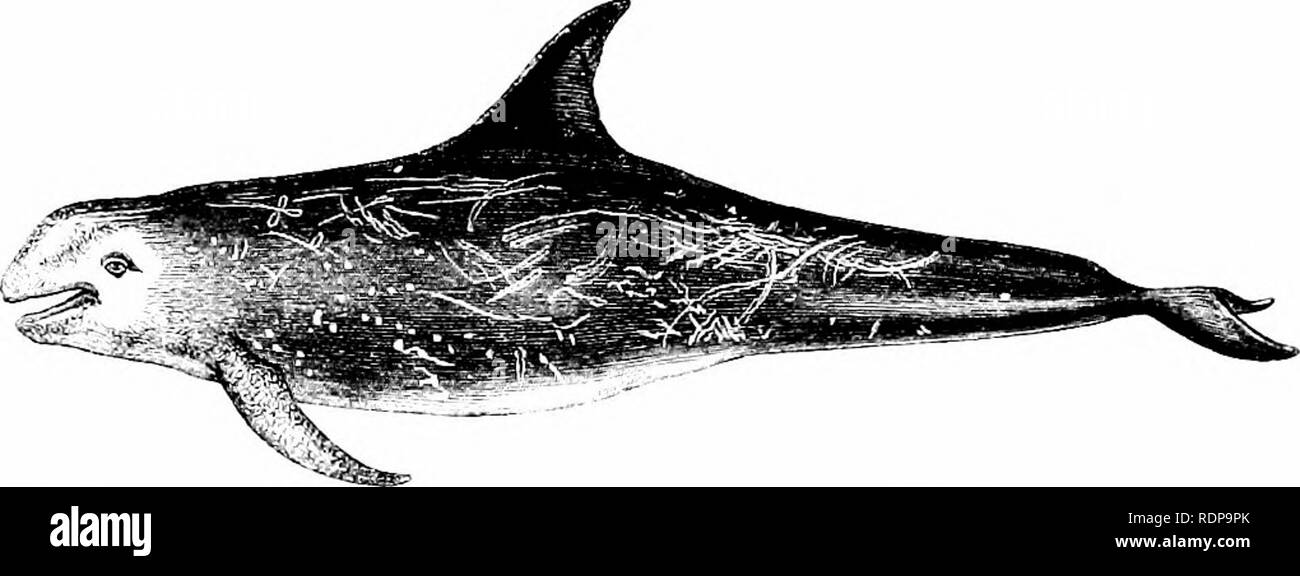 . A history of British quadrupeds, including the Cetacea. Mammals. 450 DELPHINIDiE. CETACEA. DELPBINJDJE. (ODONTOCETI).. Genus Grampus (Graj', 1846). (niicric CJianicter:—Head rounded, no beak; flipxiers long and narrow, placed low down ; dorsal-fin high. No teeth in upper jaw at any age, those of lower jaw few, and confined to the front part of the mandible. RISSO'S GRAMPUS. Grampus griseus (G. Cuvier). Specific Character :— Colour variable, from black above and white below to a pale grey passing to black towards the tail, marked all over vdth. stripes and streaks irregularly disposed in ever Stock Photohttps://www.alamy.com/image-license-details/?v=1https://www.alamy.com/a-history-of-british-quadrupeds-including-the-cetacea-mammals-450-delphinidie-cetacea-delpbinjdje-odontoceti-genus-grampus-graj-1846-niicric-cjianicterhead-rounded-no-beak-flipxiers-long-and-narrow-placed-low-down-dorsal-fin-high-no-teeth-in-upper-jaw-at-any-age-those-of-lower-jaw-few-and-confined-to-the-front-part-of-the-mandible-rissos-grampus-grampus-griseus-g-cuvier-specific-character-colour-variable-from-black-above-and-white-below-to-a-pale-grey-passing-to-black-towards-the-tail-marked-all-over-vdth-stripes-and-streaks-irregularly-disposed-in-ever-image232215947.html
. A history of British quadrupeds, including the Cetacea. Mammals. 450 DELPHINIDiE. CETACEA. DELPBINJDJE. (ODONTOCETI).. Genus Grampus (Graj', 1846). (niicric CJianicter:—Head rounded, no beak; flipxiers long and narrow, placed low down ; dorsal-fin high. No teeth in upper jaw at any age, those of lower jaw few, and confined to the front part of the mandible. RISSO'S GRAMPUS. Grampus griseus (G. Cuvier). Specific Character :— Colour variable, from black above and white below to a pale grey passing to black towards the tail, marked all over vdth. stripes and streaks irregularly disposed in ever Stock Photohttps://www.alamy.com/image-license-details/?v=1https://www.alamy.com/a-history-of-british-quadrupeds-including-the-cetacea-mammals-450-delphinidie-cetacea-delpbinjdje-odontoceti-genus-grampus-graj-1846-niicric-cjianicterhead-rounded-no-beak-flipxiers-long-and-narrow-placed-low-down-dorsal-fin-high-no-teeth-in-upper-jaw-at-any-age-those-of-lower-jaw-few-and-confined-to-the-front-part-of-the-mandible-rissos-grampus-grampus-griseus-g-cuvier-specific-character-colour-variable-from-black-above-and-white-below-to-a-pale-grey-passing-to-black-towards-the-tail-marked-all-over-vdth-stripes-and-streaks-irregularly-disposed-in-ever-image232215947.htmlRMRDP9PK–. A history of British quadrupeds, including the Cetacea. Mammals. 450 DELPHINIDiE. CETACEA. DELPBINJDJE. (ODONTOCETI).. Genus Grampus (Graj', 1846). (niicric CJianicter:—Head rounded, no beak; flipxiers long and narrow, placed low down ; dorsal-fin high. No teeth in upper jaw at any age, those of lower jaw few, and confined to the front part of the mandible. RISSO'S GRAMPUS. Grampus griseus (G. Cuvier). Specific Character :— Colour variable, from black above and white below to a pale grey passing to black towards the tail, marked all over vdth. stripes and streaks irregularly disposed in ever
 The South American Gray Fox, Lycalopex griseus, is also known as the chilla, the gray zorro or the Patagonia Fox. They are commonly found throughout P Stock Photohttps://www.alamy.com/image-license-details/?v=1https://www.alamy.com/the-south-american-gray-fox-lycalopex-griseus-is-also-known-as-the-chilla-the-gray-zorro-or-the-patagonia-fox-they-are-commonly-found-throughout-p-image371295170.html
The South American Gray Fox, Lycalopex griseus, is also known as the chilla, the gray zorro or the Patagonia Fox. They are commonly found throughout P Stock Photohttps://www.alamy.com/image-license-details/?v=1https://www.alamy.com/the-south-american-gray-fox-lycalopex-griseus-is-also-known-as-the-chilla-the-gray-zorro-or-the-patagonia-fox-they-are-commonly-found-throughout-p-image371295170.htmlRM2CG1XNP–The South American Gray Fox, Lycalopex griseus, is also known as the chilla, the gray zorro or the Patagonia Fox. They are commonly found throughout P
 The South American Gray Fox, Lycalopex griseus, is also known as the chilla, the gray zorro or the Patagonia Fox. They are commonly found throughout P Stock Photohttps://www.alamy.com/image-license-details/?v=1https://www.alamy.com/the-south-american-gray-fox-lycalopex-griseus-is-also-known-as-the-chilla-the-gray-zorro-or-the-patagonia-fox-they-are-commonly-found-throughout-p-image371287502.html
The South American Gray Fox, Lycalopex griseus, is also known as the chilla, the gray zorro or the Patagonia Fox. They are commonly found throughout P Stock Photohttps://www.alamy.com/image-license-details/?v=1https://www.alamy.com/the-south-american-gray-fox-lycalopex-griseus-is-also-known-as-the-chilla-the-gray-zorro-or-the-patagonia-fox-they-are-commonly-found-throughout-p-image371287502.htmlRM2CG1GYX–The South American Gray Fox, Lycalopex griseus, is also known as the chilla, the gray zorro or the Patagonia Fox. They are commonly found throughout P
 . Bollettino della Societá romana per gli studi zoologici. Societá romana gli studi zoologici; Zoology; Zoology. Prof. A. CARRUGGIO. — Mascelle di Hexanchus grìseus (circa V3 della grand, nat.. lUn. Soc. Rom. Studi Zooloy. Voi. V. A. Mascelle viste dalla faccia est. o convessa U.^* G. /XES3ANDR1NI fot. B. Idem viste dalla faccia int. 0 concava.. Please note that these images are extracted from scanned page images that may have been digitally enhanced for readability - coloration and appearance of these illustrations may not perfectly resemble the original work.. Societá romana per gli studi z Stock Photohttps://www.alamy.com/image-license-details/?v=1https://www.alamy.com/bollettino-della-societ-romana-per-gli-studi-zoologici-societ-romana-gli-studi-zoologici-zoology-zoology-prof-a-carruggio-mascelle-di-hexanchus-grseus-circa-v3-della-grand-nat-lun-soc-rom-studi-zooloy-voi-v-a-mascelle-viste-dalla-faccia-est-o-convessa-u-g-xes3andr1ni-fot-b-idem-viste-dalla-faccia-int-0-concava-please-note-that-these-images-are-extracted-from-scanned-page-images-that-may-have-been-digitally-enhanced-for-readability-coloration-and-appearance-of-these-illustrations-may-not-perfectly-resemble-the-original-work-societ-romana-per-gli-studi-z-image234497817.html
. Bollettino della Societá romana per gli studi zoologici. Societá romana gli studi zoologici; Zoology; Zoology. Prof. A. CARRUGGIO. — Mascelle di Hexanchus grìseus (circa V3 della grand, nat.. lUn. Soc. Rom. Studi Zooloy. Voi. V. A. Mascelle viste dalla faccia est. o convessa U.^* G. /XES3ANDR1NI fot. B. Idem viste dalla faccia int. 0 concava.. Please note that these images are extracted from scanned page images that may have been digitally enhanced for readability - coloration and appearance of these illustrations may not perfectly resemble the original work.. Societá romana per gli studi z Stock Photohttps://www.alamy.com/image-license-details/?v=1https://www.alamy.com/bollettino-della-societ-romana-per-gli-studi-zoologici-societ-romana-gli-studi-zoologici-zoology-zoology-prof-a-carruggio-mascelle-di-hexanchus-grseus-circa-v3-della-grand-nat-lun-soc-rom-studi-zooloy-voi-v-a-mascelle-viste-dalla-faccia-est-o-convessa-u-g-xes3andr1ni-fot-b-idem-viste-dalla-faccia-int-0-concava-please-note-that-these-images-are-extracted-from-scanned-page-images-that-may-have-been-digitally-enhanced-for-readability-coloration-and-appearance-of-these-illustrations-may-not-perfectly-resemble-the-original-work-societ-romana-per-gli-studi-z-image234497817.htmlRMRHE8A1–. Bollettino della Societá romana per gli studi zoologici. Societá romana gli studi zoologici; Zoology; Zoology. Prof. A. CARRUGGIO. — Mascelle di Hexanchus grìseus (circa V3 della grand, nat.. lUn. Soc. Rom. Studi Zooloy. Voi. V. A. Mascelle viste dalla faccia est. o convessa U.^* G. /XES3ANDR1NI fot. B. Idem viste dalla faccia int. 0 concava.. Please note that these images are extracted from scanned page images that may have been digitally enhanced for readability - coloration and appearance of these illustrations may not perfectly resemble the original work.. Societá romana per gli studi z
 The South American Gray Fox, Lycalopex griseus, is also known as the chilla, the gray zorro or the Patagonia Fox. They are commonly found throughout P Stock Photohttps://www.alamy.com/image-license-details/?v=1https://www.alamy.com/the-south-american-gray-fox-lycalopex-griseus-is-also-known-as-the-chilla-the-gray-zorro-or-the-patagonia-fox-they-are-commonly-found-throughout-p-image371295137.html
The South American Gray Fox, Lycalopex griseus, is also known as the chilla, the gray zorro or the Patagonia Fox. They are commonly found throughout P Stock Photohttps://www.alamy.com/image-license-details/?v=1https://www.alamy.com/the-south-american-gray-fox-lycalopex-griseus-is-also-known-as-the-chilla-the-gray-zorro-or-the-patagonia-fox-they-are-commonly-found-throughout-p-image371295137.htmlRM2CG1XMH–The South American Gray Fox, Lycalopex griseus, is also known as the chilla, the gray zorro or the Patagonia Fox. They are commonly found throughout P
 The South American Gray Fox, Lycalopex griseus, is also known as the chilla, the gray zorro or the Patagonia Fox. They are commonly found throughout P Stock Photohttps://www.alamy.com/image-license-details/?v=1https://www.alamy.com/the-south-american-gray-fox-lycalopex-griseus-is-also-known-as-the-chilla-the-gray-zorro-or-the-patagonia-fox-they-are-commonly-found-throughout-p-image371287515.html
The South American Gray Fox, Lycalopex griseus, is also known as the chilla, the gray zorro or the Patagonia Fox. They are commonly found throughout P Stock Photohttps://www.alamy.com/image-license-details/?v=1https://www.alamy.com/the-south-american-gray-fox-lycalopex-griseus-is-also-known-as-the-chilla-the-gray-zorro-or-the-patagonia-fox-they-are-commonly-found-throughout-p-image371287515.htmlRM2CG1H0B–The South American Gray Fox, Lycalopex griseus, is also known as the chilla, the gray zorro or the Patagonia Fox. They are commonly found throughout P
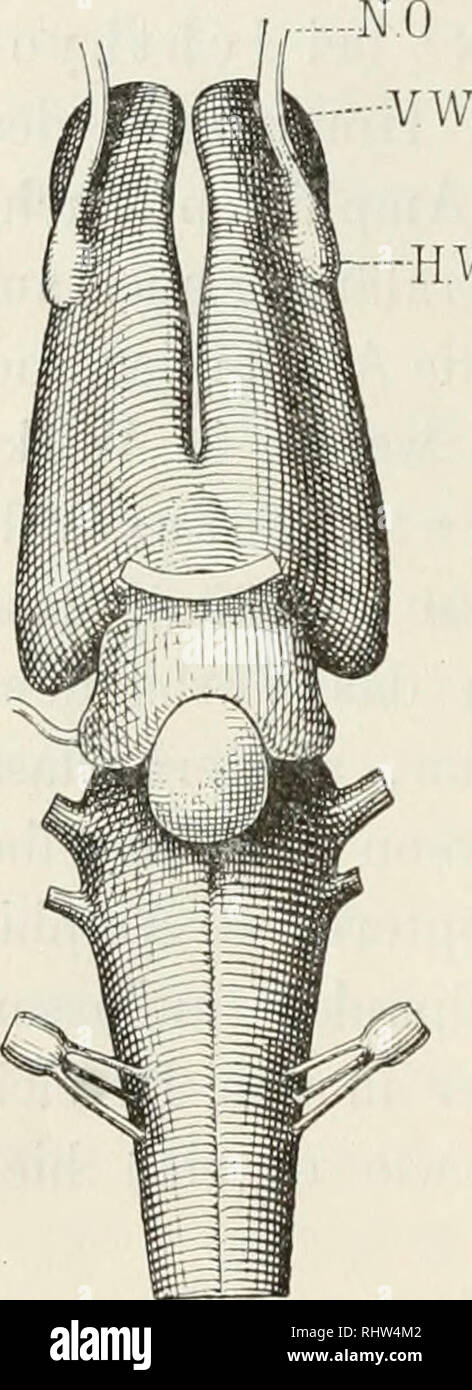 . Berichte der Naturforschenden Gesellschaft zu Freiburg i. Br. Science. 10 LeE: [188 -HW Hexanchus griseus (Miklucho Maclay, Taf. II, Fig. SA), ist keine äussere Ciliederung sichtbar: bei weitaus den meisten Typen ist sie aber deutlich ausgeprägt; bei Carcharias glaucus (Miklucho Maclay, Taf. ly, IIA) ist der Lobus sogar in zwei vollständig getrennte Hälften gegliedert. Das mikroskopische Bild entspricht auch, z. B. auf einem Hori- zontalschnitt von Scyllium canicula, vollständig den makroskopi- schen Verhältnissen. Die Fila ziehen beiderseits nach ihrem Austritt aus der Riechschleimhaut zu g Stock Photohttps://www.alamy.com/image-license-details/?v=1https://www.alamy.com/berichte-der-naturforschenden-gesellschaft-zu-freiburg-i-br-science-10-lee-188-hw-hexanchus-griseus-miklucho-maclay-taf-ii-fig-sa-ist-keine-ussere-ciliederung-sichtbar-bei-weitaus-den-meisten-typen-ist-sie-aber-deutlich-ausgeprgt-bei-carcharias-glaucus-miklucho-maclay-taf-ly-iia-ist-der-lobus-sogar-in-zwei-vollstndig-getrennte-hlften-gegliedert-das-mikroskopische-bild-entspricht-auch-z-b-auf-einem-hori-zontalschnitt-von-scyllium-canicula-vollstndig-den-makroskopi-schen-verhltnissen-die-fila-ziehen-beiderseits-nach-ihrem-austritt-aus-der-riechschleimhaut-zu-g-image234736434.html
. Berichte der Naturforschenden Gesellschaft zu Freiburg i. Br. Science. 10 LeE: [188 -HW Hexanchus griseus (Miklucho Maclay, Taf. II, Fig. SA), ist keine äussere Ciliederung sichtbar: bei weitaus den meisten Typen ist sie aber deutlich ausgeprägt; bei Carcharias glaucus (Miklucho Maclay, Taf. ly, IIA) ist der Lobus sogar in zwei vollständig getrennte Hälften gegliedert. Das mikroskopische Bild entspricht auch, z. B. auf einem Hori- zontalschnitt von Scyllium canicula, vollständig den makroskopi- schen Verhältnissen. Die Fila ziehen beiderseits nach ihrem Austritt aus der Riechschleimhaut zu g Stock Photohttps://www.alamy.com/image-license-details/?v=1https://www.alamy.com/berichte-der-naturforschenden-gesellschaft-zu-freiburg-i-br-science-10-lee-188-hw-hexanchus-griseus-miklucho-maclay-taf-ii-fig-sa-ist-keine-ussere-ciliederung-sichtbar-bei-weitaus-den-meisten-typen-ist-sie-aber-deutlich-ausgeprgt-bei-carcharias-glaucus-miklucho-maclay-taf-ly-iia-ist-der-lobus-sogar-in-zwei-vollstndig-getrennte-hlften-gegliedert-das-mikroskopische-bild-entspricht-auch-z-b-auf-einem-hori-zontalschnitt-von-scyllium-canicula-vollstndig-den-makroskopi-schen-verhltnissen-die-fila-ziehen-beiderseits-nach-ihrem-austritt-aus-der-riechschleimhaut-zu-g-image234736434.htmlRMRHW4M2–. Berichte der Naturforschenden Gesellschaft zu Freiburg i. Br. Science. 10 LeE: [188 -HW Hexanchus griseus (Miklucho Maclay, Taf. II, Fig. SA), ist keine äussere Ciliederung sichtbar: bei weitaus den meisten Typen ist sie aber deutlich ausgeprägt; bei Carcharias glaucus (Miklucho Maclay, Taf. ly, IIA) ist der Lobus sogar in zwei vollständig getrennte Hälften gegliedert. Das mikroskopische Bild entspricht auch, z. B. auf einem Hori- zontalschnitt von Scyllium canicula, vollständig den makroskopi- schen Verhältnissen. Die Fila ziehen beiderseits nach ihrem Austritt aus der Riechschleimhaut zu g
 The South American Gray Fox, Lycalopex griseus, is also known as the chilla, the gray zorro or the Patagonia Fox. They are commonly found throughout P Stock Photohttps://www.alamy.com/image-license-details/?v=1https://www.alamy.com/the-south-american-gray-fox-lycalopex-griseus-is-also-known-as-the-chilla-the-gray-zorro-or-the-patagonia-fox-they-are-commonly-found-throughout-p-image371295228.html
The South American Gray Fox, Lycalopex griseus, is also known as the chilla, the gray zorro or the Patagonia Fox. They are commonly found throughout P Stock Photohttps://www.alamy.com/image-license-details/?v=1https://www.alamy.com/the-south-american-gray-fox-lycalopex-griseus-is-also-known-as-the-chilla-the-gray-zorro-or-the-patagonia-fox-they-are-commonly-found-throughout-p-image371295228.htmlRM2CG1XRT–The South American Gray Fox, Lycalopex griseus, is also known as the chilla, the gray zorro or the Patagonia Fox. They are commonly found throughout P
 The South American Gray Fox, Lycalopex griseus, is also known as the chilla, the gray zorro or the Patagonia Fox. They are commonly found throughout P Stock Photohttps://www.alamy.com/image-license-details/?v=1https://www.alamy.com/the-south-american-gray-fox-lycalopex-griseus-is-also-known-as-the-chilla-the-gray-zorro-or-the-patagonia-fox-they-are-commonly-found-throughout-p-image371287558.html
The South American Gray Fox, Lycalopex griseus, is also known as the chilla, the gray zorro or the Patagonia Fox. They are commonly found throughout P Stock Photohttps://www.alamy.com/image-license-details/?v=1https://www.alamy.com/the-south-american-gray-fox-lycalopex-griseus-is-also-known-as-the-chilla-the-gray-zorro-or-the-patagonia-fox-they-are-commonly-found-throughout-p-image371287558.htmlRM2CG1H1X–The South American Gray Fox, Lycalopex griseus, is also known as the chilla, the gray zorro or the Patagonia Fox. They are commonly found throughout P
 . Encyclopédie d'histoire naturelle; ou, Traité complet de cette science d'après les travaux des naturalistes les plus éminents de tous les pays et de toutes les époques: Buffon, Daubenton, Lacépède, G. Cuvier, F. Cuvier, Geoffroy Saint-Hilaire, Latreille, De Jussieu, Brongniart, etc. etc. Natural history. 278 HISTOIRE NATURELLE. Abeilles se réunissent et l'atlaquent en niasse, elles lui opposent assez de résistance pour le faire reculer; plusieurs Tyrans réunis ne peuvent même entamer leur bataillon serré. (Vieillot.) Une autre espèce, le Pipiri, Tyiaunus griseus, Vieillot, que B Stock Photohttps://www.alamy.com/image-license-details/?v=1https://www.alamy.com/encyclopdie-dhistoire-naturelle-ou-trait-complet-de-cette-science-daprs-les-travaux-des-naturalistes-les-plus-minents-de-tous-les-pays-et-de-toutes-les-poques-buffon-daubenton-lacpde-g-cuvier-f-cuvier-geoffroy-saint-hilaire-latreille-de-jussieu-brongniart-etc-etc-natural-history-278-histoire-naturelle-abeilles-se-runissent-et-latlaquent-en-niasse-elles-lui-opposent-assez-de-rsistance-pour-le-faire-reculer-plusieurs-tyrans-runis-ne-peuvent-mme-entamer-leur-bataillon-serr-vieillot-une-autre-espce-le-pipiri-tyiaunus-griseus-vieillot-que-b-image231897675.html
. Encyclopédie d'histoire naturelle; ou, Traité complet de cette science d'après les travaux des naturalistes les plus éminents de tous les pays et de toutes les époques: Buffon, Daubenton, Lacépède, G. Cuvier, F. Cuvier, Geoffroy Saint-Hilaire, Latreille, De Jussieu, Brongniart, etc. etc. Natural history. 278 HISTOIRE NATURELLE. Abeilles se réunissent et l'atlaquent en niasse, elles lui opposent assez de résistance pour le faire reculer; plusieurs Tyrans réunis ne peuvent même entamer leur bataillon serré. (Vieillot.) Une autre espèce, le Pipiri, Tyiaunus griseus, Vieillot, que B Stock Photohttps://www.alamy.com/image-license-details/?v=1https://www.alamy.com/encyclopdie-dhistoire-naturelle-ou-trait-complet-de-cette-science-daprs-les-travaux-des-naturalistes-les-plus-minents-de-tous-les-pays-et-de-toutes-les-poques-buffon-daubenton-lacpde-g-cuvier-f-cuvier-geoffroy-saint-hilaire-latreille-de-jussieu-brongniart-etc-etc-natural-history-278-histoire-naturelle-abeilles-se-runissent-et-latlaquent-en-niasse-elles-lui-opposent-assez-de-rsistance-pour-le-faire-reculer-plusieurs-tyrans-runis-ne-peuvent-mme-entamer-leur-bataillon-serr-vieillot-une-autre-espce-le-pipiri-tyiaunus-griseus-vieillot-que-b-image231897675.htmlRMRD7RRR–. Encyclopédie d'histoire naturelle; ou, Traité complet de cette science d'après les travaux des naturalistes les plus éminents de tous les pays et de toutes les époques: Buffon, Daubenton, Lacépède, G. Cuvier, F. Cuvier, Geoffroy Saint-Hilaire, Latreille, De Jussieu, Brongniart, etc. etc. Natural history. 278 HISTOIRE NATURELLE. Abeilles se réunissent et l'atlaquent en niasse, elles lui opposent assez de résistance pour le faire reculer; plusieurs Tyrans réunis ne peuvent même entamer leur bataillon serré. (Vieillot.) Une autre espèce, le Pipiri, Tyiaunus griseus, Vieillot, que B
 The South American Gray Fox, Lycalopex griseus, is also known as the chilla, the gray zorro or the Patagonia Fox. They are commonly found throughout P Stock Photohttps://www.alamy.com/image-license-details/?v=1https://www.alamy.com/the-south-american-gray-fox-lycalopex-griseus-is-also-known-as-the-chilla-the-gray-zorro-or-the-patagonia-fox-they-are-commonly-found-throughout-p-image371294813.html
The South American Gray Fox, Lycalopex griseus, is also known as the chilla, the gray zorro or the Patagonia Fox. They are commonly found throughout P Stock Photohttps://www.alamy.com/image-license-details/?v=1https://www.alamy.com/the-south-american-gray-fox-lycalopex-griseus-is-also-known-as-the-chilla-the-gray-zorro-or-the-patagonia-fox-they-are-commonly-found-throughout-p-image371294813.htmlRM2CG1X91–The South American Gray Fox, Lycalopex griseus, is also known as the chilla, the gray zorro or the Patagonia Fox. They are commonly found throughout P
 The South American Gray Fox, Lycalopex griseus, is also known as the chilla, the gray zorro or the Patagonia Fox. They are commonly found throughout P Stock Photohttps://www.alamy.com/image-license-details/?v=1https://www.alamy.com/the-south-american-gray-fox-lycalopex-griseus-is-also-known-as-the-chilla-the-gray-zorro-or-the-patagonia-fox-they-are-commonly-found-throughout-p-image371287510.html
The South American Gray Fox, Lycalopex griseus, is also known as the chilla, the gray zorro or the Patagonia Fox. They are commonly found throughout P Stock Photohttps://www.alamy.com/image-license-details/?v=1https://www.alamy.com/the-south-american-gray-fox-lycalopex-griseus-is-also-known-as-the-chilla-the-gray-zorro-or-the-patagonia-fox-they-are-commonly-found-throughout-p-image371287510.htmlRM2CG1H06–The South American Gray Fox, Lycalopex griseus, is also known as the chilla, the gray zorro or the Patagonia Fox. They are commonly found throughout P
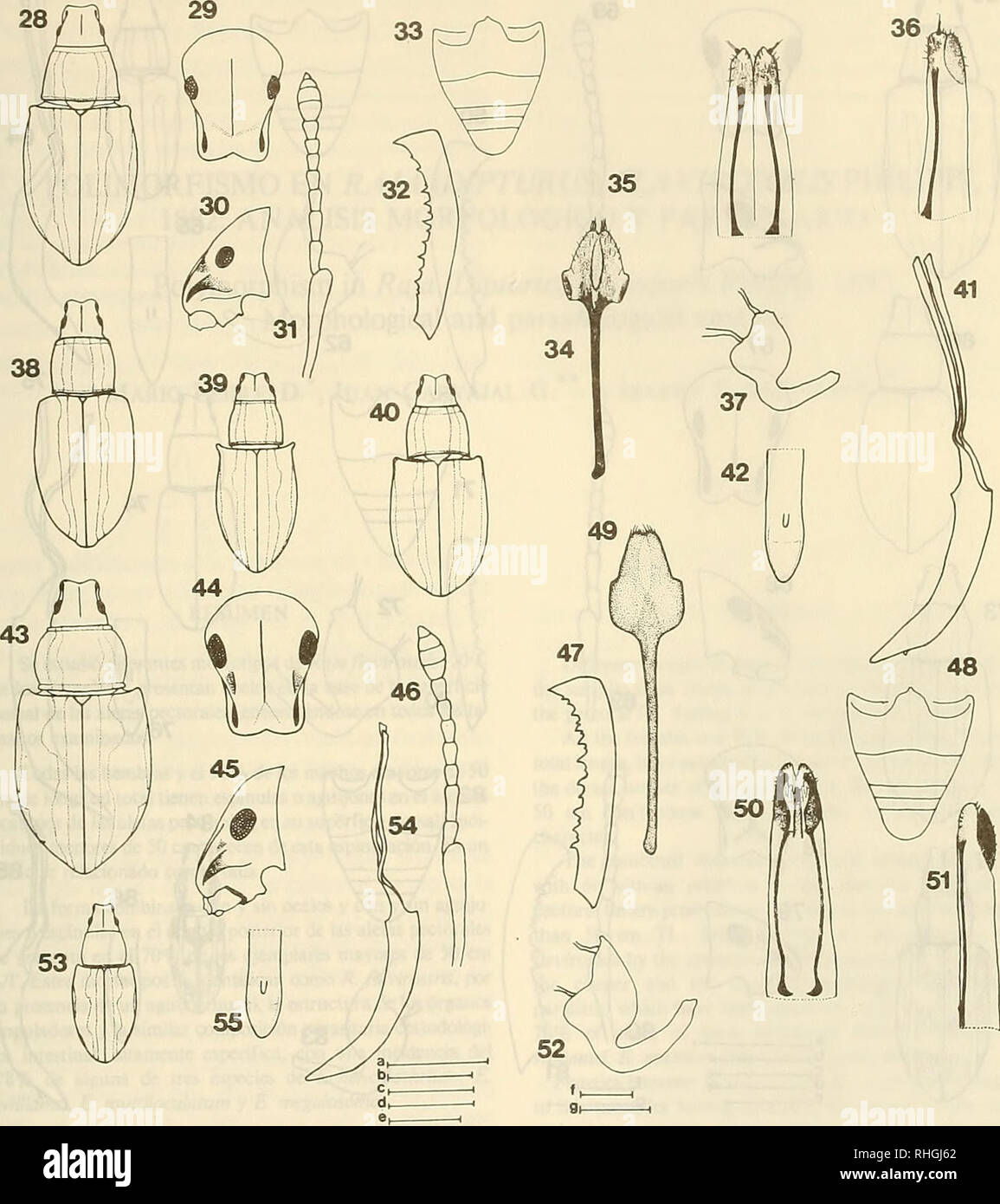 . Boletin de la Sociedad de Biología de Concepción. Sociedad de Biología de Concepción; Biology; Biology. Bol. Soc. Biol. Concepción. Chile. Tomo 61, 1990. Lámina 2. E. lizeri 9 morfotipo glaucus (Figs. 28-37): 28, vista dorsal de cabeza, pronoto y élitros; 29, cabeza en vista fron- tal; 30 cabeza en vista lateral; 31, antena; 32, tibia 1; 33, esternitos 1-5; 34, esternito 8; 35, oviscapto en vista ventral; 36, oviscapto en vista lateral; 37, espermateca. g morfotipo elongatus. Fig. 38, vista dorsal de cabeza, pronoto y élitros, g morfotipo griseus, Fig. 39, vista dorsal de cabeza, pronoto y é Stock Photohttps://www.alamy.com/image-license-details/?v=1https://www.alamy.com/boletin-de-la-sociedad-de-biologa-de-concepcin-sociedad-de-biologa-de-concepcin-biology-biology-bol-soc-biol-concepcin-chile-tomo-61-1990-lmina-2-e-lizeri-9-morfotipo-glaucus-figs-28-37-28-vista-dorsal-de-cabeza-pronoto-y-litros-29-cabeza-en-vista-fron-tal-30-cabeza-en-vista-lateral-31-antena-32-tibia-1-33-esternitos-1-5-34-esternito-8-35-oviscapto-en-vista-ventral-36-oviscapto-en-vista-lateral-37-espermateca-g-morfotipo-elongatus-fig-38-vista-dorsal-de-cabeza-pronoto-y-litros-g-morfotipo-griseus-fig-39-vista-dorsal-de-cabeza-pronoto-y-image234549450.html
. Boletin de la Sociedad de Biología de Concepción. Sociedad de Biología de Concepción; Biology; Biology. Bol. Soc. Biol. Concepción. Chile. Tomo 61, 1990. Lámina 2. E. lizeri 9 morfotipo glaucus (Figs. 28-37): 28, vista dorsal de cabeza, pronoto y élitros; 29, cabeza en vista fron- tal; 30 cabeza en vista lateral; 31, antena; 32, tibia 1; 33, esternitos 1-5; 34, esternito 8; 35, oviscapto en vista ventral; 36, oviscapto en vista lateral; 37, espermateca. g morfotipo elongatus. Fig. 38, vista dorsal de cabeza, pronoto y élitros, g morfotipo griseus, Fig. 39, vista dorsal de cabeza, pronoto y é Stock Photohttps://www.alamy.com/image-license-details/?v=1https://www.alamy.com/boletin-de-la-sociedad-de-biologa-de-concepcin-sociedad-de-biologa-de-concepcin-biology-biology-bol-soc-biol-concepcin-chile-tomo-61-1990-lmina-2-e-lizeri-9-morfotipo-glaucus-figs-28-37-28-vista-dorsal-de-cabeza-pronoto-y-litros-29-cabeza-en-vista-fron-tal-30-cabeza-en-vista-lateral-31-antena-32-tibia-1-33-esternitos-1-5-34-esternito-8-35-oviscapto-en-vista-ventral-36-oviscapto-en-vista-lateral-37-espermateca-g-morfotipo-elongatus-fig-38-vista-dorsal-de-cabeza-pronoto-y-litros-g-morfotipo-griseus-fig-39-vista-dorsal-de-cabeza-pronoto-y-image234549450.htmlRMRHGJ62–. Boletin de la Sociedad de Biología de Concepción. Sociedad de Biología de Concepción; Biology; Biology. Bol. Soc. Biol. Concepción. Chile. Tomo 61, 1990. Lámina 2. E. lizeri 9 morfotipo glaucus (Figs. 28-37): 28, vista dorsal de cabeza, pronoto y élitros; 29, cabeza en vista fron- tal; 30 cabeza en vista lateral; 31, antena; 32, tibia 1; 33, esternitos 1-5; 34, esternito 8; 35, oviscapto en vista ventral; 36, oviscapto en vista lateral; 37, espermateca. g morfotipo elongatus. Fig. 38, vista dorsal de cabeza, pronoto y élitros, g morfotipo griseus, Fig. 39, vista dorsal de cabeza, pronoto y é
 The South American Gray Fox, Lycalopex griseus, is also known as the chilla, the gray zorro or the Patagonia Fox. They are commonly found throughout P Stock Photohttps://www.alamy.com/image-license-details/?v=1https://www.alamy.com/the-south-american-gray-fox-lycalopex-griseus-is-also-known-as-the-chilla-the-gray-zorro-or-the-patagonia-fox-they-are-commonly-found-throughout-p-image371287518.html
The South American Gray Fox, Lycalopex griseus, is also known as the chilla, the gray zorro or the Patagonia Fox. They are commonly found throughout P Stock Photohttps://www.alamy.com/image-license-details/?v=1https://www.alamy.com/the-south-american-gray-fox-lycalopex-griseus-is-also-known-as-the-chilla-the-gray-zorro-or-the-patagonia-fox-they-are-commonly-found-throughout-p-image371287518.htmlRM2CG1H0E–The South American Gray Fox, Lycalopex griseus, is also known as the chilla, the gray zorro or the Patagonia Fox. They are commonly found throughout P
 A South American Gray Fox, Pseudalopex griseus, along the roadside in the Valle de Lerma near Salta, Argentina. Stock Photohttps://www.alamy.com/image-license-details/?v=1https://www.alamy.com/a-south-american-gray-fox-pseudalopex-griseus-along-the-roadside-in-the-valle-de-lerma-near-salta-argentina-image619912179.html
A South American Gray Fox, Pseudalopex griseus, along the roadside in the Valle de Lerma near Salta, Argentina. Stock Photohttps://www.alamy.com/image-license-details/?v=1https://www.alamy.com/a-south-american-gray-fox-pseudalopex-griseus-along-the-roadside-in-the-valle-de-lerma-near-salta-argentina-image619912179.htmlRM2Y0FC8K–A South American Gray Fox, Pseudalopex griseus, along the roadside in the Valle de Lerma near Salta, Argentina.
 The South American Gray Fox, Lycalopex griseus, is also known as the chilla, the gray zorro or the Patagonia Fox. They are commonly found throughout P Stock Photohttps://www.alamy.com/image-license-details/?v=1https://www.alamy.com/the-south-american-gray-fox-lycalopex-griseus-is-also-known-as-the-chilla-the-gray-zorro-or-the-patagonia-fox-they-are-commonly-found-throughout-p-image371294814.html
The South American Gray Fox, Lycalopex griseus, is also known as the chilla, the gray zorro or the Patagonia Fox. They are commonly found throughout P Stock Photohttps://www.alamy.com/image-license-details/?v=1https://www.alamy.com/the-south-american-gray-fox-lycalopex-griseus-is-also-known-as-the-chilla-the-gray-zorro-or-the-patagonia-fox-they-are-commonly-found-throughout-p-image371294814.htmlRM2CG1X92–The South American Gray Fox, Lycalopex griseus, is also known as the chilla, the gray zorro or the Patagonia Fox. They are commonly found throughout P
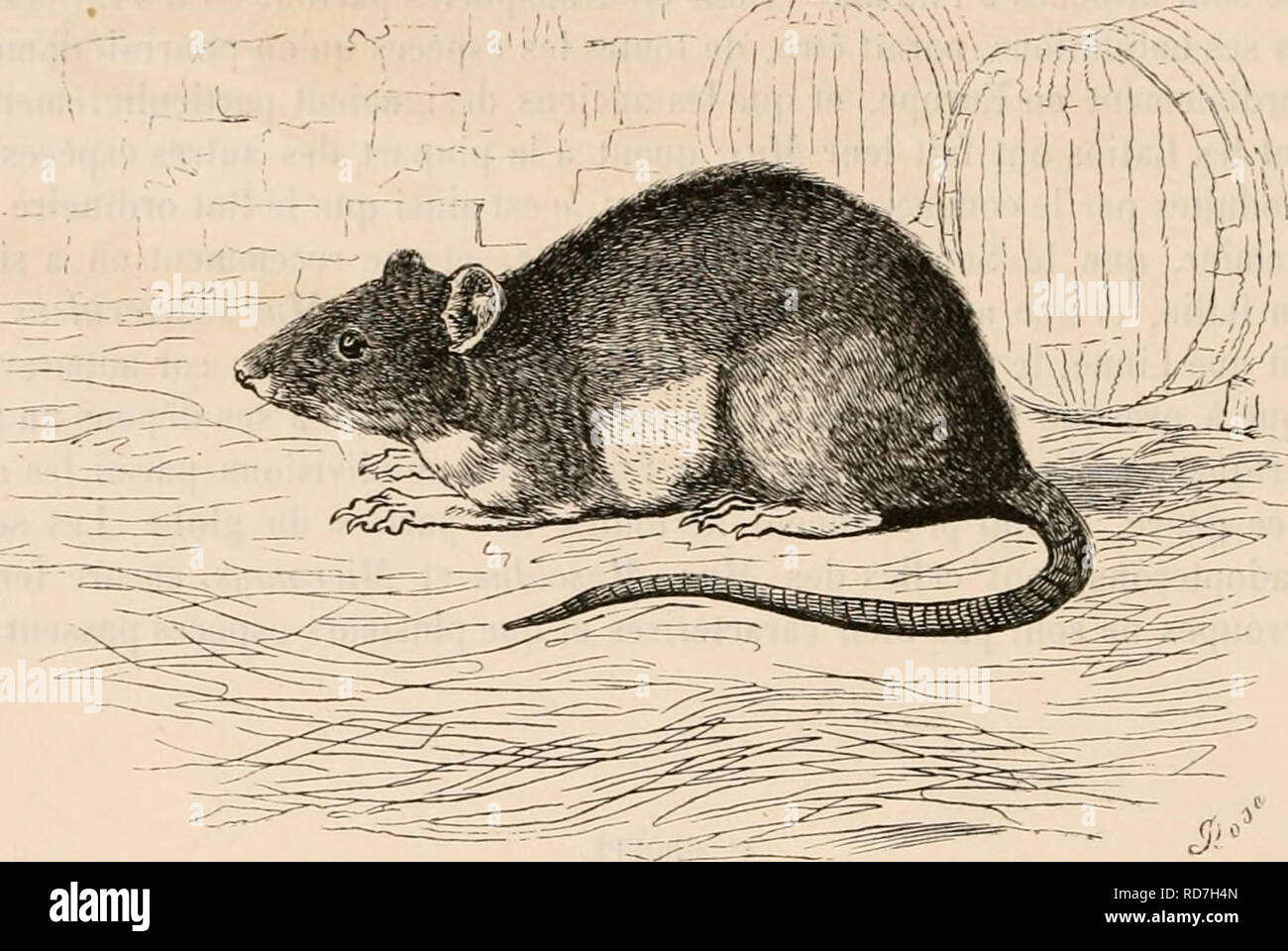 . Encyclopédie d'histoire naturelle; ou, Traité complet de cette science d'après les travaux des naturalistes les plus éminents de tous les pays et de toutes les époques: Buffon, Daubenton, Lacépède, G. Cuvier, F. Cuvier, Geoffroy Saint-Hilaire, Latreille, De Jussieu, Brongniart, etc. etc. Natural history. 100 HISTOIRE NATURELLE )naniis, l'allas ((lénomiiialion qui a pivvalii); c Mus griseus, PennanI; c'est sous la dénominalion (le SuHMULOT qu'il a ctc lo )his souvenl indiqué, vl c'est sous ce nom que Bufl'on l'a décrit; le Pouc du même auteur semble aussi n'en être qu'une simpl Stock Photohttps://www.alamy.com/image-license-details/?v=1https://www.alamy.com/encyclopdie-dhistoire-naturelle-ou-trait-complet-de-cette-science-daprs-les-travaux-des-naturalistes-les-plus-minents-de-tous-les-pays-et-de-toutes-les-poques-buffon-daubenton-lacpde-g-cuvier-f-cuvier-geoffroy-saint-hilaire-latreille-de-jussieu-brongniart-etc-etc-natural-history-100-histoire-naturelle-naniis-lallas-lnomiiialion-qui-a-pivvalii-c-mus-griseus-pennani-cest-sous-la-dnominalion-le-suhmulot-quil-a-ctc-lo-his-souvenl-indiqu-vl-cest-sous-ce-nom-que-buflon-la-dcrit-le-pouc-du-mme-auteur-semble-aussi-nen-tre-quune-simpl-image231892437.html
. Encyclopédie d'histoire naturelle; ou, Traité complet de cette science d'après les travaux des naturalistes les plus éminents de tous les pays et de toutes les époques: Buffon, Daubenton, Lacépède, G. Cuvier, F. Cuvier, Geoffroy Saint-Hilaire, Latreille, De Jussieu, Brongniart, etc. etc. Natural history. 100 HISTOIRE NATURELLE )naniis, l'allas ((lénomiiialion qui a pivvalii); c Mus griseus, PennanI; c'est sous la dénominalion (le SuHMULOT qu'il a ctc lo )his souvenl indiqué, vl c'est sous ce nom que Bufl'on l'a décrit; le Pouc du même auteur semble aussi n'en être qu'une simpl Stock Photohttps://www.alamy.com/image-license-details/?v=1https://www.alamy.com/encyclopdie-dhistoire-naturelle-ou-trait-complet-de-cette-science-daprs-les-travaux-des-naturalistes-les-plus-minents-de-tous-les-pays-et-de-toutes-les-poques-buffon-daubenton-lacpde-g-cuvier-f-cuvier-geoffroy-saint-hilaire-latreille-de-jussieu-brongniart-etc-etc-natural-history-100-histoire-naturelle-naniis-lallas-lnomiiialion-qui-a-pivvalii-c-mus-griseus-pennani-cest-sous-la-dnominalion-le-suhmulot-quil-a-ctc-lo-his-souvenl-indiqu-vl-cest-sous-ce-nom-que-buflon-la-dcrit-le-pouc-du-mme-auteur-semble-aussi-nen-tre-quune-simpl-image231892437.htmlRMRD7H4N–. Encyclopédie d'histoire naturelle; ou, Traité complet de cette science d'après les travaux des naturalistes les plus éminents de tous les pays et de toutes les époques: Buffon, Daubenton, Lacépède, G. Cuvier, F. Cuvier, Geoffroy Saint-Hilaire, Latreille, De Jussieu, Brongniart, etc. etc. Natural history. 100 HISTOIRE NATURELLE )naniis, l'allas ((lénomiiialion qui a pivvalii); c Mus griseus, PennanI; c'est sous la dénominalion (le SuHMULOT qu'il a ctc lo )his souvenl indiqué, vl c'est sous ce nom que Bufl'on l'a décrit; le Pouc du même auteur semble aussi n'en être qu'une simpl
 A South American Gray Fox, Pseudalopex griseus, along the roadside in the Valle de Lerma near Salta, Argentina. Stock Photohttps://www.alamy.com/image-license-details/?v=1https://www.alamy.com/a-south-american-gray-fox-pseudalopex-griseus-along-the-roadside-in-the-valle-de-lerma-near-salta-argentina-image619912202.html
A South American Gray Fox, Pseudalopex griseus, along the roadside in the Valle de Lerma near Salta, Argentina. Stock Photohttps://www.alamy.com/image-license-details/?v=1https://www.alamy.com/a-south-american-gray-fox-pseudalopex-griseus-along-the-roadside-in-the-valle-de-lerma-near-salta-argentina-image619912202.htmlRM2Y0FC9E–A South American Gray Fox, Pseudalopex griseus, along the roadside in the Valle de Lerma near Salta, Argentina.
 A forest of columnar Mexican Organ Pipe Cactus, Stenocereus griseus, known locally as yatu, along Boka Ascension, an inlet from the Caribbean Sea on t Stock Photohttps://www.alamy.com/image-license-details/?v=1https://www.alamy.com/a-forest-of-columnar-mexican-organ-pipe-cactus-stenocereus-griseus-known-locally-as-yatu-along-boka-ascension-an-inlet-from-the-caribbean-sea-on-t-image369643882.html
A forest of columnar Mexican Organ Pipe Cactus, Stenocereus griseus, known locally as yatu, along Boka Ascension, an inlet from the Caribbean Sea on t Stock Photohttps://www.alamy.com/image-license-details/?v=1https://www.alamy.com/a-forest-of-columnar-mexican-organ-pipe-cactus-stenocereus-griseus-known-locally-as-yatu-along-boka-ascension-an-inlet-from-the-caribbean-sea-on-t-image369643882.htmlRM2CDAMF6–A forest of columnar Mexican Organ Pipe Cactus, Stenocereus griseus, known locally as yatu, along Boka Ascension, an inlet from the Caribbean Sea on t
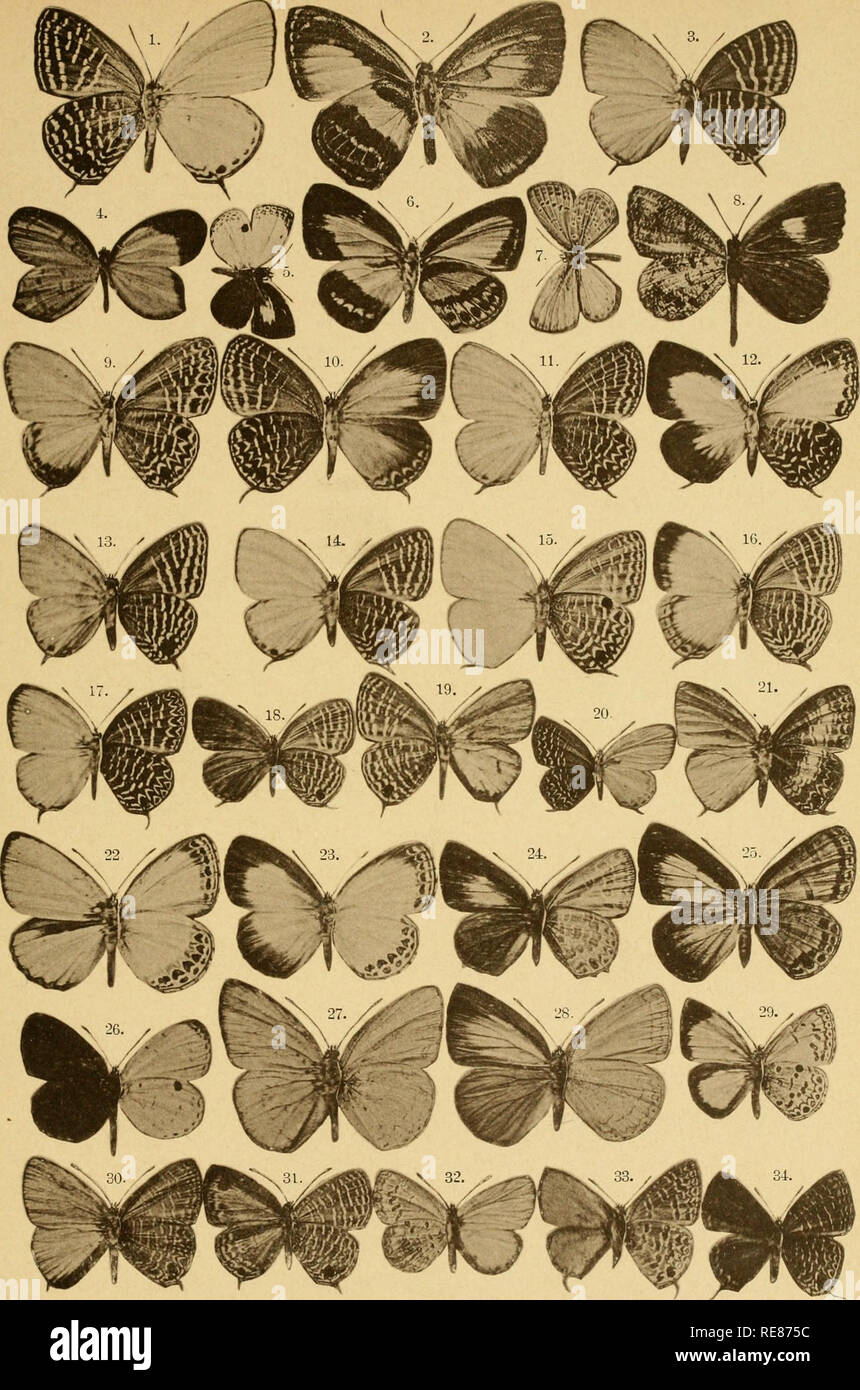 . Correspondenz-blatt des Entomologischen Vereins "Iris" zu Dresden. Lepidoptera. Corresp.-Bl. d. entomolog. Ver. „Iris", Dresden. Taf. IV.. l.PlebeiusSchatzi. 2. P. Eibbei. 3. P.Malaccanus. 4. Megalopalpus Simplex. 5. P.Lucifer. G. lllustris. 7. P. Albocoeruleus. 8. Allotinus Obscurus. 9. P. Snelleni. 10. P. v. Batjanensis. 11. P. Lucianus. 12.P. v.Aruamis. 13. P Callistus. 14. P. Insularis. 15. P. Callinicus. lü. P. Optimus. 17. P. Festivus. 18. P. Griseus. 19. P. Azureus. 20 P. Orestes. 21. P. Albofasciatus. 22. 23. P. Staudingeri. 24. P. Seltuttus Y. 25.P. Cabrorus. 26. P. P Stock Photohttps://www.alamy.com/image-license-details/?v=1https://www.alamy.com/correspondenz-blatt-des-entomologischen-vereins-quotirisquot-zu-dresden-lepidoptera-corresp-bl-d-entomolog-ver-irisquot-dresden-taf-iv-lplebeiusschatzi-2-p-eibbei-3-pmalaccanus-4-megalopalpus-simplex-5-plucifer-g-lllustris-7-p-albocoeruleus-8-allotinus-obscurus-9-p-snelleni-10-p-v-batjanensis-11-p-lucianus-12p-varuamis-13-p-callistus-14-p-insularis-15-p-callinicus-l-p-optimus-17-p-festivus-18-p-griseus-19-p-azureus-20-p-orestes-21-p-albofasciatus-22-23-p-staudingeri-24-p-seltuttus-y-25p-cabrorus-26-p-p-image232521224.html
. Correspondenz-blatt des Entomologischen Vereins "Iris" zu Dresden. Lepidoptera. Corresp.-Bl. d. entomolog. Ver. „Iris", Dresden. Taf. IV.. l.PlebeiusSchatzi. 2. P. Eibbei. 3. P.Malaccanus. 4. Megalopalpus Simplex. 5. P.Lucifer. G. lllustris. 7. P. Albocoeruleus. 8. Allotinus Obscurus. 9. P. Snelleni. 10. P. v. Batjanensis. 11. P. Lucianus. 12.P. v.Aruamis. 13. P Callistus. 14. P. Insularis. 15. P. Callinicus. lü. P. Optimus. 17. P. Festivus. 18. P. Griseus. 19. P. Azureus. 20 P. Orestes. 21. P. Albofasciatus. 22. 23. P. Staudingeri. 24. P. Seltuttus Y. 25.P. Cabrorus. 26. P. P Stock Photohttps://www.alamy.com/image-license-details/?v=1https://www.alamy.com/correspondenz-blatt-des-entomologischen-vereins-quotirisquot-zu-dresden-lepidoptera-corresp-bl-d-entomolog-ver-irisquot-dresden-taf-iv-lplebeiusschatzi-2-p-eibbei-3-pmalaccanus-4-megalopalpus-simplex-5-plucifer-g-lllustris-7-p-albocoeruleus-8-allotinus-obscurus-9-p-snelleni-10-p-v-batjanensis-11-p-lucianus-12p-varuamis-13-p-callistus-14-p-insularis-15-p-callinicus-l-p-optimus-17-p-festivus-18-p-griseus-19-p-azureus-20-p-orestes-21-p-albofasciatus-22-23-p-staudingeri-24-p-seltuttus-y-25p-cabrorus-26-p-p-image232521224.htmlRMRE875C–. Correspondenz-blatt des Entomologischen Vereins "Iris" zu Dresden. Lepidoptera. Corresp.-Bl. d. entomolog. Ver. „Iris", Dresden. Taf. IV.. l.PlebeiusSchatzi. 2. P. Eibbei. 3. P.Malaccanus. 4. Megalopalpus Simplex. 5. P.Lucifer. G. lllustris. 7. P. Albocoeruleus. 8. Allotinus Obscurus. 9. P. Snelleni. 10. P. v. Batjanensis. 11. P. Lucianus. 12.P. v.Aruamis. 13. P Callistus. 14. P. Insularis. 15. P. Callinicus. lü. P. Optimus. 17. P. Festivus. 18. P. Griseus. 19. P. Azureus. 20 P. Orestes. 21. P. Albofasciatus. 22. 23. P. Staudingeri. 24. P. Seltuttus Y. 25.P. Cabrorus. 26. P. P
 A South American Gray Fox, Pseudalopex griseus, along the roadside in the Valle de Lerma near Salta, Argentina. Stock Photohttps://www.alamy.com/image-license-details/?v=1https://www.alamy.com/a-south-american-gray-fox-pseudalopex-griseus-along-the-roadside-in-the-valle-de-lerma-near-salta-argentina-image619912254.html
A South American Gray Fox, Pseudalopex griseus, along the roadside in the Valle de Lerma near Salta, Argentina. Stock Photohttps://www.alamy.com/image-license-details/?v=1https://www.alamy.com/a-south-american-gray-fox-pseudalopex-griseus-along-the-roadside-in-the-valle-de-lerma-near-salta-argentina-image619912254.htmlRM2Y0FCBA–A South American Gray Fox, Pseudalopex griseus, along the roadside in the Valle de Lerma near Salta, Argentina.
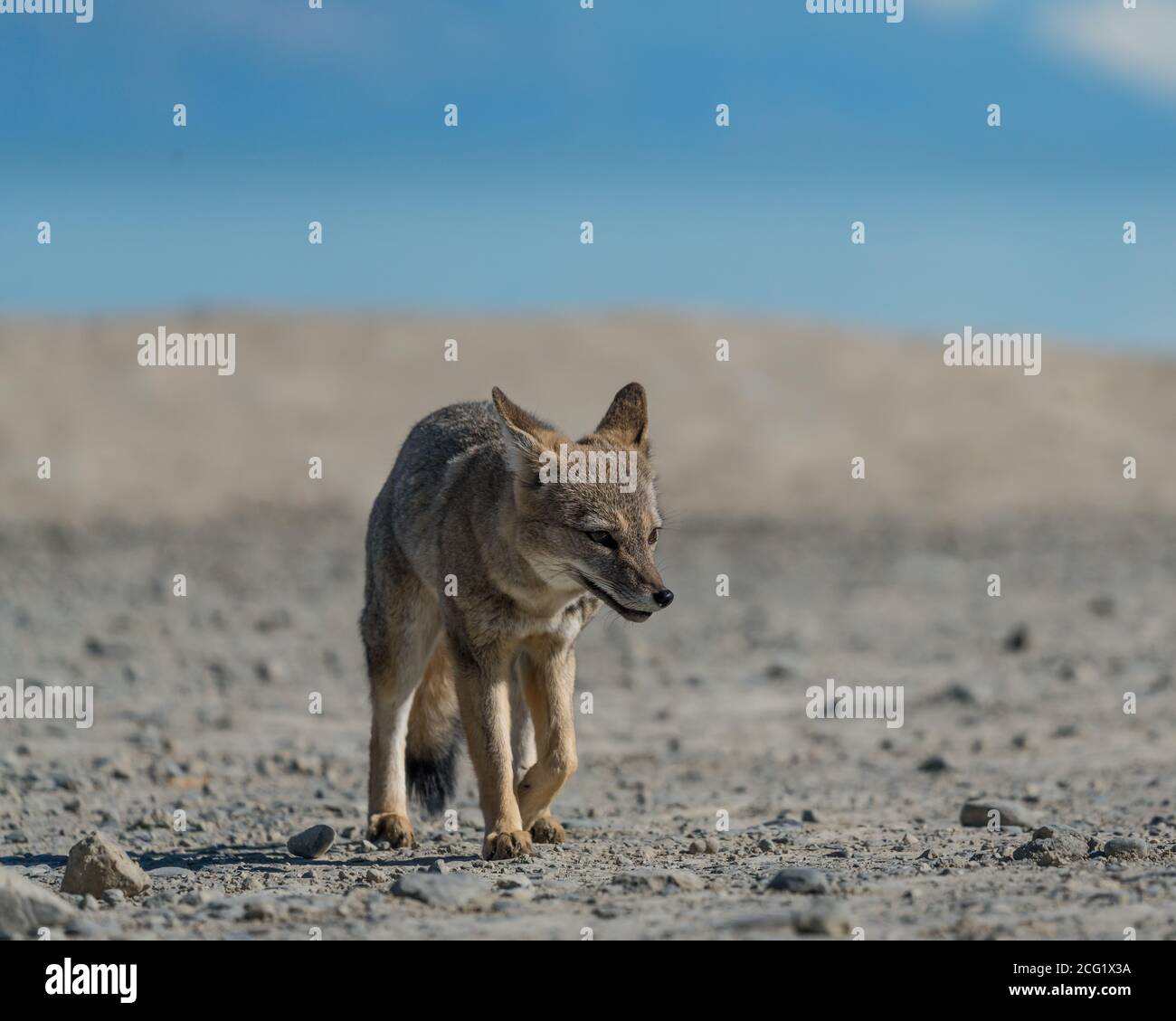 The South American Gray Fox, Lycalopex griseus, is also known as the chilla, the gray zorro or the Patagonia Fox. They are commonly found throughout P Stock Photohttps://www.alamy.com/image-license-details/?v=1https://www.alamy.com/the-south-american-gray-fox-lycalopex-griseus-is-also-known-as-the-chilla-the-gray-zorro-or-the-patagonia-fox-they-are-commonly-found-throughout-p-image371294654.html
The South American Gray Fox, Lycalopex griseus, is also known as the chilla, the gray zorro or the Patagonia Fox. They are commonly found throughout P Stock Photohttps://www.alamy.com/image-license-details/?v=1https://www.alamy.com/the-south-american-gray-fox-lycalopex-griseus-is-also-known-as-the-chilla-the-gray-zorro-or-the-patagonia-fox-they-are-commonly-found-throughout-p-image371294654.htmlRM2CG1X3A–The South American Gray Fox, Lycalopex griseus, is also known as the chilla, the gray zorro or the Patagonia Fox. They are commonly found throughout P
 . Bonner zoologische Monographien. Zoology. 280. Fig.4: Complement of sites for the conservation of lemurs in Madagascar generalist bamboo-eating primate Hapalemur griseus (fig.4). However, other western, southern and northern primates seem less derivative; Propithecus verreauxi (with four subspecies), P. tattersalli, Eulemur macaco, E. mongoz, and Mirza coquereli all apparently lack close relatives in the east. Two possible reasons for this pattern suggest themselves, and warrant further investigation; primates are probably less mobile in general than birds, and folivorous primates (e.g. Prop Stock Photohttps://www.alamy.com/image-license-details/?v=1https://www.alamy.com/bonner-zoologische-monographien-zoology-280-fig4-complement-of-sites-for-the-conservation-of-lemurs-in-madagascar-generalist-bamboo-eating-primate-hapalemur-griseus-fig4-however-other-western-southern-and-northern-primates-seem-less-derivative-propithecus-verreauxi-with-four-subspecies-p-tattersalli-eulemur-macaco-e-mongoz-and-mirza-coquereli-all-apparently-lack-close-relatives-in-the-east-two-possible-reasons-for-this-pattern-suggest-themselves-and-warrant-further-investigation-primates-are-probably-less-mobile-in-general-than-birds-and-folivorous-primates-eg-prop-image234486263.html
. Bonner zoologische Monographien. Zoology. 280. Fig.4: Complement of sites for the conservation of lemurs in Madagascar generalist bamboo-eating primate Hapalemur griseus (fig.4). However, other western, southern and northern primates seem less derivative; Propithecus verreauxi (with four subspecies), P. tattersalli, Eulemur macaco, E. mongoz, and Mirza coquereli all apparently lack close relatives in the east. Two possible reasons for this pattern suggest themselves, and warrant further investigation; primates are probably less mobile in general than birds, and folivorous primates (e.g. Prop Stock Photohttps://www.alamy.com/image-license-details/?v=1https://www.alamy.com/bonner-zoologische-monographien-zoology-280-fig4-complement-of-sites-for-the-conservation-of-lemurs-in-madagascar-generalist-bamboo-eating-primate-hapalemur-griseus-fig4-however-other-western-southern-and-northern-primates-seem-less-derivative-propithecus-verreauxi-with-four-subspecies-p-tattersalli-eulemur-macaco-e-mongoz-and-mirza-coquereli-all-apparently-lack-close-relatives-in-the-east-two-possible-reasons-for-this-pattern-suggest-themselves-and-warrant-further-investigation-primates-are-probably-less-mobile-in-general-than-birds-and-folivorous-primates-eg-prop-image234486263.htmlRMRHDNHB–. Bonner zoologische Monographien. Zoology. 280. Fig.4: Complement of sites for the conservation of lemurs in Madagascar generalist bamboo-eating primate Hapalemur griseus (fig.4). However, other western, southern and northern primates seem less derivative; Propithecus verreauxi (with four subspecies), P. tattersalli, Eulemur macaco, E. mongoz, and Mirza coquereli all apparently lack close relatives in the east. Two possible reasons for this pattern suggest themselves, and warrant further investigation; primates are probably less mobile in general than birds, and folivorous primates (e.g. Prop
 A South American Gray Fox, Pseudalopex griseus, along the roadside in the Valle de Lerma near Salta, Argentina. Stock Photohttps://www.alamy.com/image-license-details/?v=1https://www.alamy.com/a-south-american-gray-fox-pseudalopex-griseus-along-the-roadside-in-the-valle-de-lerma-near-salta-argentina-image619912183.html
A South American Gray Fox, Pseudalopex griseus, along the roadside in the Valle de Lerma near Salta, Argentina. Stock Photohttps://www.alamy.com/image-license-details/?v=1https://www.alamy.com/a-south-american-gray-fox-pseudalopex-griseus-along-the-roadside-in-the-valle-de-lerma-near-salta-argentina-image619912183.htmlRM2Y0FC8R–A South American Gray Fox, Pseudalopex griseus, along the roadside in the Valle de Lerma near Salta, Argentina.
 The South American Gray Fox, Lycalopex griseus, is also known as the chilla, the gray zorro or the Patagonia Fox. They are commonly found throughout P Stock Photohttps://www.alamy.com/image-license-details/?v=1https://www.alamy.com/the-south-american-gray-fox-lycalopex-griseus-is-also-known-as-the-chilla-the-gray-zorro-or-the-patagonia-fox-they-are-commonly-found-throughout-p-image371287503.html
The South American Gray Fox, Lycalopex griseus, is also known as the chilla, the gray zorro or the Patagonia Fox. They are commonly found throughout P Stock Photohttps://www.alamy.com/image-license-details/?v=1https://www.alamy.com/the-south-american-gray-fox-lycalopex-griseus-is-also-known-as-the-chilla-the-gray-zorro-or-the-patagonia-fox-they-are-commonly-found-throughout-p-image371287503.htmlRM2CG1GYY–The South American Gray Fox, Lycalopex griseus, is also known as the chilla, the gray zorro or the Patagonia Fox. They are commonly found throughout P
 A wildlife caution sign for the Patagonian or South American Gray Fox in Talampaya National Park, La Rioja Province, Argentina. Stock Photohttps://www.alamy.com/image-license-details/?v=1https://www.alamy.com/a-wildlife-caution-sign-for-the-patagonian-or-south-american-gray-fox-in-talampaya-national-park-la-rioja-province-argentina-image560138437.html
A wildlife caution sign for the Patagonian or South American Gray Fox in Talampaya National Park, La Rioja Province, Argentina. Stock Photohttps://www.alamy.com/image-license-details/?v=1https://www.alamy.com/a-wildlife-caution-sign-for-the-patagonian-or-south-american-gray-fox-in-talampaya-national-park-la-rioja-province-argentina-image560138437.htmlRM2RF8E85–A wildlife caution sign for the Patagonian or South American Gray Fox in Talampaya National Park, La Rioja Province, Argentina.
 The South American Gray Fox, Lycalopex griseus, is also known as the chilla, the gray zorro or the Patagonia Fox. They are commonly found throughout P Stock Photohttps://www.alamy.com/image-license-details/?v=1https://www.alamy.com/the-south-american-gray-fox-lycalopex-griseus-is-also-known-as-the-chilla-the-gray-zorro-or-the-patagonia-fox-they-are-commonly-found-throughout-p-image371295283.html
The South American Gray Fox, Lycalopex griseus, is also known as the chilla, the gray zorro or the Patagonia Fox. They are commonly found throughout P Stock Photohttps://www.alamy.com/image-license-details/?v=1https://www.alamy.com/the-south-american-gray-fox-lycalopex-griseus-is-also-known-as-the-chilla-the-gray-zorro-or-the-patagonia-fox-they-are-commonly-found-throughout-p-image371295283.htmlRM2CG1XWR–The South American Gray Fox, Lycalopex griseus, is also known as the chilla, the gray zorro or the Patagonia Fox. They are commonly found throughout P
 . Die wissenschaftliche Ausbildung des Apothekerlehrlings und seine Vorbereitung zum Gehülfenexamen : mit Rücksicht auf die neuesten Anforderungen. Pharmacy; Chemistry; Physics; Botany; Education, Pharmacy. - 386 - lieh (albidus); schwarz (niger, ater); schwärzlich (nigricans, nigre- scens); grau (incanus, canus, canescens); aschgrau (cinereus, griseus); blass (pallidus); hellfarbig (laetus); schmutzig (sordidus); braun (fuscus, badius, fuliginosus); braunrot (rufus, ferrugineus): g e 1 b (luteus, citrinus, flavus); goldgelb (aureus); gelbweiss (ochroleucus); gelb- lich (lutescens, luteolus, f Stock Photohttps://www.alamy.com/image-license-details/?v=1https://www.alamy.com/die-wissenschaftliche-ausbildung-des-apothekerlehrlings-und-seine-vorbereitung-zum-gehlfenexamen-mit-rcksicht-auf-die-neuesten-anforderungen-pharmacy-chemistry-physics-botany-education-pharmacy-386-lieh-albidus-schwarz-niger-ater-schwrzlich-nigricans-nigre-scens-grau-incanus-canus-canescens-aschgrau-cinereus-griseus-blass-pallidus-hellfarbig-laetus-schmutzig-sordidus-braun-fuscus-badius-fuliginosus-braunrot-rufus-ferrugineus-g-e-1-b-luteus-citrinus-flavus-goldgelb-aureus-gelbweiss-ochroleucus-gelb-lich-lutescens-luteolus-f-image231399352.html
. Die wissenschaftliche Ausbildung des Apothekerlehrlings und seine Vorbereitung zum Gehülfenexamen : mit Rücksicht auf die neuesten Anforderungen. Pharmacy; Chemistry; Physics; Botany; Education, Pharmacy. - 386 - lieh (albidus); schwarz (niger, ater); schwärzlich (nigricans, nigre- scens); grau (incanus, canus, canescens); aschgrau (cinereus, griseus); blass (pallidus); hellfarbig (laetus); schmutzig (sordidus); braun (fuscus, badius, fuliginosus); braunrot (rufus, ferrugineus): g e 1 b (luteus, citrinus, flavus); goldgelb (aureus); gelbweiss (ochroleucus); gelb- lich (lutescens, luteolus, f Stock Photohttps://www.alamy.com/image-license-details/?v=1https://www.alamy.com/die-wissenschaftliche-ausbildung-des-apothekerlehrlings-und-seine-vorbereitung-zum-gehlfenexamen-mit-rcksicht-auf-die-neuesten-anforderungen-pharmacy-chemistry-physics-botany-education-pharmacy-386-lieh-albidus-schwarz-niger-ater-schwrzlich-nigricans-nigre-scens-grau-incanus-canus-canescens-aschgrau-cinereus-griseus-blass-pallidus-hellfarbig-laetus-schmutzig-sordidus-braun-fuscus-badius-fuliginosus-braunrot-rufus-ferrugineus-g-e-1-b-luteus-citrinus-flavus-goldgelb-aureus-gelbweiss-ochroleucus-gelb-lich-lutescens-luteolus-f-image231399352.htmlRMRCD46G–. Die wissenschaftliche Ausbildung des Apothekerlehrlings und seine Vorbereitung zum Gehülfenexamen : mit Rücksicht auf die neuesten Anforderungen. Pharmacy; Chemistry; Physics; Botany; Education, Pharmacy. - 386 - lieh (albidus); schwarz (niger, ater); schwärzlich (nigricans, nigre- scens); grau (incanus, canus, canescens); aschgrau (cinereus, griseus); blass (pallidus); hellfarbig (laetus); schmutzig (sordidus); braun (fuscus, badius, fuliginosus); braunrot (rufus, ferrugineus): g e 1 b (luteus, citrinus, flavus); goldgelb (aureus); gelbweiss (ochroleucus); gelb- lich (lutescens, luteolus, f
 A wildlife caution sign for the Patagonian or South American Gray Fox in Talampaya National Park, La Rioja Province, Argentina. Stock Photohttps://www.alamy.com/image-license-details/?v=1https://www.alamy.com/a-wildlife-caution-sign-for-the-patagonian-or-south-american-gray-fox-in-talampaya-national-park-la-rioja-province-argentina-image560138440.html
A wildlife caution sign for the Patagonian or South American Gray Fox in Talampaya National Park, La Rioja Province, Argentina. Stock Photohttps://www.alamy.com/image-license-details/?v=1https://www.alamy.com/a-wildlife-caution-sign-for-the-patagonian-or-south-american-gray-fox-in-talampaya-national-park-la-rioja-province-argentina-image560138440.htmlRM2RF8E88–A wildlife caution sign for the Patagonian or South American Gray Fox in Talampaya National Park, La Rioja Province, Argentina.
 The South American Gray Fox, Lycalopex griseus, is also known as the chilla, the gray zorro or the Patagonia Fox. They are commonly found throughout P Stock Photohttps://www.alamy.com/image-license-details/?v=1https://www.alamy.com/the-south-american-gray-fox-lycalopex-griseus-is-also-known-as-the-chilla-the-gray-zorro-or-the-patagonia-fox-they-are-commonly-found-throughout-p-image371294938.html
The South American Gray Fox, Lycalopex griseus, is also known as the chilla, the gray zorro or the Patagonia Fox. They are commonly found throughout P Stock Photohttps://www.alamy.com/image-license-details/?v=1https://www.alamy.com/the-south-american-gray-fox-lycalopex-griseus-is-also-known-as-the-chilla-the-gray-zorro-or-the-patagonia-fox-they-are-commonly-found-throughout-p-image371294938.htmlRM2CG1XDE–The South American Gray Fox, Lycalopex griseus, is also known as the chilla, the gray zorro or the Patagonia Fox. They are commonly found throughout P
 . El Hornero. Birds. 1921 G. Fiebrig: Aves del Paraguay 207 comprobamos estas diferencias de costum.bres en los estrigimorfos Caprimúlgidos, los que no obstante ser de vasta distribución, figuran entre los representantes típicos de estas regiones subtropicales y cuyo canto nocturno es de lo más im- presionante que se oye en las selvas paraguayas. Por esto no es nada extraño que el «Urutáu» por su voz melancólica haya fascinado el alma de los indígenas relacionándolo con una poesía muy trágica. Es característica del «Urutáu» (Nyctihius griseus), como de todos los ca- primúlgidos, una coloración Stock Photohttps://www.alamy.com/image-license-details/?v=1https://www.alamy.com/el-hornero-birds-1921-g-fiebrig-aves-del-paraguay-207-comprobamos-estas-diferencias-de-costumbres-en-los-estrigimorfos-caprimlgidos-los-que-no-obstante-ser-de-vasta-distribucin-figuran-entre-los-representantes-tpicos-de-estas-regiones-subtropicales-y-cuyo-canto-nocturno-es-de-lo-ms-im-presionante-que-se-oye-en-las-selvas-paraguayas-por-esto-no-es-nada-extrao-que-el-urutu-por-su-voz-melanclica-haya-fascinado-el-alma-de-los-indgenas-relacionndolo-con-una-poesa-muy-trgica-es-caracterstica-del-urutu-nyctihius-griseus-como-de-todos-los-ca-primlgidos-una-coloracin-image231417847.html
. El Hornero. Birds. 1921 G. Fiebrig: Aves del Paraguay 207 comprobamos estas diferencias de costum.bres en los estrigimorfos Caprimúlgidos, los que no obstante ser de vasta distribución, figuran entre los representantes típicos de estas regiones subtropicales y cuyo canto nocturno es de lo más im- presionante que se oye en las selvas paraguayas. Por esto no es nada extraño que el «Urutáu» por su voz melancólica haya fascinado el alma de los indígenas relacionándolo con una poesía muy trágica. Es característica del «Urutáu» (Nyctihius griseus), como de todos los ca- primúlgidos, una coloración Stock Photohttps://www.alamy.com/image-license-details/?v=1https://www.alamy.com/el-hornero-birds-1921-g-fiebrig-aves-del-paraguay-207-comprobamos-estas-diferencias-de-costumbres-en-los-estrigimorfos-caprimlgidos-los-que-no-obstante-ser-de-vasta-distribucin-figuran-entre-los-representantes-tpicos-de-estas-regiones-subtropicales-y-cuyo-canto-nocturno-es-de-lo-ms-im-presionante-que-se-oye-en-las-selvas-paraguayas-por-esto-no-es-nada-extrao-que-el-urutu-por-su-voz-melanclica-haya-fascinado-el-alma-de-los-indgenas-relacionndolo-con-una-poesa-muy-trgica-es-caracterstica-del-urutu-nyctihius-griseus-como-de-todos-los-ca-primlgidos-una-coloracin-image231417847.htmlRMRCDYR3–. El Hornero. Birds. 1921 G. Fiebrig: Aves del Paraguay 207 comprobamos estas diferencias de costum.bres en los estrigimorfos Caprimúlgidos, los que no obstante ser de vasta distribución, figuran entre los representantes típicos de estas regiones subtropicales y cuyo canto nocturno es de lo más im- presionante que se oye en las selvas paraguayas. Por esto no es nada extraño que el «Urutáu» por su voz melancólica haya fascinado el alma de los indígenas relacionándolo con una poesía muy trágica. Es característica del «Urutáu» (Nyctihius griseus), como de todos los ca- primúlgidos, una coloración
 The South American Gray Fox, Lycalopex griseus, is also known as the chilla, the gray zorro or the Patagonia Fox. They are commonly found throughout P Stock Photohttps://www.alamy.com/image-license-details/?v=1https://www.alamy.com/the-south-american-gray-fox-lycalopex-griseus-is-also-known-as-the-chilla-the-gray-zorro-or-the-patagonia-fox-they-are-commonly-found-throughout-p-image371294689.html
The South American Gray Fox, Lycalopex griseus, is also known as the chilla, the gray zorro or the Patagonia Fox. They are commonly found throughout P Stock Photohttps://www.alamy.com/image-license-details/?v=1https://www.alamy.com/the-south-american-gray-fox-lycalopex-griseus-is-also-known-as-the-chilla-the-gray-zorro-or-the-patagonia-fox-they-are-commonly-found-throughout-p-image371294689.htmlRM2CG1X4H–The South American Gray Fox, Lycalopex griseus, is also known as the chilla, the gray zorro or the Patagonia Fox. They are commonly found throughout P
RMRD90BG–. Iconographie et histoire naturelle des cole?opte?res d'Europe;. Beetles; Entomology. i. Eimectes Griseus ri". 1±. H. Lcander cf. 2. HvdaticTLS Sia^nalis o. 5. IL Ilvbiieri cf. 3. II. Grauimieiis o'. G. H. Transversalis cf.. Please note that these images are extracted from scanned page images that may have been digitally enhanced for readability - coloration and appearance of these illustrations may not perfectly resemble the original work.. Dejean, Pierre Franc?ois Marie Auguste, comte, 1780-1845. Paris, Me?quignon-Marvis
 The South American Gray Fox, Lycalopex griseus, is also known as the chilla, the gray zorro or the Patagonia Fox. They are commonly found throughout P Stock Photohttps://www.alamy.com/image-license-details/?v=1https://www.alamy.com/the-south-american-gray-fox-lycalopex-griseus-is-also-known-as-the-chilla-the-gray-zorro-or-the-patagonia-fox-they-are-commonly-found-throughout-p-image371294652.html
The South American Gray Fox, Lycalopex griseus, is also known as the chilla, the gray zorro or the Patagonia Fox. They are commonly found throughout P Stock Photohttps://www.alamy.com/image-license-details/?v=1https://www.alamy.com/the-south-american-gray-fox-lycalopex-griseus-is-also-known-as-the-chilla-the-gray-zorro-or-the-patagonia-fox-they-are-commonly-found-throughout-p-image371294652.htmlRM2CG1X38–The South American Gray Fox, Lycalopex griseus, is also known as the chilla, the gray zorro or the Patagonia Fox. They are commonly found throughout P
 The South American Gray Fox, Lycalopex griseus, is also known as the chilla, the gray zorro or the Patagonia Fox. They are commonly found throughout P Stock Photohttps://www.alamy.com/image-license-details/?v=1https://www.alamy.com/the-south-american-gray-fox-lycalopex-griseus-is-also-known-as-the-chilla-the-gray-zorro-or-the-patagonia-fox-they-are-commonly-found-throughout-p-image371295004.html
The South American Gray Fox, Lycalopex griseus, is also known as the chilla, the gray zorro or the Patagonia Fox. They are commonly found throughout P Stock Photohttps://www.alamy.com/image-license-details/?v=1https://www.alamy.com/the-south-american-gray-fox-lycalopex-griseus-is-also-known-as-the-chilla-the-gray-zorro-or-the-patagonia-fox-they-are-commonly-found-throughout-p-image371295004.htmlRM2CG1XFT–The South American Gray Fox, Lycalopex griseus, is also known as the chilla, the gray zorro or the Patagonia Fox. They are commonly found throughout P
 The South American Gray Fox, Lycalopex griseus, is also known as the chilla, the gray zorro or the Patagonia Fox. They are commonly found throughout P Stock Photohttps://www.alamy.com/image-license-details/?v=1https://www.alamy.com/the-south-american-gray-fox-lycalopex-griseus-is-also-known-as-the-chilla-the-gray-zorro-or-the-patagonia-fox-they-are-commonly-found-throughout-p-image371295064.html
The South American Gray Fox, Lycalopex griseus, is also known as the chilla, the gray zorro or the Patagonia Fox. They are commonly found throughout P Stock Photohttps://www.alamy.com/image-license-details/?v=1https://www.alamy.com/the-south-american-gray-fox-lycalopex-griseus-is-also-known-as-the-chilla-the-gray-zorro-or-the-patagonia-fox-they-are-commonly-found-throughout-p-image371295064.htmlRM2CG1XJ0–The South American Gray Fox, Lycalopex griseus, is also known as the chilla, the gray zorro or the Patagonia Fox. They are commonly found throughout P
 The South American Gray Fox, Lycalopex griseus, is also known as the chilla, the gray zorro or the Patagonia Fox. They are commonly found throughout P Stock Photohttps://www.alamy.com/image-license-details/?v=1https://www.alamy.com/the-south-american-gray-fox-lycalopex-griseus-is-also-known-as-the-chilla-the-gray-zorro-or-the-patagonia-fox-they-are-commonly-found-throughout-p-image371294666.html
The South American Gray Fox, Lycalopex griseus, is also known as the chilla, the gray zorro or the Patagonia Fox. They are commonly found throughout P Stock Photohttps://www.alamy.com/image-license-details/?v=1https://www.alamy.com/the-south-american-gray-fox-lycalopex-griseus-is-also-known-as-the-chilla-the-gray-zorro-or-the-patagonia-fox-they-are-commonly-found-throughout-p-image371294666.htmlRM2CG1X3P–The South American Gray Fox, Lycalopex griseus, is also known as the chilla, the gray zorro or the Patagonia Fox. They are commonly found throughout P
 The South American Gray Fox, Lycalopex griseus, is also known as the chilla, the gray zorro or the Patagonia Fox. They are commonly found throughout P Stock Photohttps://www.alamy.com/image-license-details/?v=1https://www.alamy.com/the-south-american-gray-fox-lycalopex-griseus-is-also-known-as-the-chilla-the-gray-zorro-or-the-patagonia-fox-they-are-commonly-found-throughout-p-image371294656.html
The South American Gray Fox, Lycalopex griseus, is also known as the chilla, the gray zorro or the Patagonia Fox. They are commonly found throughout P Stock Photohttps://www.alamy.com/image-license-details/?v=1https://www.alamy.com/the-south-american-gray-fox-lycalopex-griseus-is-also-known-as-the-chilla-the-gray-zorro-or-the-patagonia-fox-they-are-commonly-found-throughout-p-image371294656.htmlRM2CG1X3C–The South American Gray Fox, Lycalopex griseus, is also known as the chilla, the gray zorro or the Patagonia Fox. They are commonly found throughout P
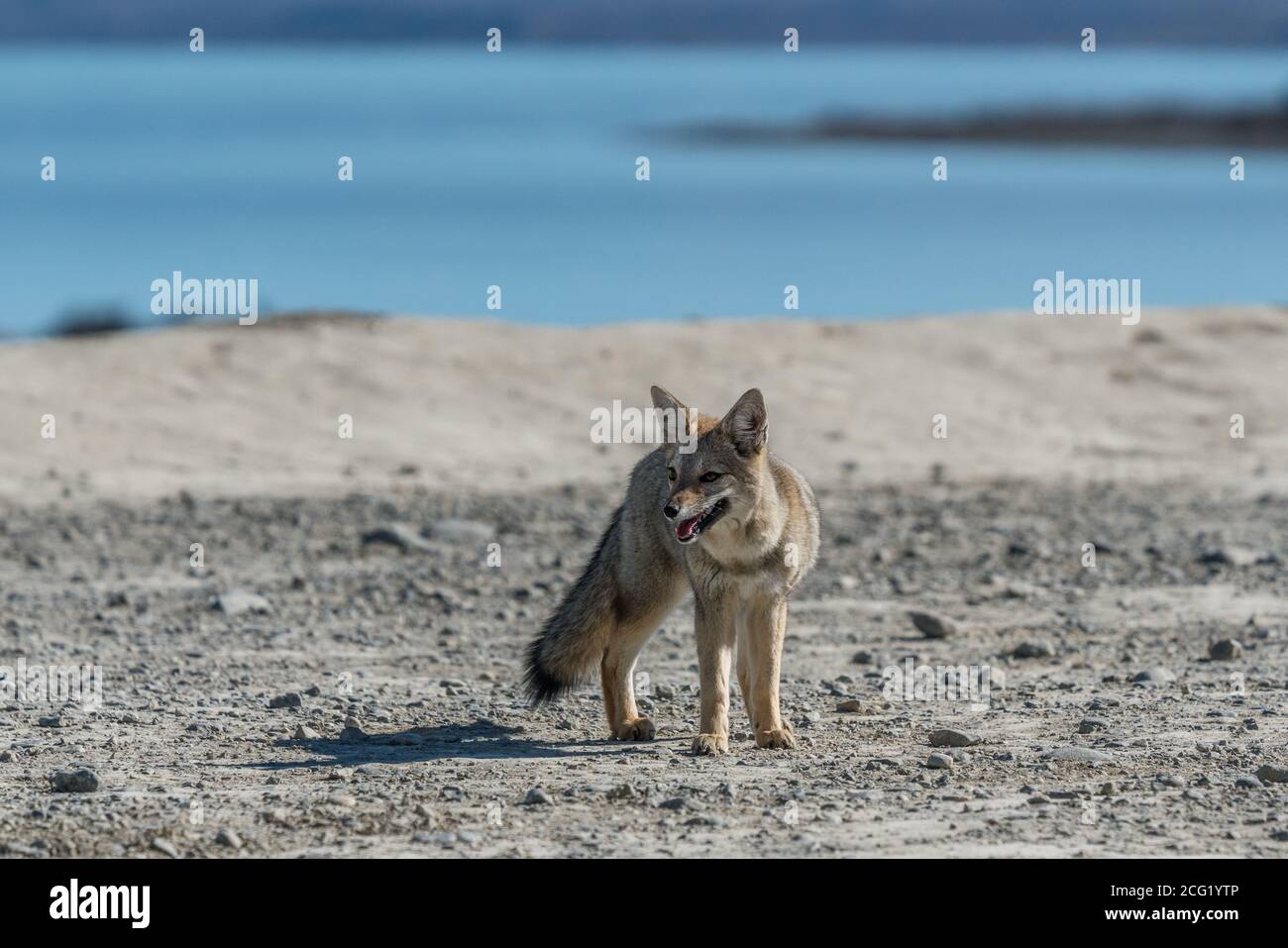 The South American Gray Fox, Lycalopex griseus, is also known as the chilla, the gray zorro or the Patagonia Fox. They are commonly found throughout P Stock Photohttps://www.alamy.com/image-license-details/?v=1https://www.alamy.com/the-south-american-gray-fox-lycalopex-griseus-is-also-known-as-the-chilla-the-gray-zorro-or-the-patagonia-fox-they-are-commonly-found-throughout-p-image371296038.html
The South American Gray Fox, Lycalopex griseus, is also known as the chilla, the gray zorro or the Patagonia Fox. They are commonly found throughout P Stock Photohttps://www.alamy.com/image-license-details/?v=1https://www.alamy.com/the-south-american-gray-fox-lycalopex-griseus-is-also-known-as-the-chilla-the-gray-zorro-or-the-patagonia-fox-they-are-commonly-found-throughout-p-image371296038.htmlRM2CG1YTP–The South American Gray Fox, Lycalopex griseus, is also known as the chilla, the gray zorro or the Patagonia Fox. They are commonly found throughout P
 The South American Gray Fox, Lycalopex griseus, is also known as the chilla, the gray zorro or the Patagonia Fox. They are commonly found throughout P Stock Photohttps://www.alamy.com/image-license-details/?v=1https://www.alamy.com/the-south-american-gray-fox-lycalopex-griseus-is-also-known-as-the-chilla-the-gray-zorro-or-the-patagonia-fox-they-are-commonly-found-throughout-p-image371294667.html
The South American Gray Fox, Lycalopex griseus, is also known as the chilla, the gray zorro or the Patagonia Fox. They are commonly found throughout P Stock Photohttps://www.alamy.com/image-license-details/?v=1https://www.alamy.com/the-south-american-gray-fox-lycalopex-griseus-is-also-known-as-the-chilla-the-gray-zorro-or-the-patagonia-fox-they-are-commonly-found-throughout-p-image371294667.htmlRM2CG1X3R–The South American Gray Fox, Lycalopex griseus, is also known as the chilla, the gray zorro or the Patagonia Fox. They are commonly found throughout P
 The South American Gray Fox, Lycalopex griseus, is also known as the chilla, the gray zorro or the Patagonia Fox. They are commonly found throughout P Stock Photohttps://www.alamy.com/image-license-details/?v=1https://www.alamy.com/the-south-american-gray-fox-lycalopex-griseus-is-also-known-as-the-chilla-the-gray-zorro-or-the-patagonia-fox-they-are-commonly-found-throughout-p-image371294881.html
The South American Gray Fox, Lycalopex griseus, is also known as the chilla, the gray zorro or the Patagonia Fox. They are commonly found throughout P Stock Photohttps://www.alamy.com/image-license-details/?v=1https://www.alamy.com/the-south-american-gray-fox-lycalopex-griseus-is-also-known-as-the-chilla-the-gray-zorro-or-the-patagonia-fox-they-are-commonly-found-throughout-p-image371294881.htmlRM2CG1XBD–The South American Gray Fox, Lycalopex griseus, is also known as the chilla, the gray zorro or the Patagonia Fox. They are commonly found throughout P
 The South American Gray Fox, Lycalopex griseus, is also known as the chilla, the gray zorro or the Patagonia Fox. They are commonly found throughout P Stock Photohttps://www.alamy.com/image-license-details/?v=1https://www.alamy.com/the-south-american-gray-fox-lycalopex-griseus-is-also-known-as-the-chilla-the-gray-zorro-or-the-patagonia-fox-they-are-commonly-found-throughout-p-image371295275.html
The South American Gray Fox, Lycalopex griseus, is also known as the chilla, the gray zorro or the Patagonia Fox. They are commonly found throughout P Stock Photohttps://www.alamy.com/image-license-details/?v=1https://www.alamy.com/the-south-american-gray-fox-lycalopex-griseus-is-also-known-as-the-chilla-the-gray-zorro-or-the-patagonia-fox-they-are-commonly-found-throughout-p-image371295275.htmlRM2CG1XWF–The South American Gray Fox, Lycalopex griseus, is also known as the chilla, the gray zorro or the Patagonia Fox. They are commonly found throughout P
 The South American Gray Fox, Lycalopex griseus, is also known as the chilla, the gray zorro or the Patagonia Fox. They are commonly found throughout P Stock Photohttps://www.alamy.com/image-license-details/?v=1https://www.alamy.com/the-south-american-gray-fox-lycalopex-griseus-is-also-known-as-the-chilla-the-gray-zorro-or-the-patagonia-fox-they-are-commonly-found-throughout-p-image371294690.html
The South American Gray Fox, Lycalopex griseus, is also known as the chilla, the gray zorro or the Patagonia Fox. They are commonly found throughout P Stock Photohttps://www.alamy.com/image-license-details/?v=1https://www.alamy.com/the-south-american-gray-fox-lycalopex-griseus-is-also-known-as-the-chilla-the-gray-zorro-or-the-patagonia-fox-they-are-commonly-found-throughout-p-image371294690.htmlRM2CG1X4J–The South American Gray Fox, Lycalopex griseus, is also known as the chilla, the gray zorro or the Patagonia Fox. They are commonly found throughout P
 The South American Gray Fox, Lycalopex griseus, is also known as the chilla, the gray zorro or the Patagonia Fox. They are commonly found throughout P Stock Photohttps://www.alamy.com/image-license-details/?v=1https://www.alamy.com/the-south-american-gray-fox-lycalopex-griseus-is-also-known-as-the-chilla-the-gray-zorro-or-the-patagonia-fox-they-are-commonly-found-throughout-p-image371295179.html
The South American Gray Fox, Lycalopex griseus, is also known as the chilla, the gray zorro or the Patagonia Fox. They are commonly found throughout P Stock Photohttps://www.alamy.com/image-license-details/?v=1https://www.alamy.com/the-south-american-gray-fox-lycalopex-griseus-is-also-known-as-the-chilla-the-gray-zorro-or-the-patagonia-fox-they-are-commonly-found-throughout-p-image371295179.htmlRM2CG1XP3–The South American Gray Fox, Lycalopex griseus, is also known as the chilla, the gray zorro or the Patagonia Fox. They are commonly found throughout P
 The South American Gray Fox, Lycalopex griseus, is also known as the chilla, the gray zorro or the Patagonia Fox. They are commonly found throughout P Stock Photohttps://www.alamy.com/image-license-details/?v=1https://www.alamy.com/the-south-american-gray-fox-lycalopex-griseus-is-also-known-as-the-chilla-the-gray-zorro-or-the-patagonia-fox-they-are-commonly-found-throughout-p-image371294822.html
The South American Gray Fox, Lycalopex griseus, is also known as the chilla, the gray zorro or the Patagonia Fox. They are commonly found throughout P Stock Photohttps://www.alamy.com/image-license-details/?v=1https://www.alamy.com/the-south-american-gray-fox-lycalopex-griseus-is-also-known-as-the-chilla-the-gray-zorro-or-the-patagonia-fox-they-are-commonly-found-throughout-p-image371294822.htmlRM2CG1X9A–The South American Gray Fox, Lycalopex griseus, is also known as the chilla, the gray zorro or the Patagonia Fox. They are commonly found throughout P
 The South American Gray Fox, Lycalopex griseus, is also known as the chilla, the gray zorro or the Patagonia Fox. They are commonly found throughout P Stock Photohttps://www.alamy.com/image-license-details/?v=1https://www.alamy.com/the-south-american-gray-fox-lycalopex-griseus-is-also-known-as-the-chilla-the-gray-zorro-or-the-patagonia-fox-they-are-commonly-found-throughout-p-image371294661.html
The South American Gray Fox, Lycalopex griseus, is also known as the chilla, the gray zorro or the Patagonia Fox. They are commonly found throughout P Stock Photohttps://www.alamy.com/image-license-details/?v=1https://www.alamy.com/the-south-american-gray-fox-lycalopex-griseus-is-also-known-as-the-chilla-the-gray-zorro-or-the-patagonia-fox-they-are-commonly-found-throughout-p-image371294661.htmlRM2CG1X3H–The South American Gray Fox, Lycalopex griseus, is also known as the chilla, the gray zorro or the Patagonia Fox. They are commonly found throughout P
 The South American Gray Fox, Lycalopex griseus, is also known as the chilla, the gray zorro or the Patagonia Fox. They are commonly found throughout P Stock Photohttps://www.alamy.com/image-license-details/?v=1https://www.alamy.com/the-south-american-gray-fox-lycalopex-griseus-is-also-known-as-the-chilla-the-gray-zorro-or-the-patagonia-fox-they-are-commonly-found-throughout-p-image371294884.html
The South American Gray Fox, Lycalopex griseus, is also known as the chilla, the gray zorro or the Patagonia Fox. They are commonly found throughout P Stock Photohttps://www.alamy.com/image-license-details/?v=1https://www.alamy.com/the-south-american-gray-fox-lycalopex-griseus-is-also-known-as-the-chilla-the-gray-zorro-or-the-patagonia-fox-they-are-commonly-found-throughout-p-image371294884.htmlRM2CG1XBG–The South American Gray Fox, Lycalopex griseus, is also known as the chilla, the gray zorro or the Patagonia Fox. They are commonly found throughout P
 The South American Gray Fox, Lycalopex griseus, is also known as the chilla, the gray zorro or the Patagonia Fox. They are commonly found throughout P Stock Photohttps://www.alamy.com/image-license-details/?v=1https://www.alamy.com/the-south-american-gray-fox-lycalopex-griseus-is-also-known-as-the-chilla-the-gray-zorro-or-the-patagonia-fox-they-are-commonly-found-throughout-p-image371294877.html
The South American Gray Fox, Lycalopex griseus, is also known as the chilla, the gray zorro or the Patagonia Fox. They are commonly found throughout P Stock Photohttps://www.alamy.com/image-license-details/?v=1https://www.alamy.com/the-south-american-gray-fox-lycalopex-griseus-is-also-known-as-the-chilla-the-gray-zorro-or-the-patagonia-fox-they-are-commonly-found-throughout-p-image371294877.htmlRM2CG1XB9–The South American Gray Fox, Lycalopex griseus, is also known as the chilla, the gray zorro or the Patagonia Fox. They are commonly found throughout P
 The South American Gray Fox, Lycalopex griseus, is also known as the chilla, the gray zorro or the Patagonia Fox. They are commonly found throughout P Stock Photohttps://www.alamy.com/image-license-details/?v=1https://www.alamy.com/the-south-american-gray-fox-lycalopex-griseus-is-also-known-as-the-chilla-the-gray-zorro-or-the-patagonia-fox-they-are-commonly-found-throughout-p-image371295308.html
The South American Gray Fox, Lycalopex griseus, is also known as the chilla, the gray zorro or the Patagonia Fox. They are commonly found throughout P Stock Photohttps://www.alamy.com/image-license-details/?v=1https://www.alamy.com/the-south-american-gray-fox-lycalopex-griseus-is-also-known-as-the-chilla-the-gray-zorro-or-the-patagonia-fox-they-are-commonly-found-throughout-p-image371295308.htmlRM2CG1XXM–The South American Gray Fox, Lycalopex griseus, is also known as the chilla, the gray zorro or the Patagonia Fox. They are commonly found throughout P
 The South American Gray Fox, Lycalopex griseus, is also known as the chilla, the gray zorro or the Patagonia Fox. They are commonly found throughout P Stock Photohttps://www.alamy.com/image-license-details/?v=1https://www.alamy.com/the-south-american-gray-fox-lycalopex-griseus-is-also-known-as-the-chilla-the-gray-zorro-or-the-patagonia-fox-they-are-commonly-found-throughout-p-image371295287.html
The South American Gray Fox, Lycalopex griseus, is also known as the chilla, the gray zorro or the Patagonia Fox. They are commonly found throughout P Stock Photohttps://www.alamy.com/image-license-details/?v=1https://www.alamy.com/the-south-american-gray-fox-lycalopex-griseus-is-also-known-as-the-chilla-the-gray-zorro-or-the-patagonia-fox-they-are-commonly-found-throughout-p-image371295287.htmlRM2CG1XWY–The South American Gray Fox, Lycalopex griseus, is also known as the chilla, the gray zorro or the Patagonia Fox. They are commonly found throughout P